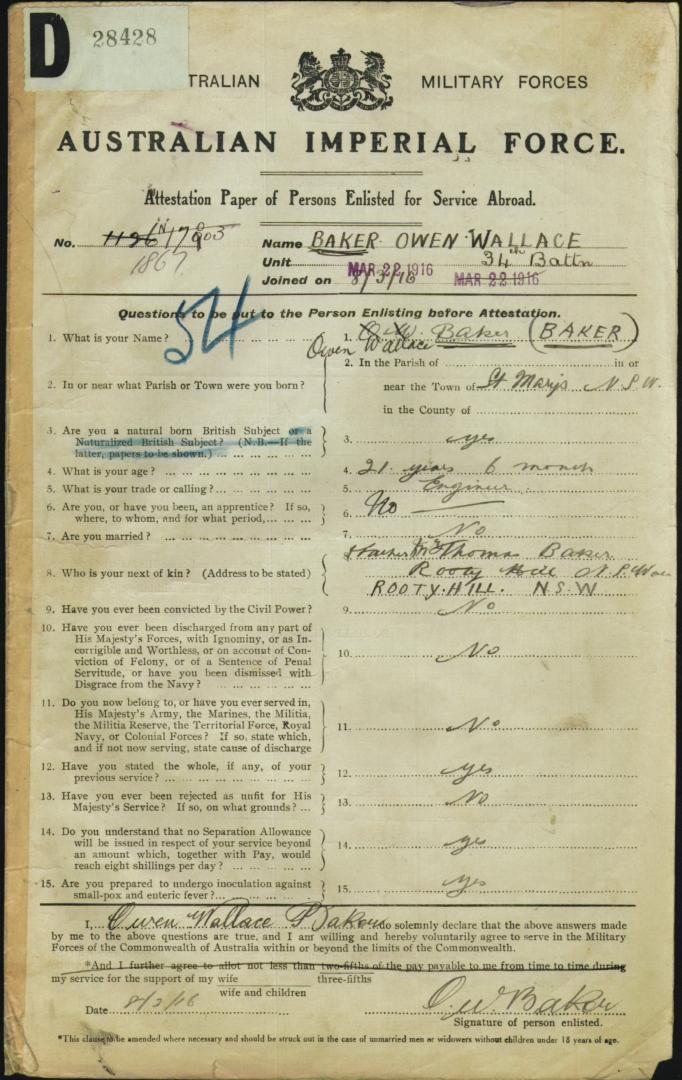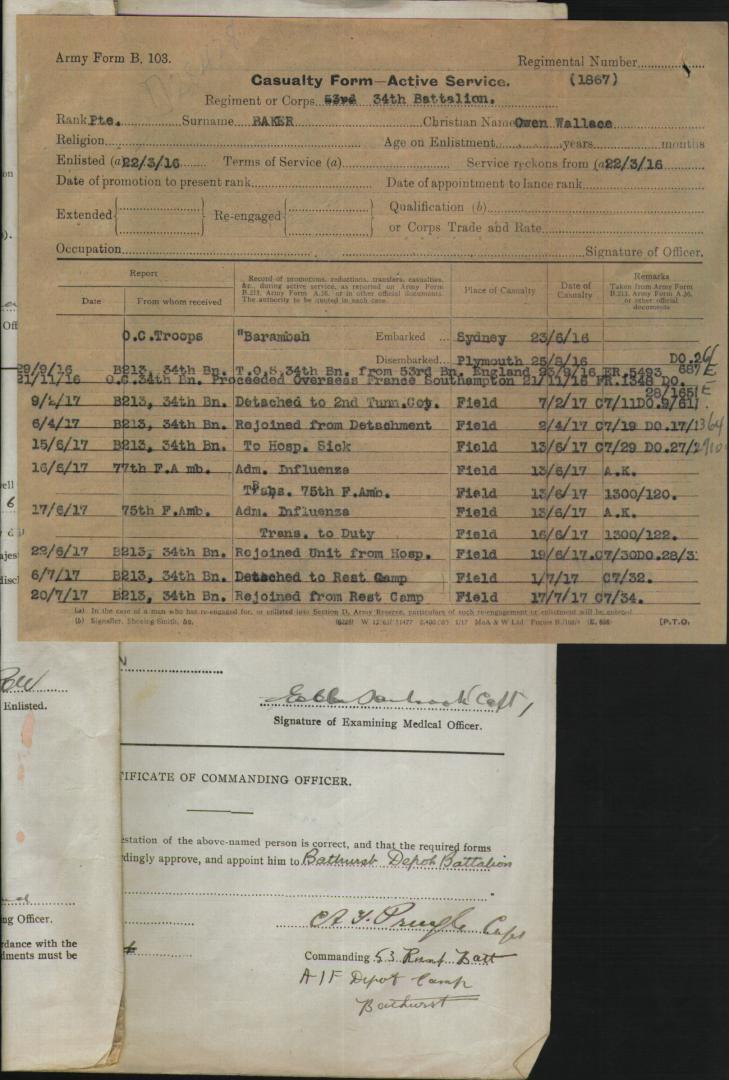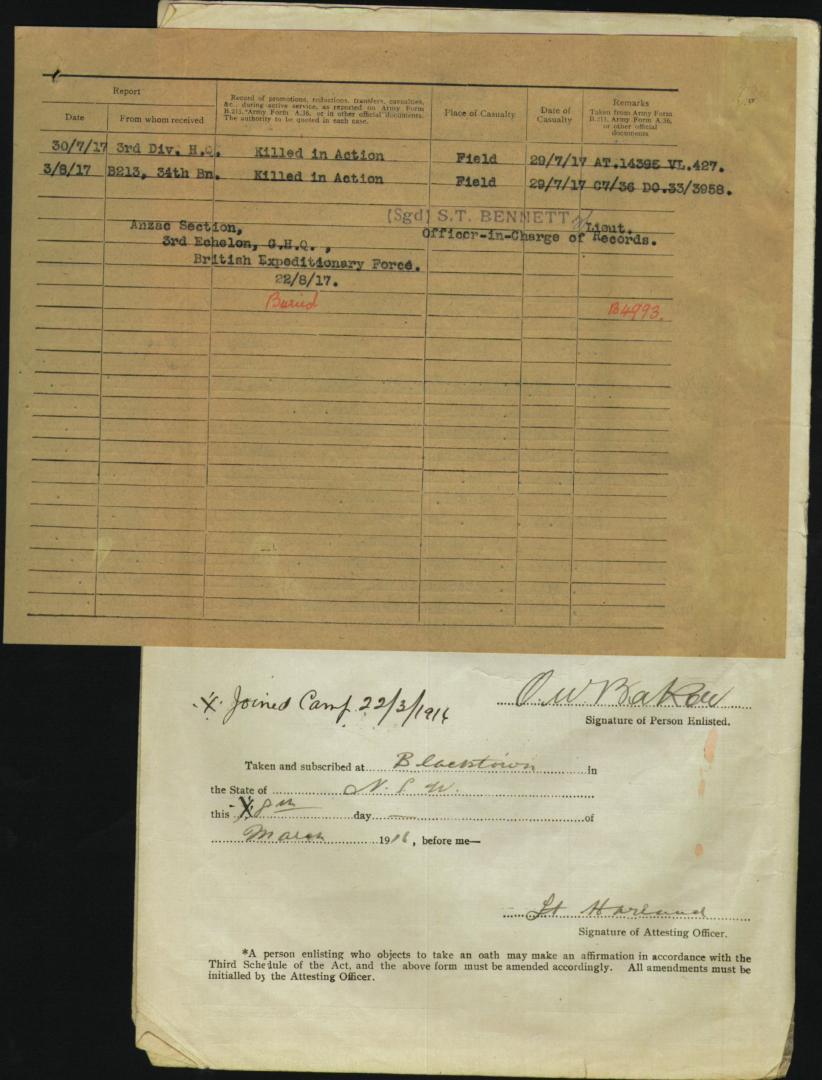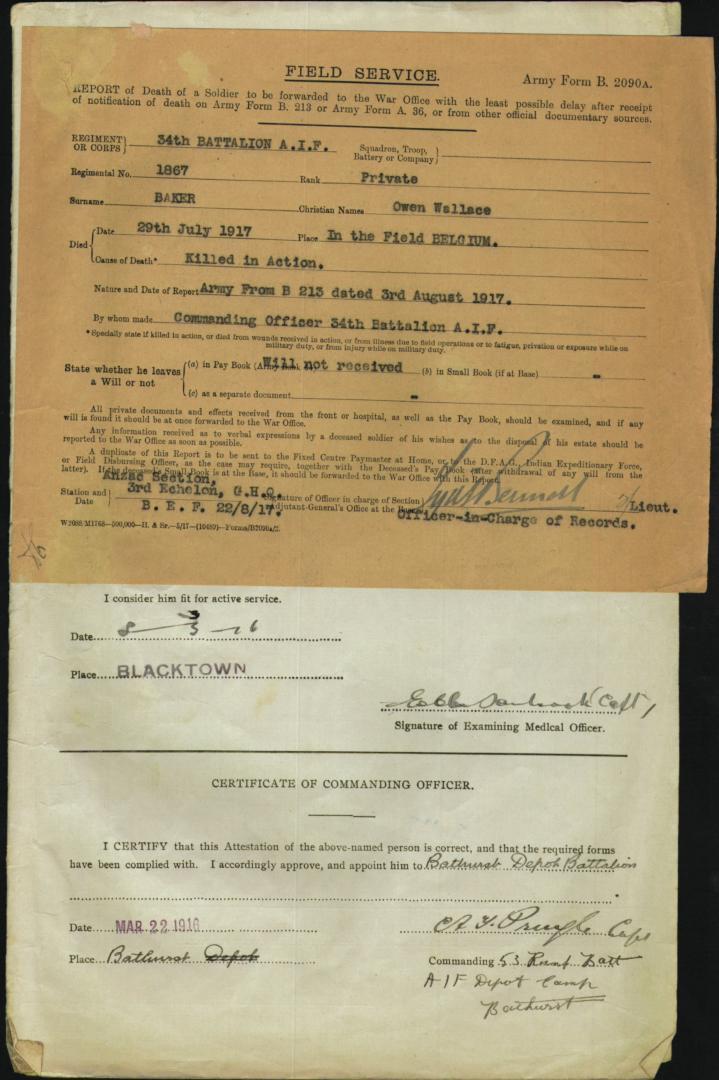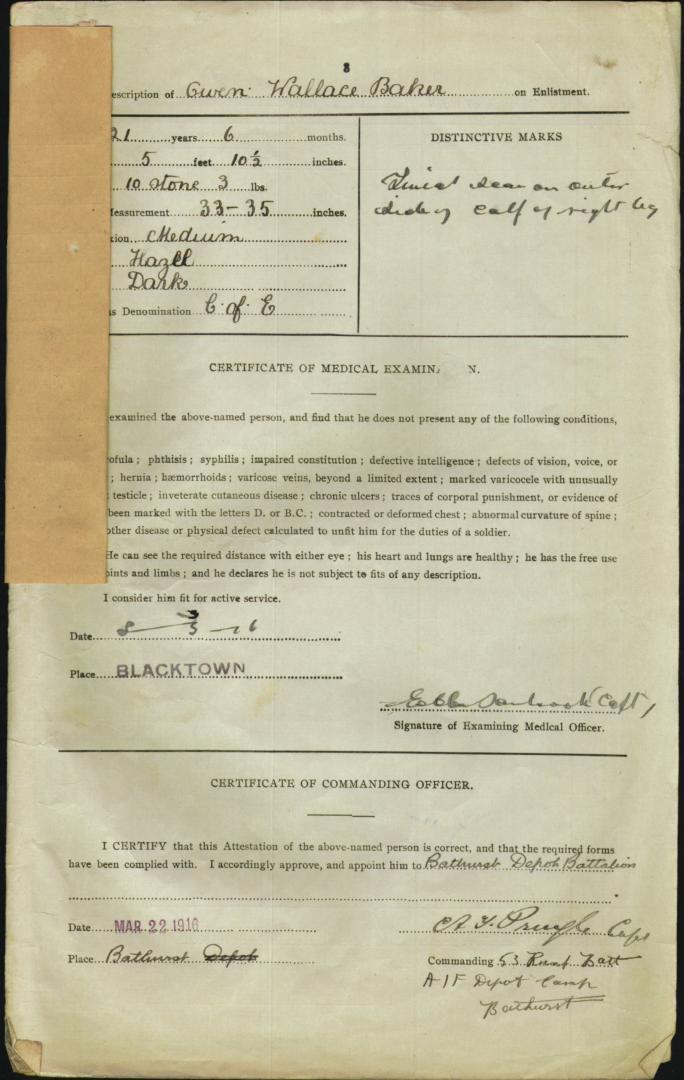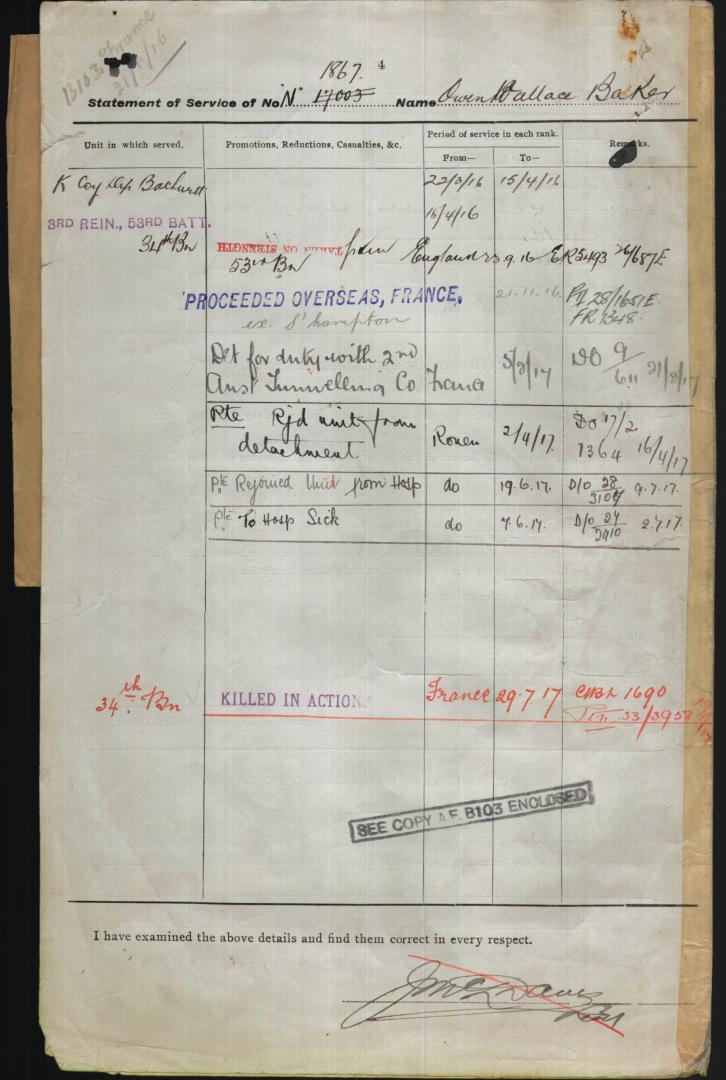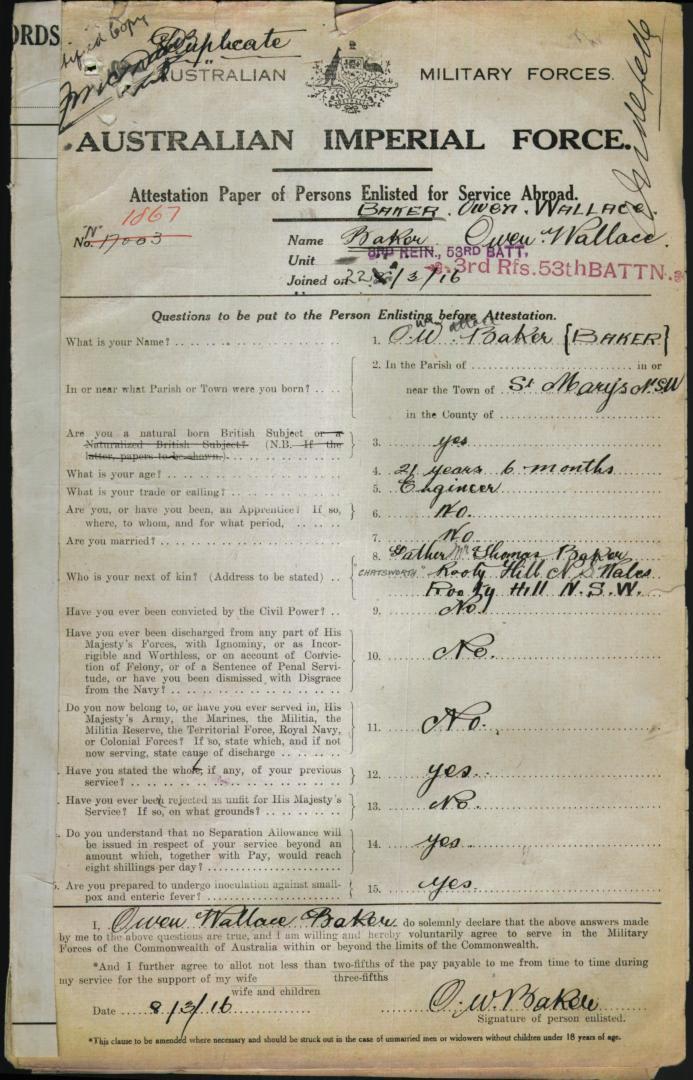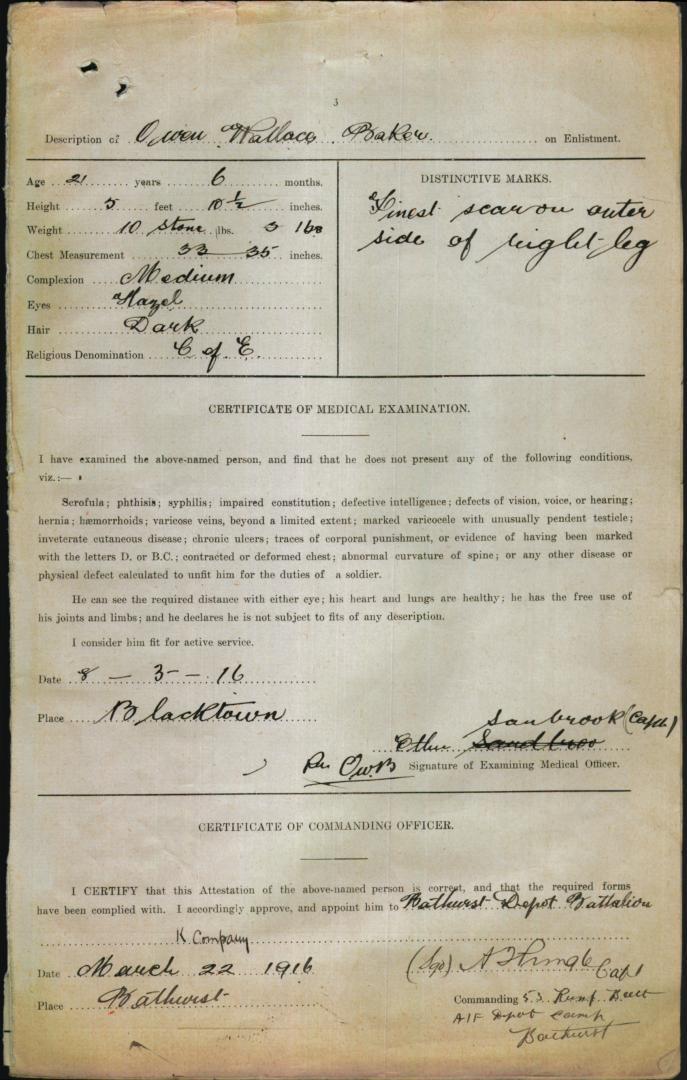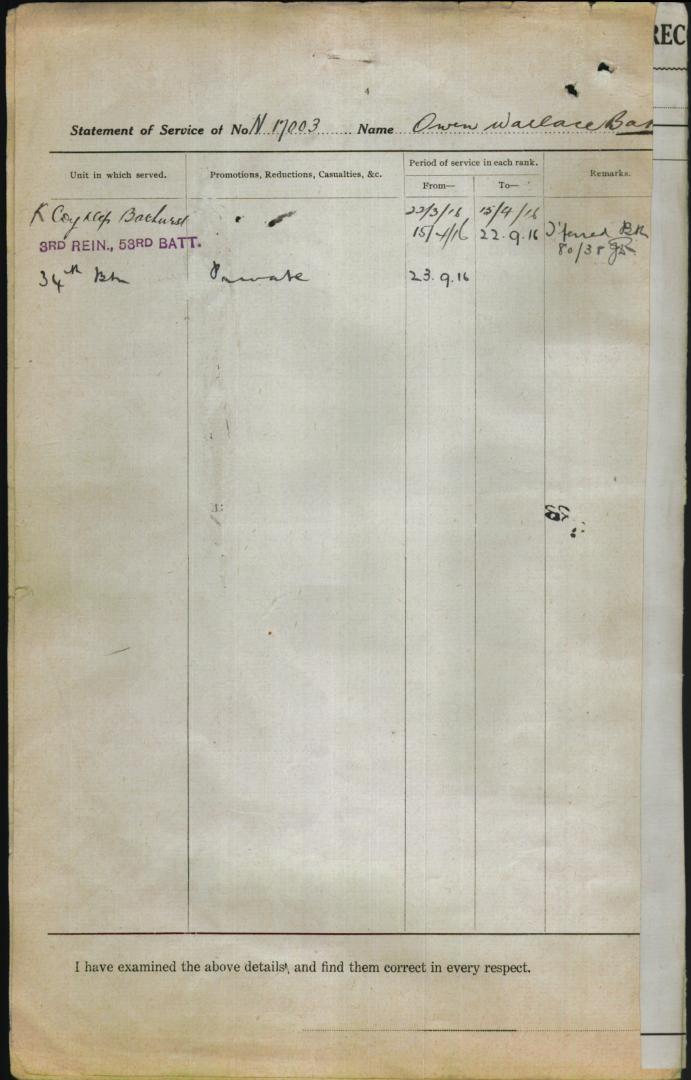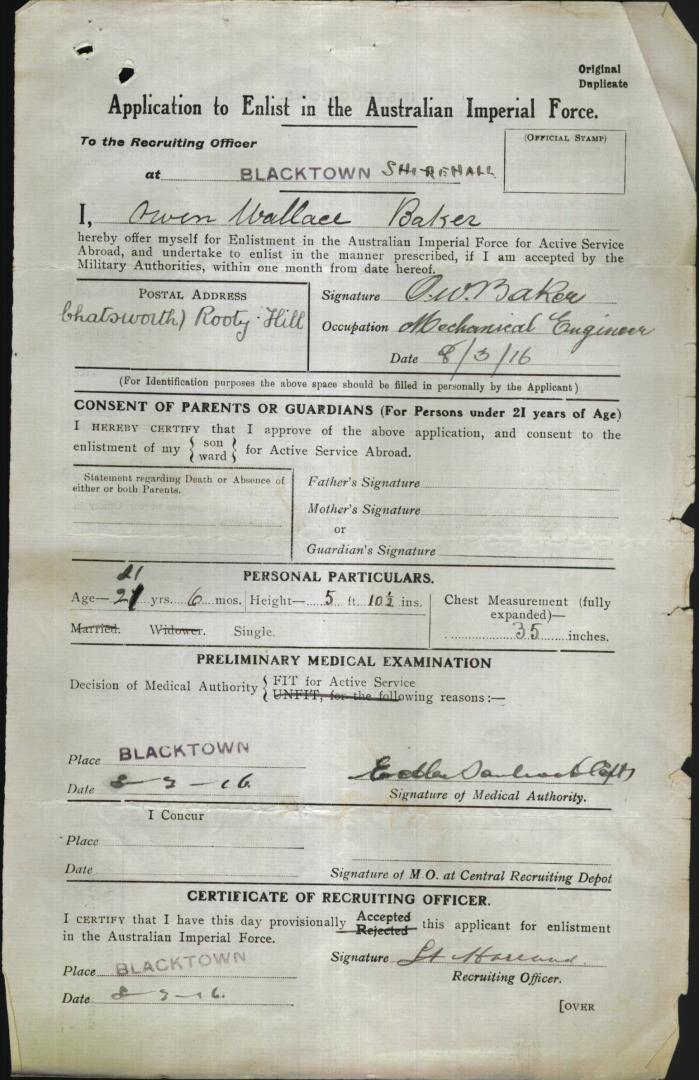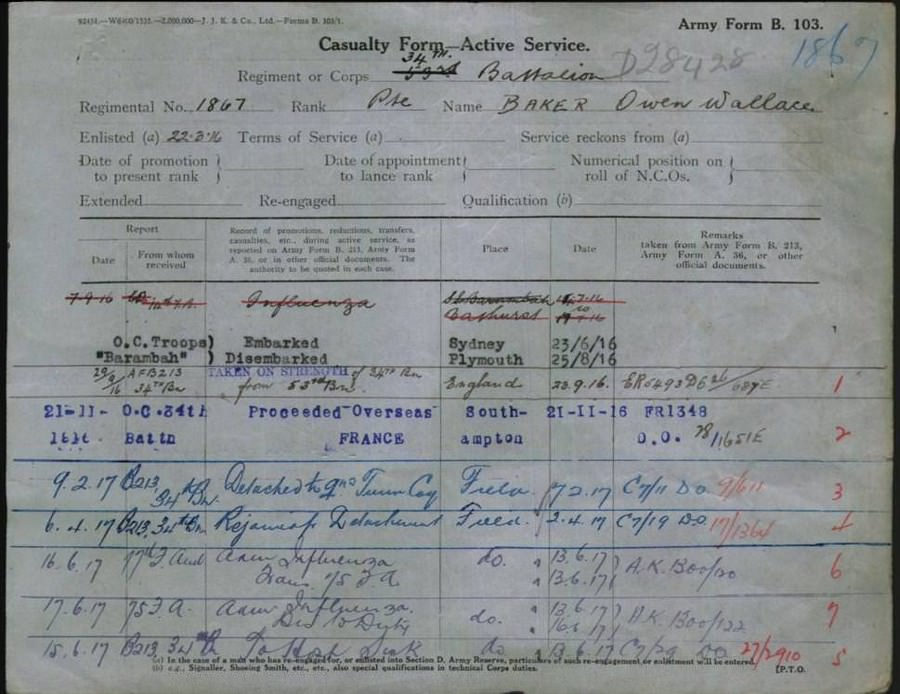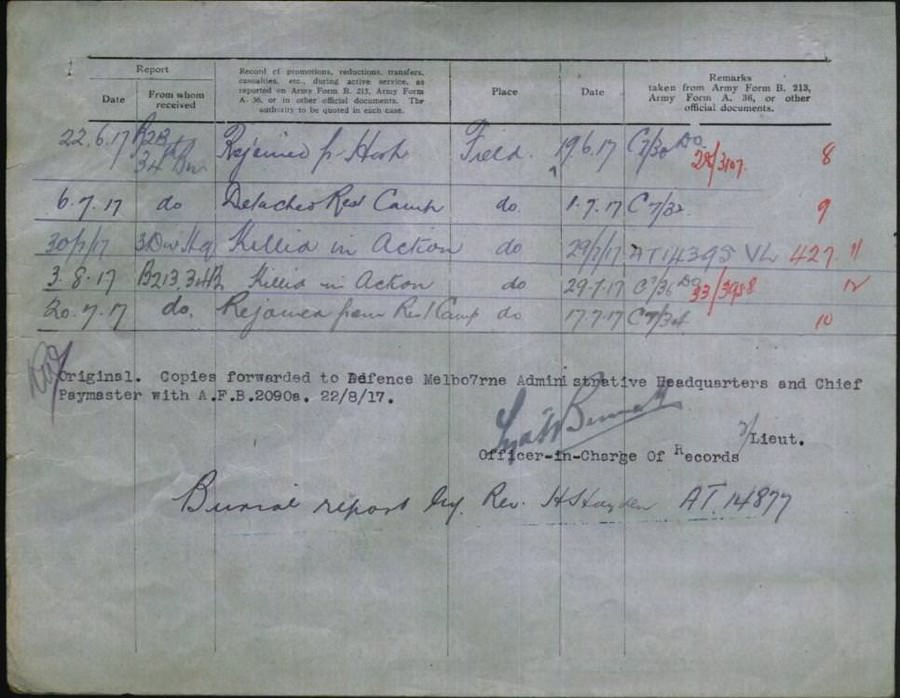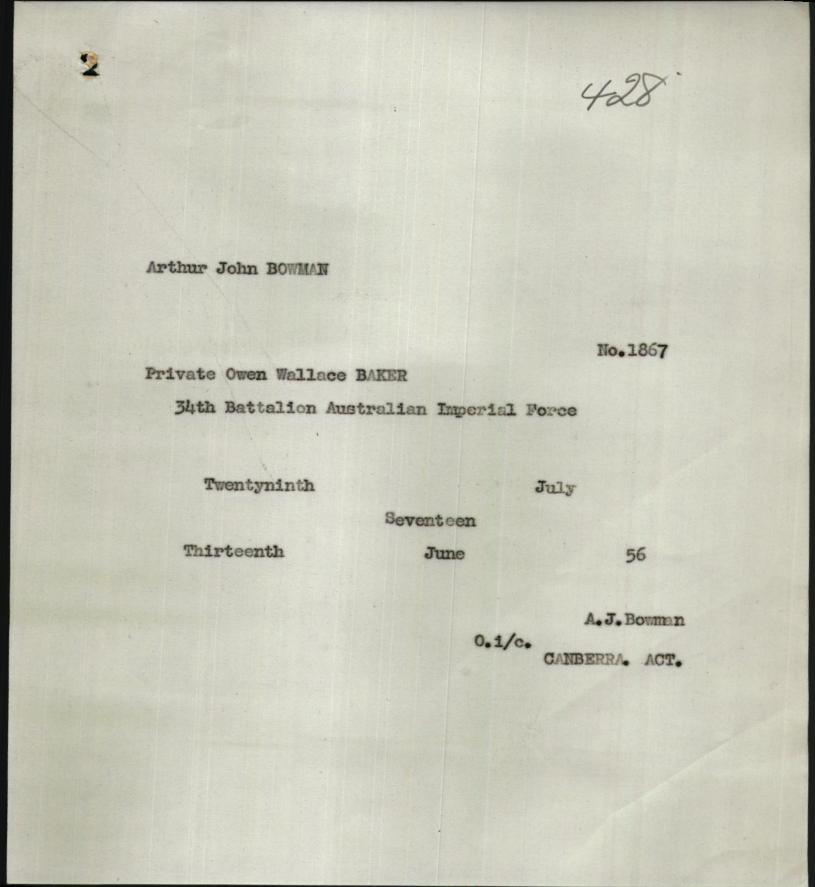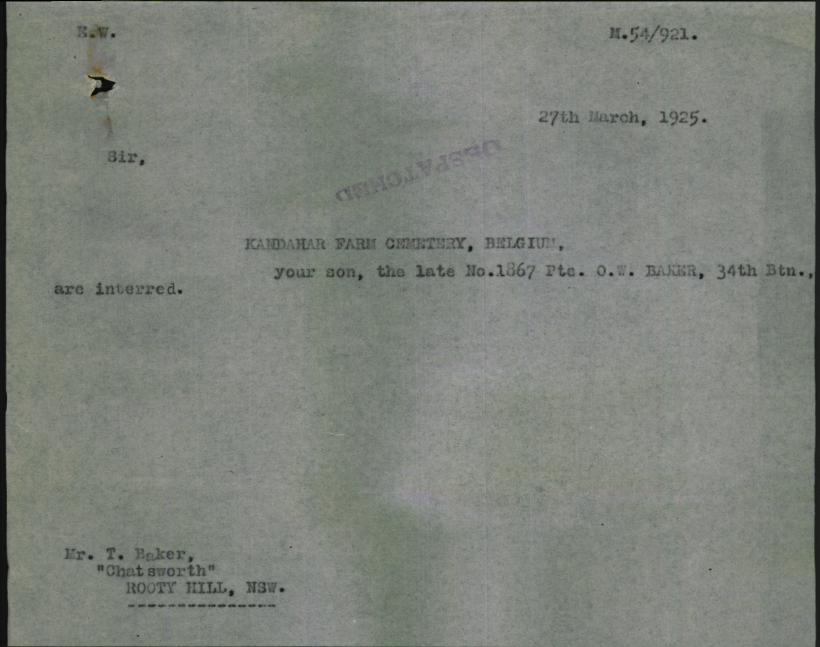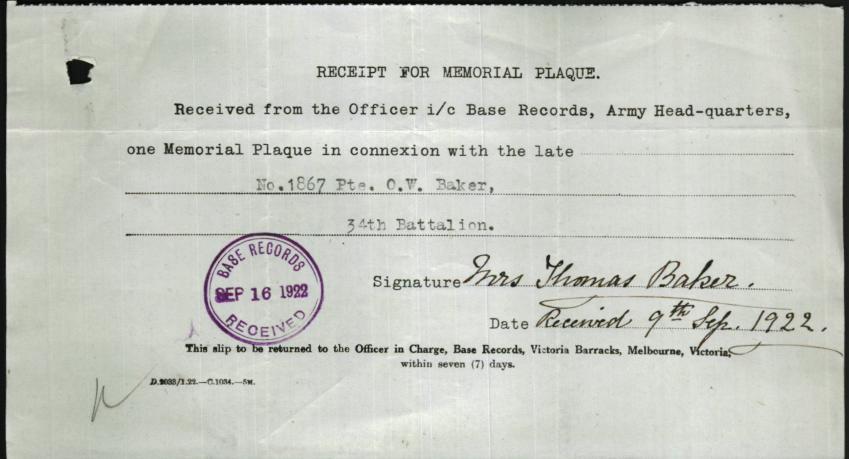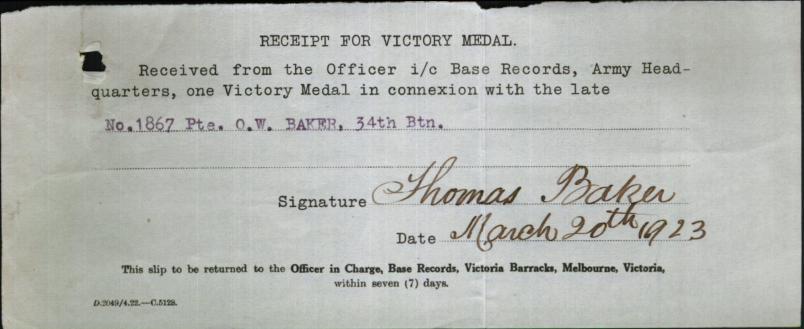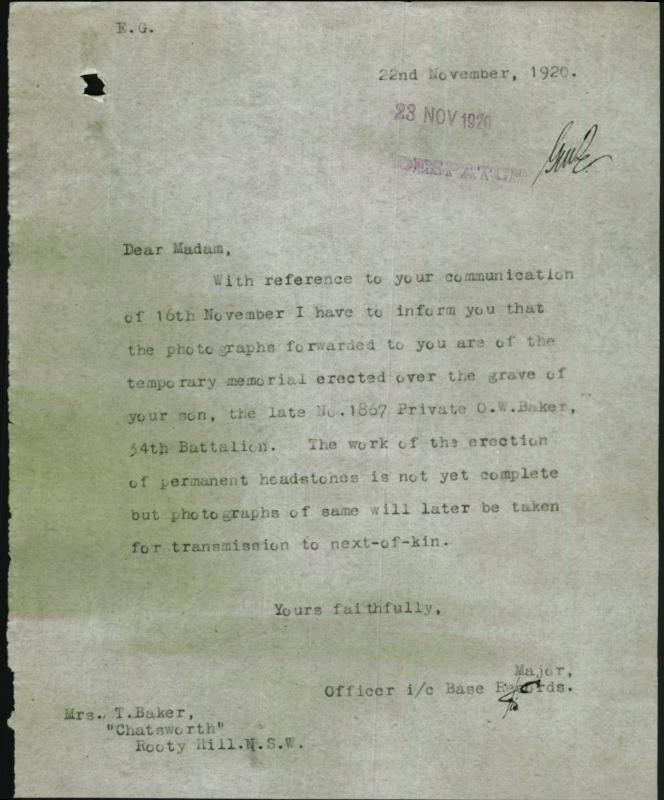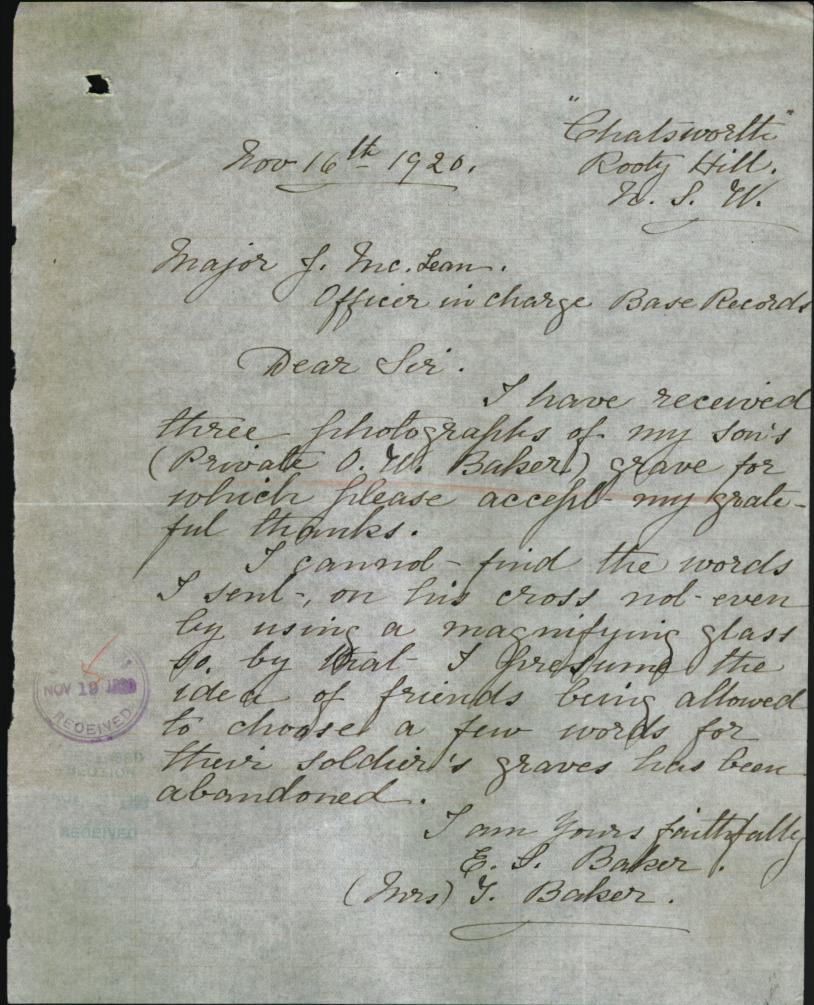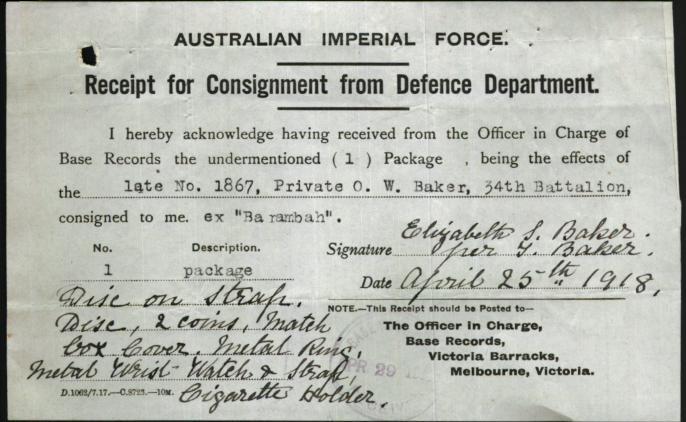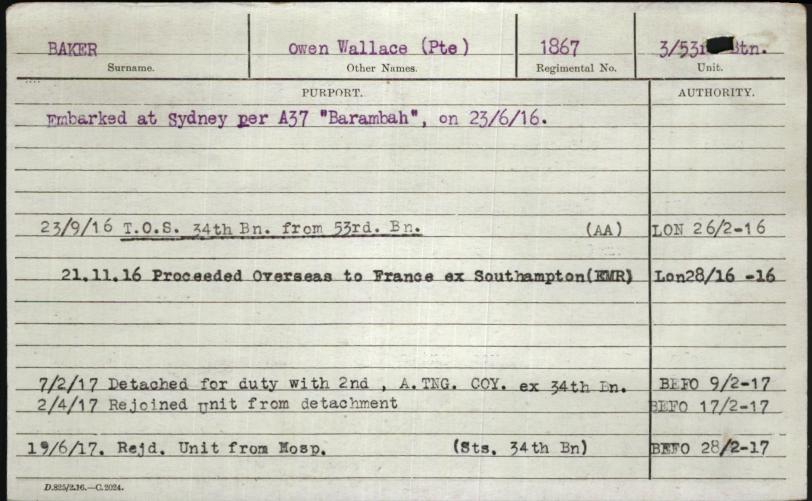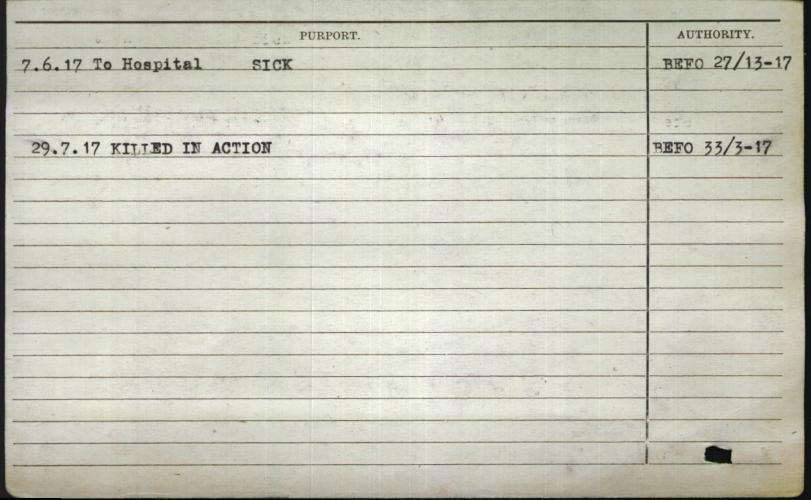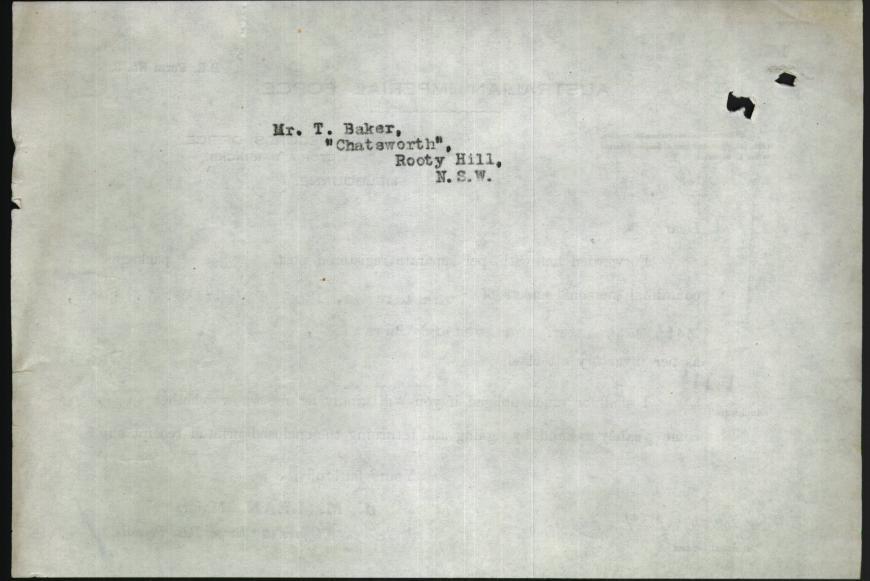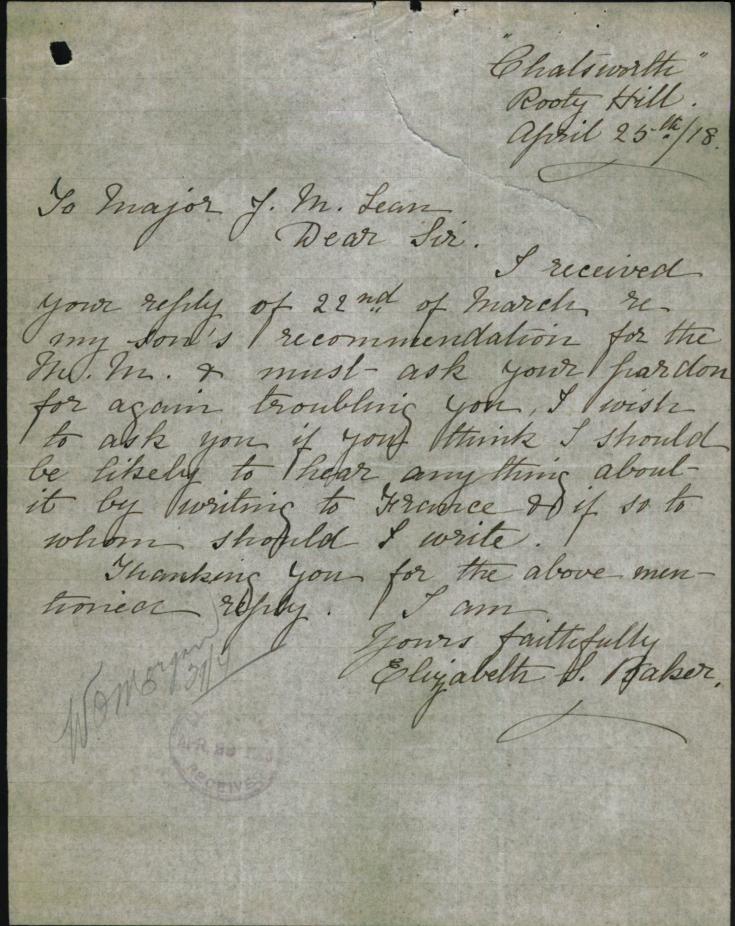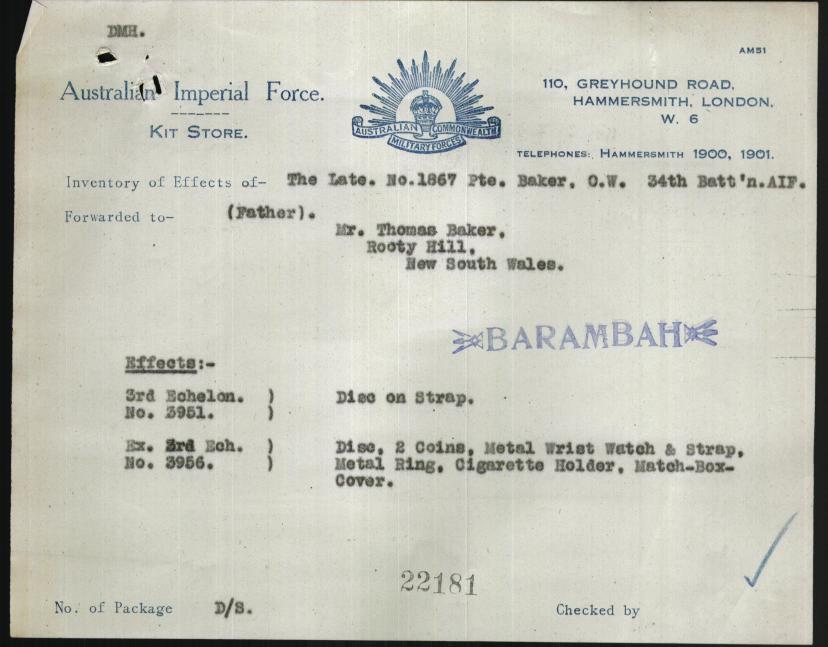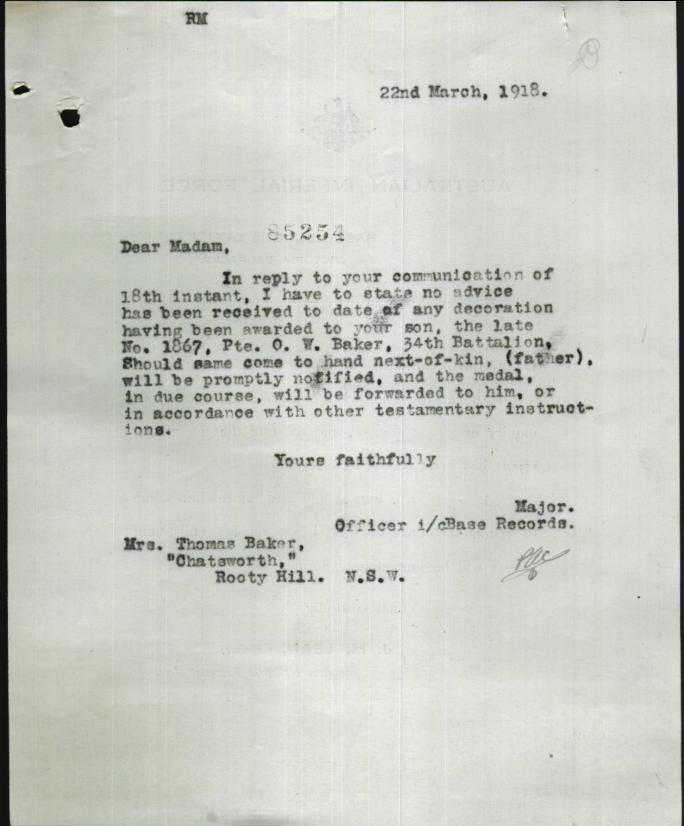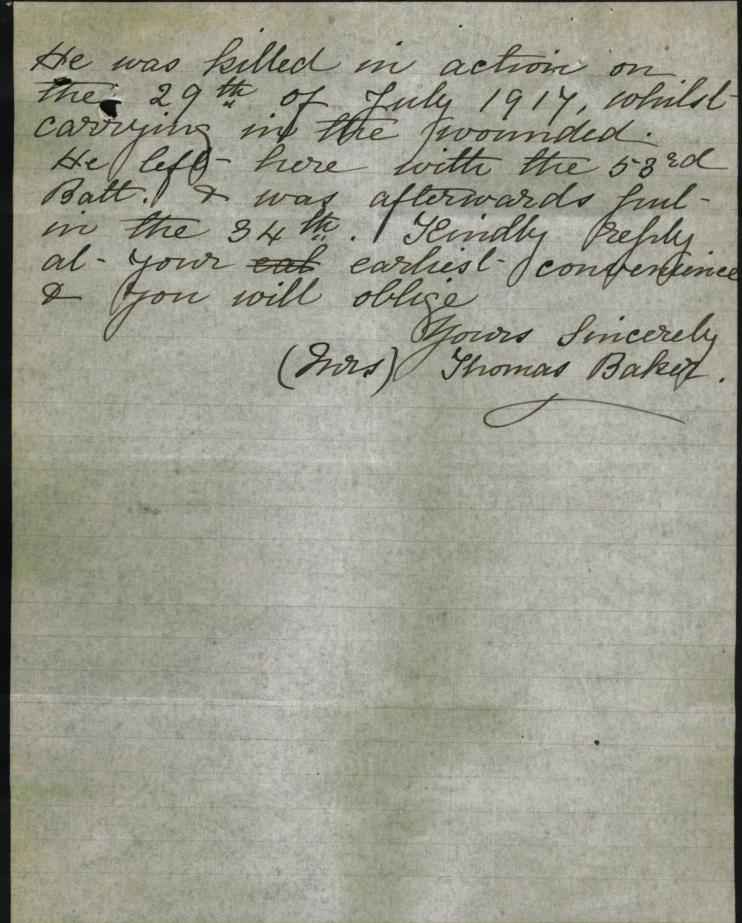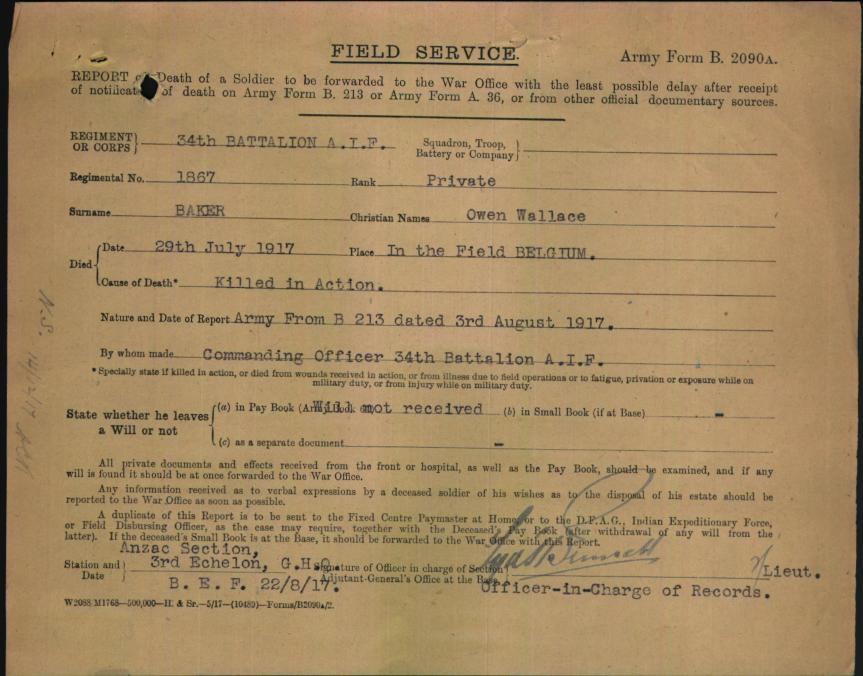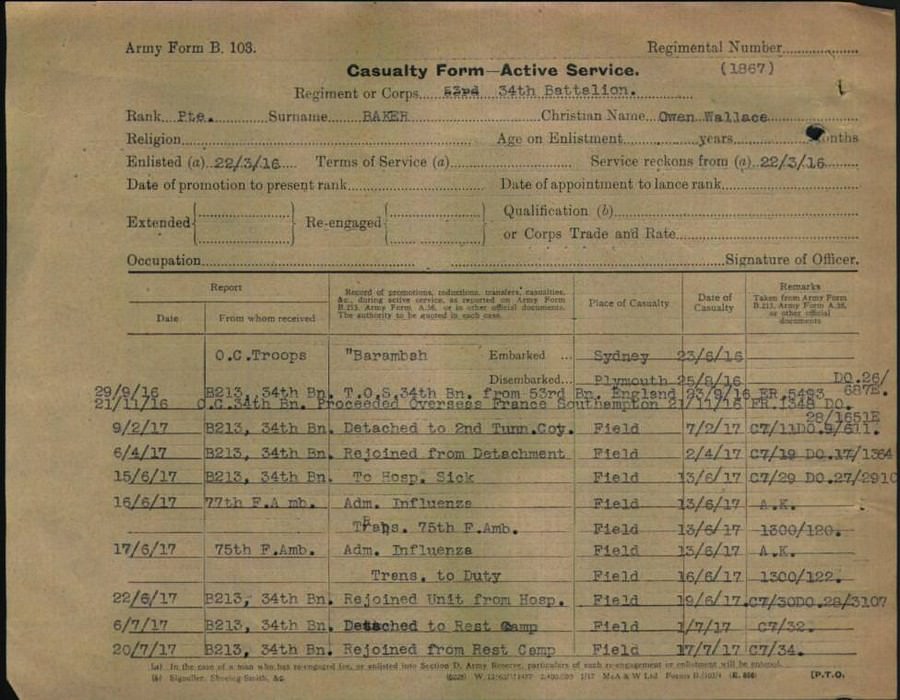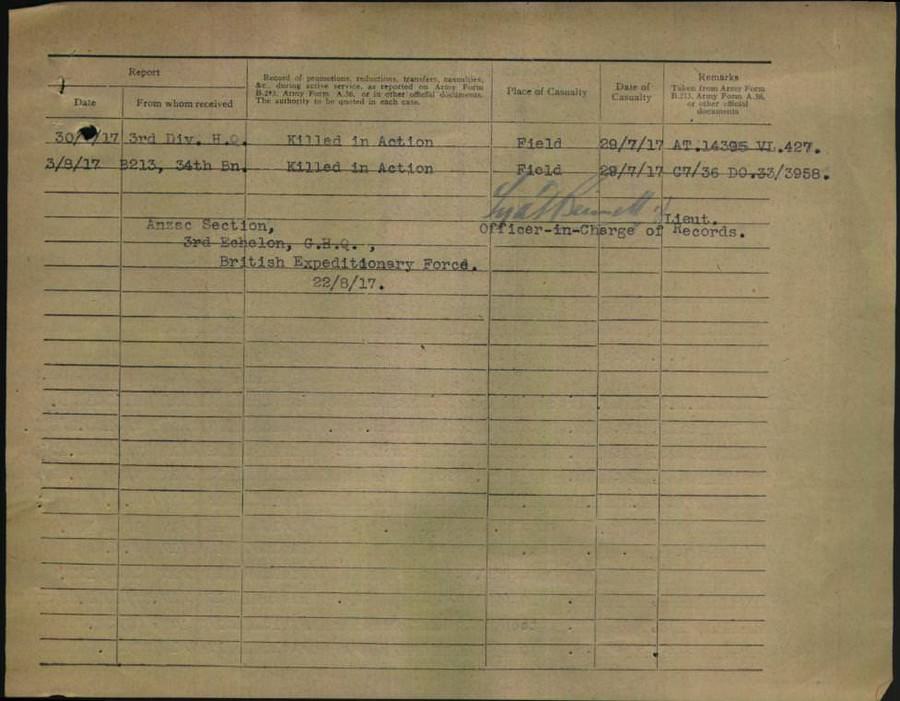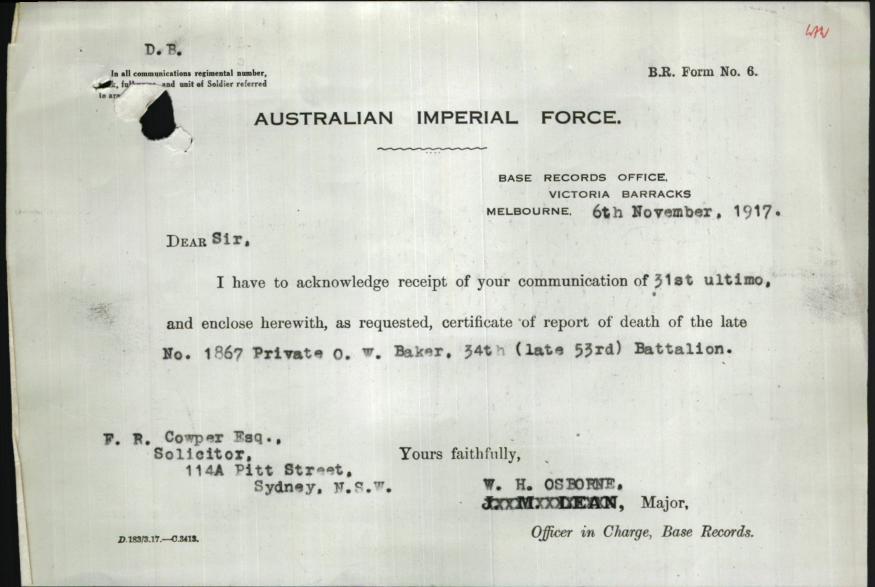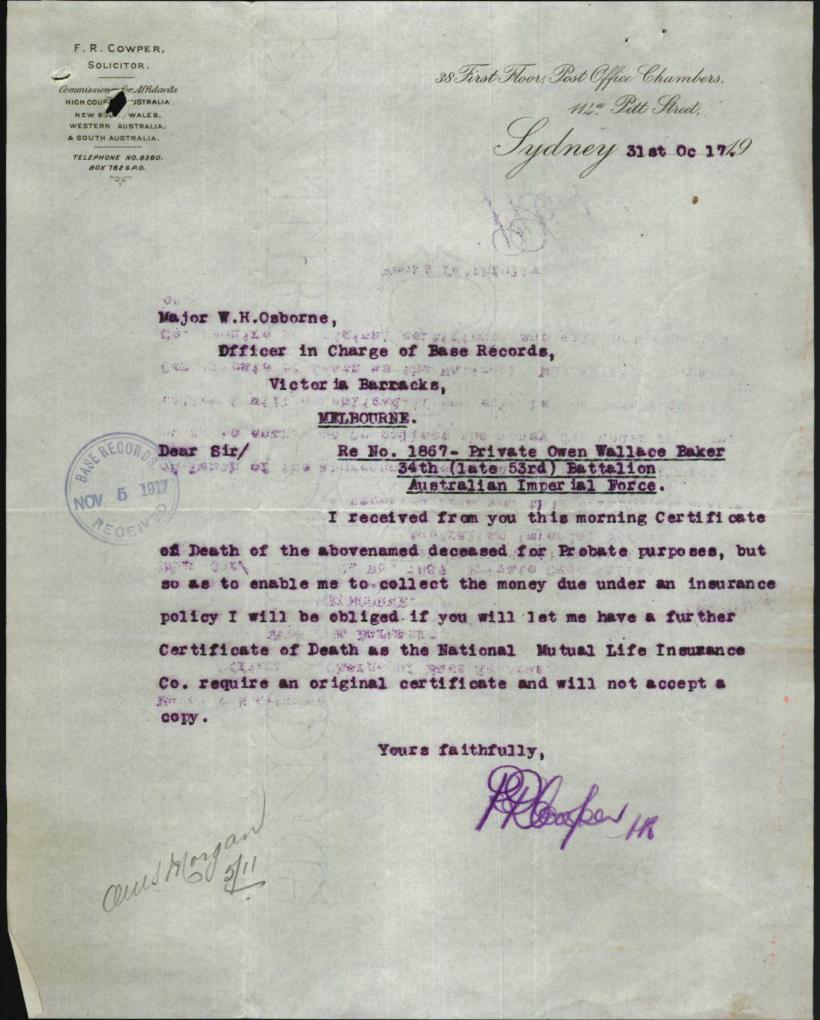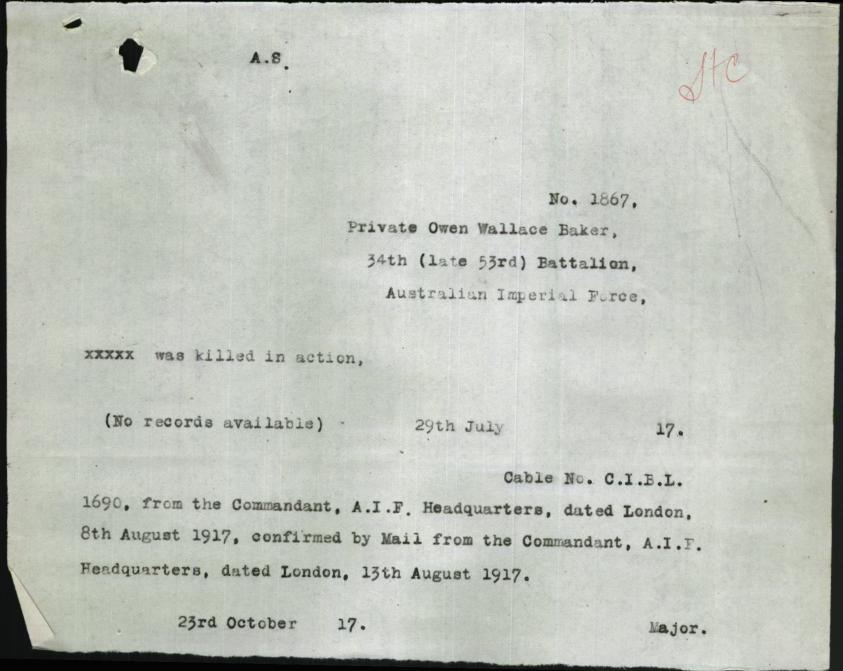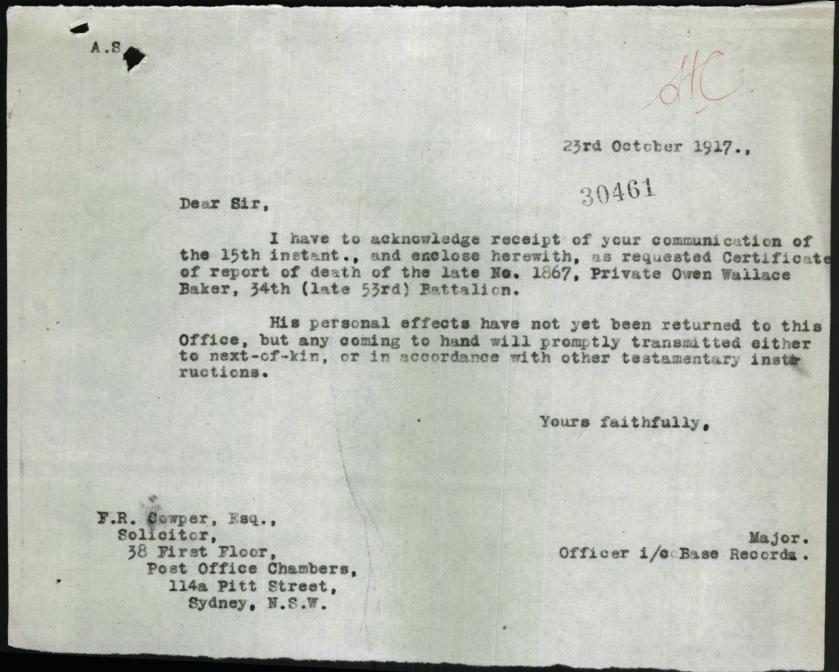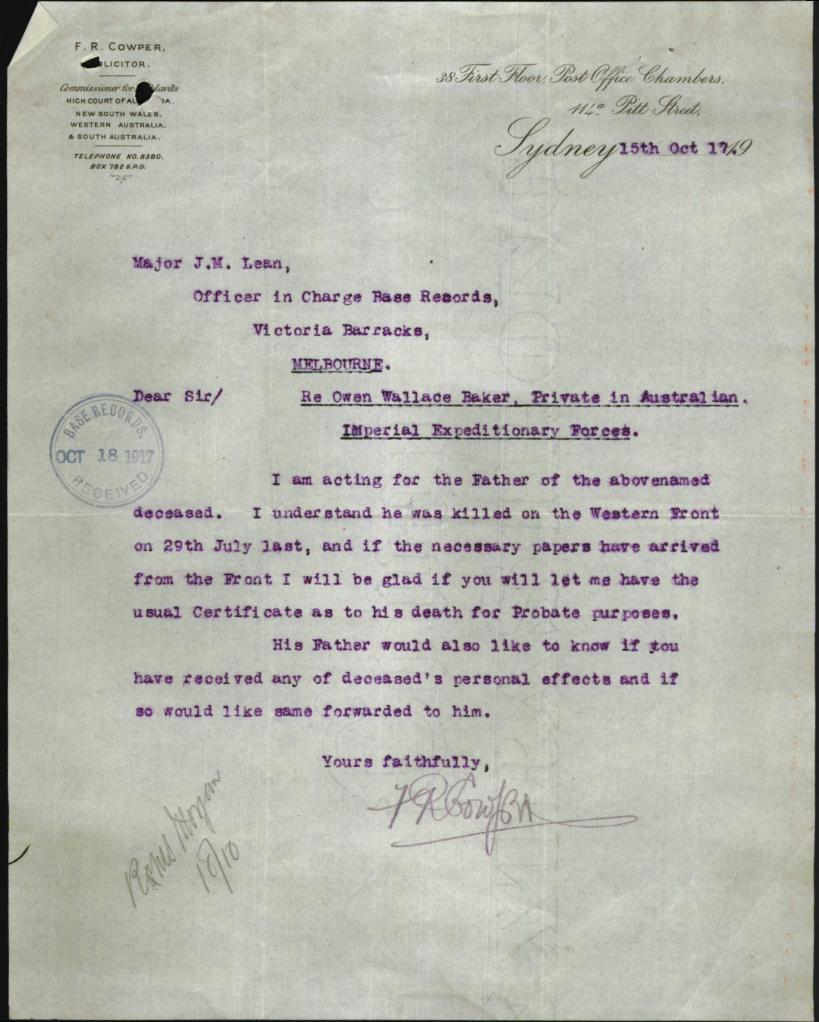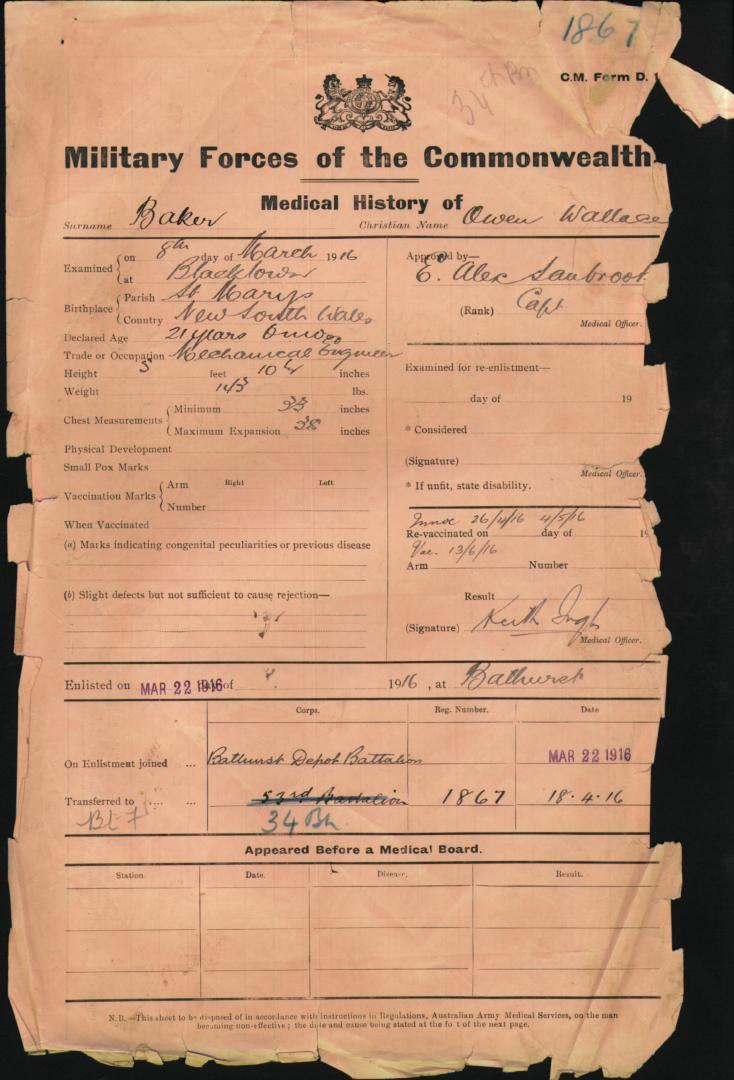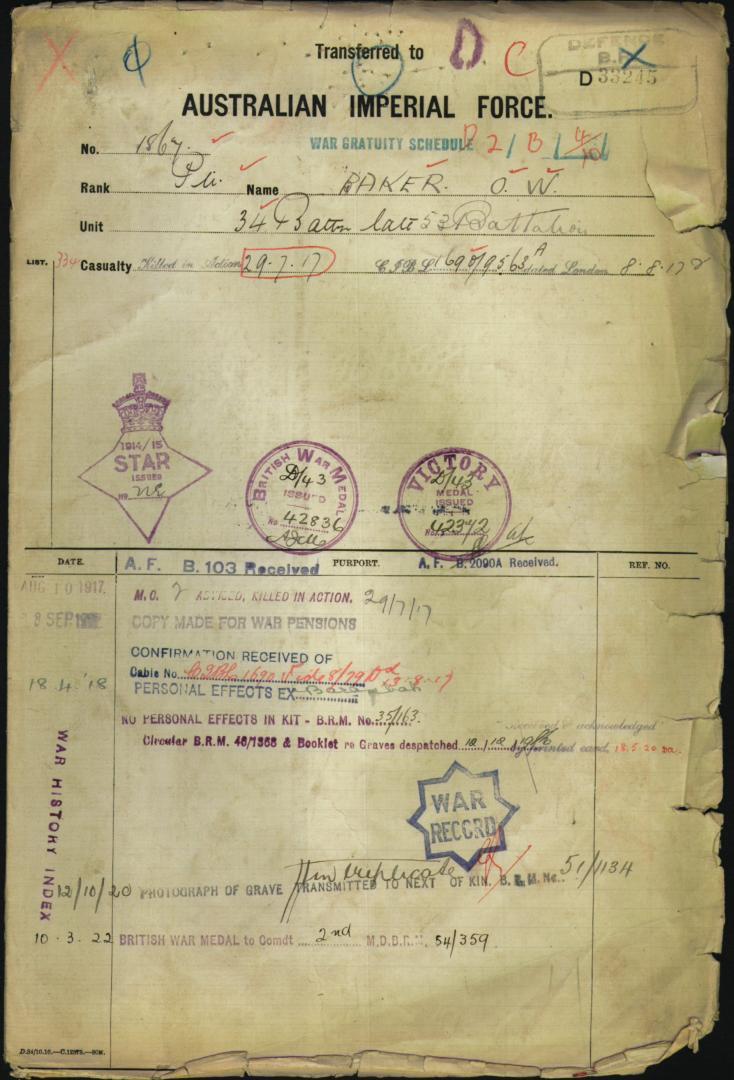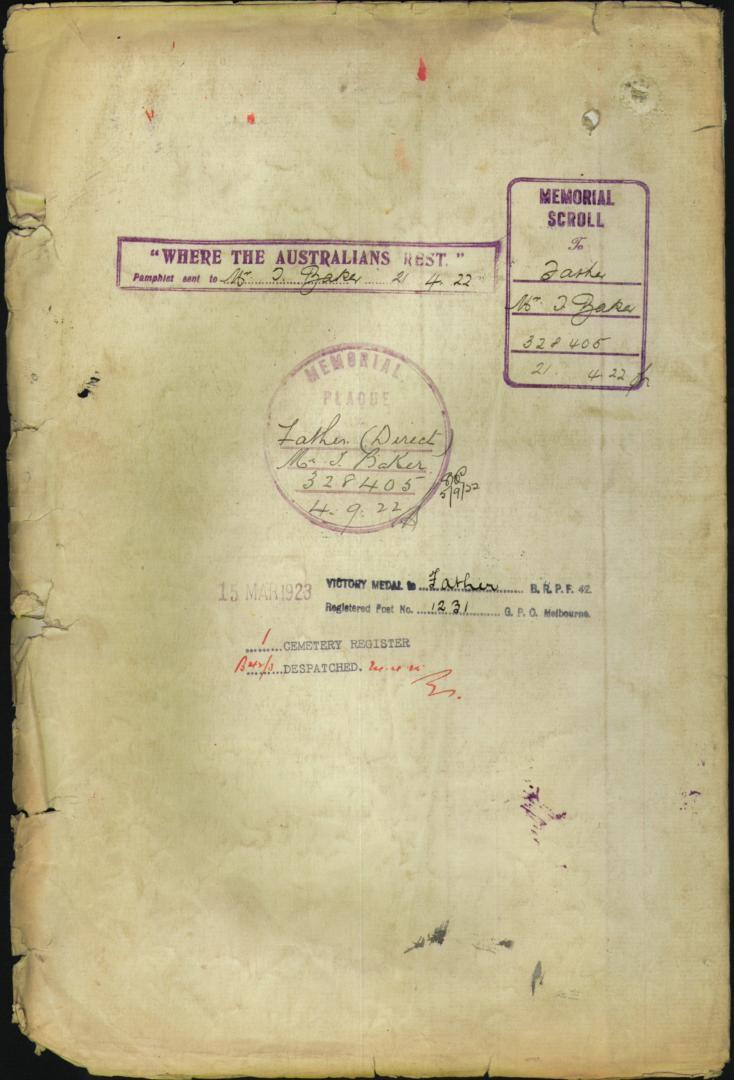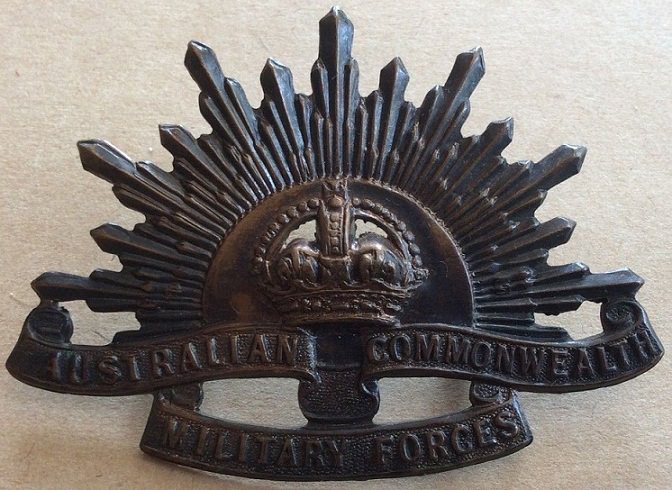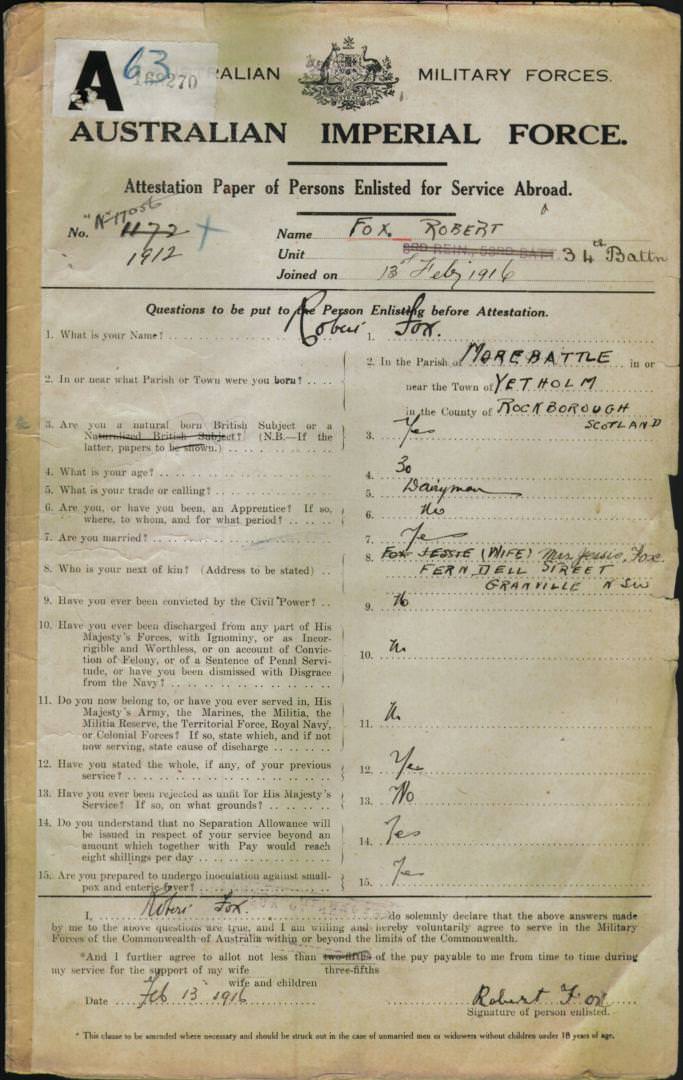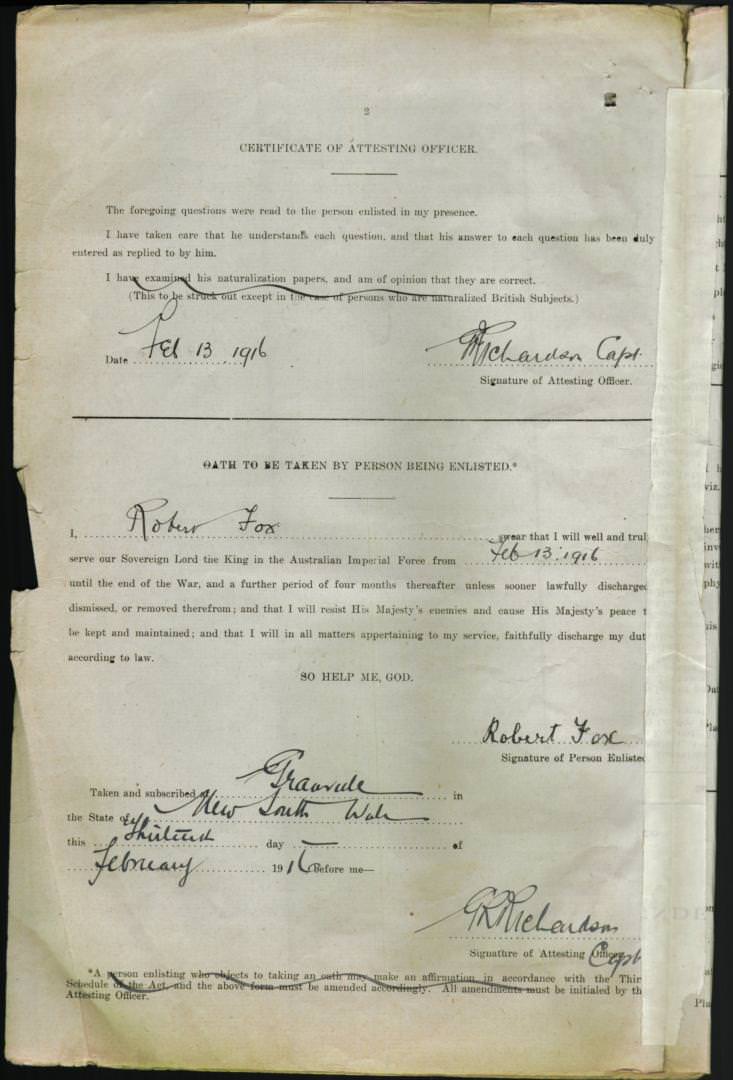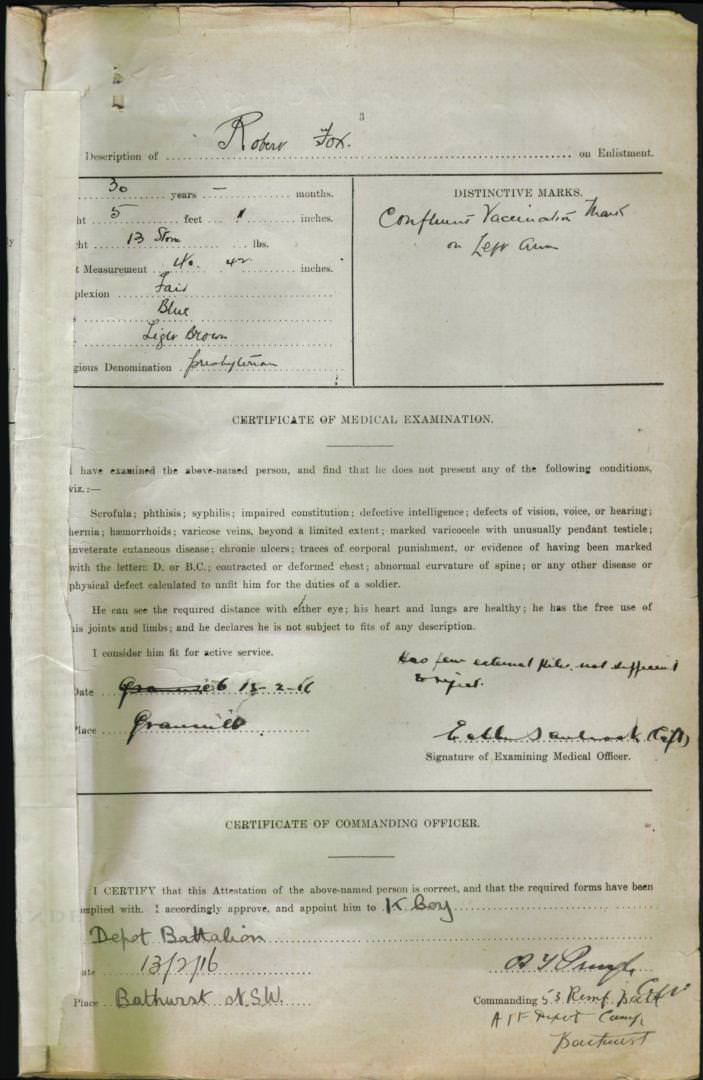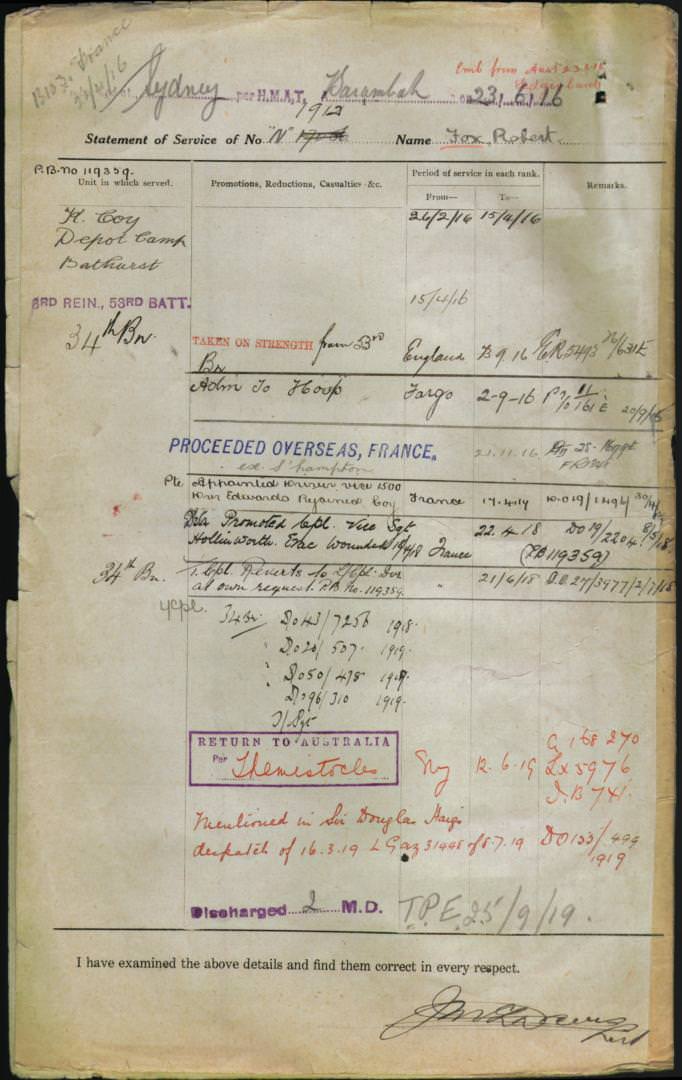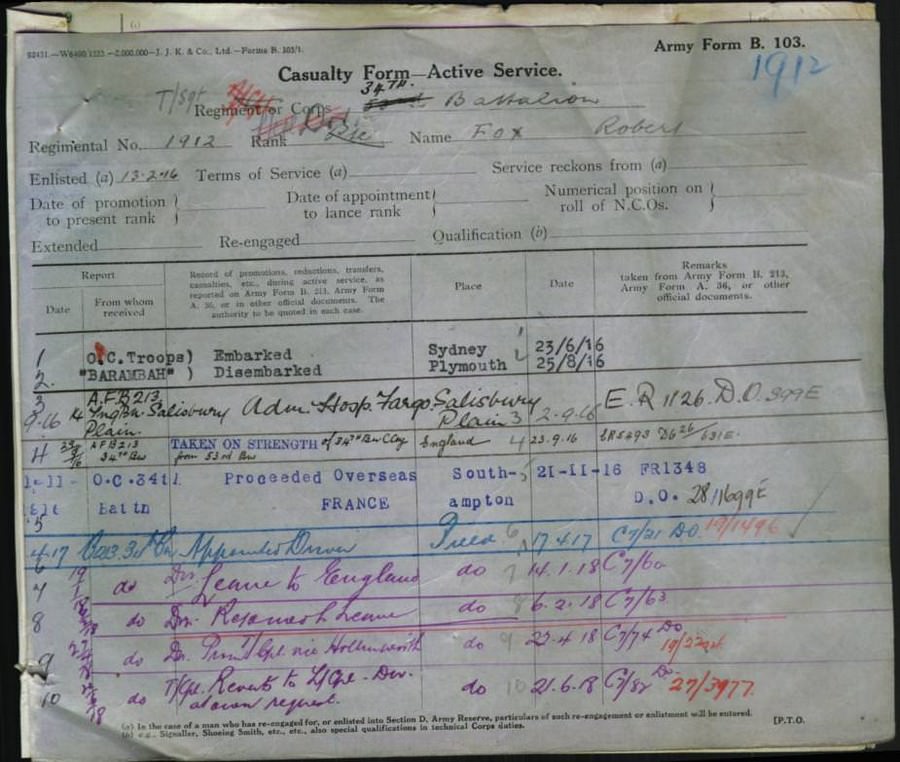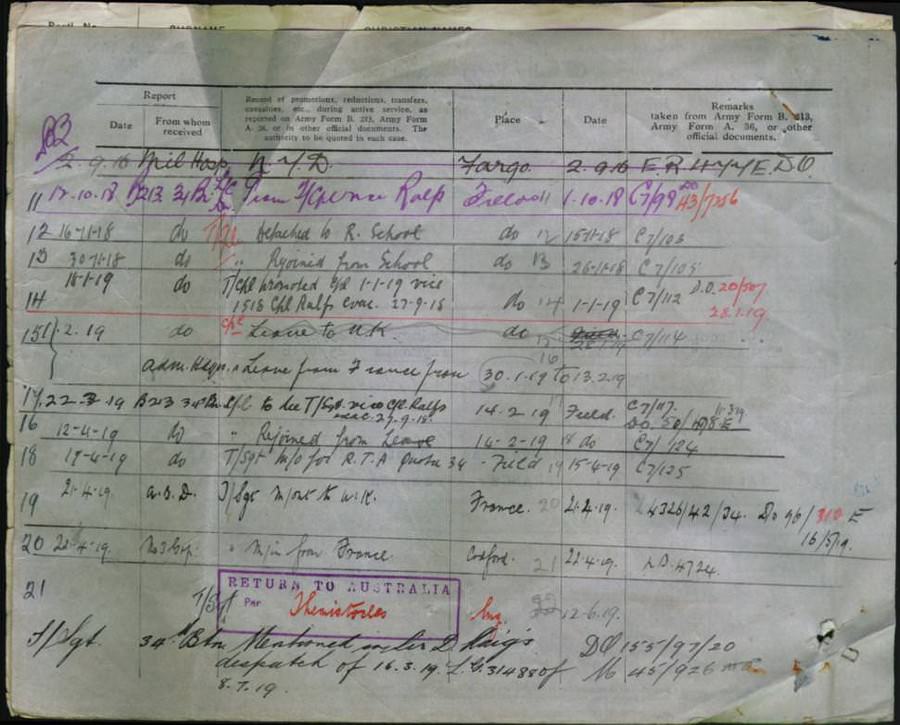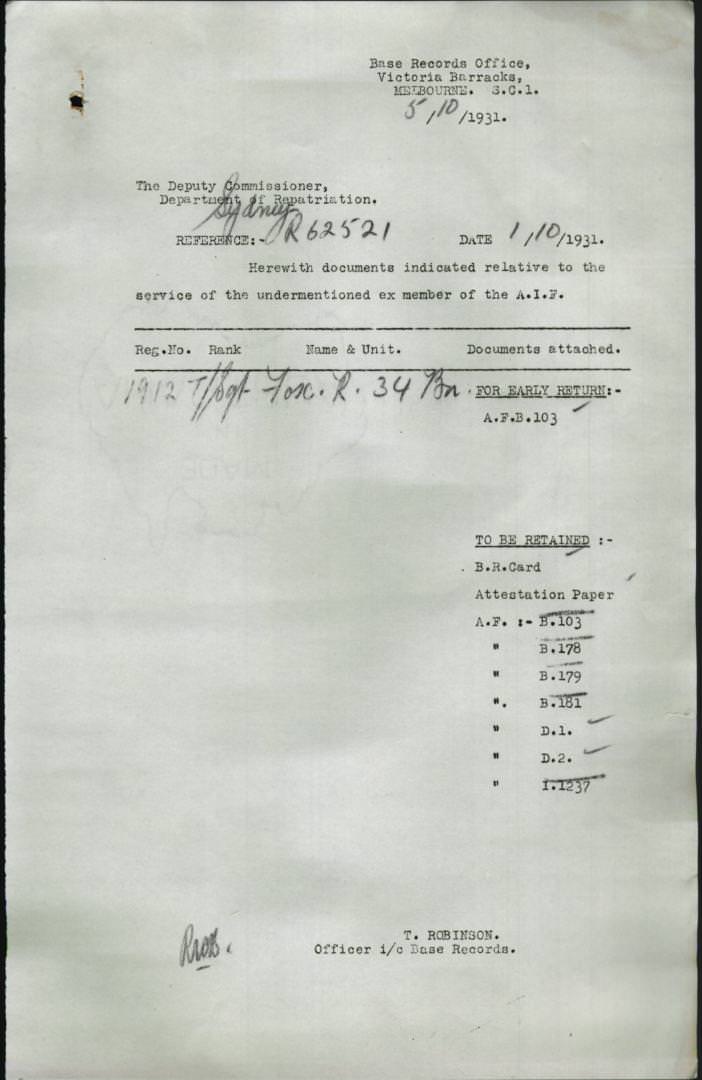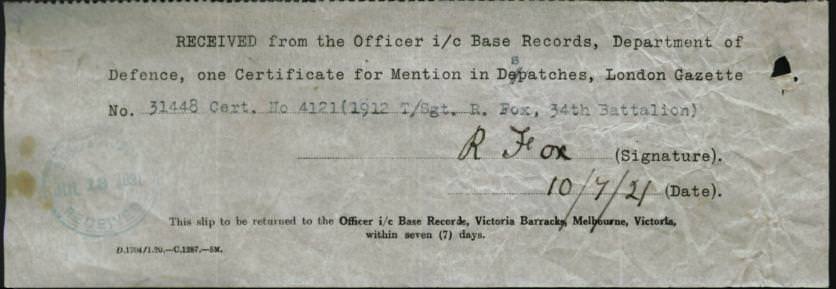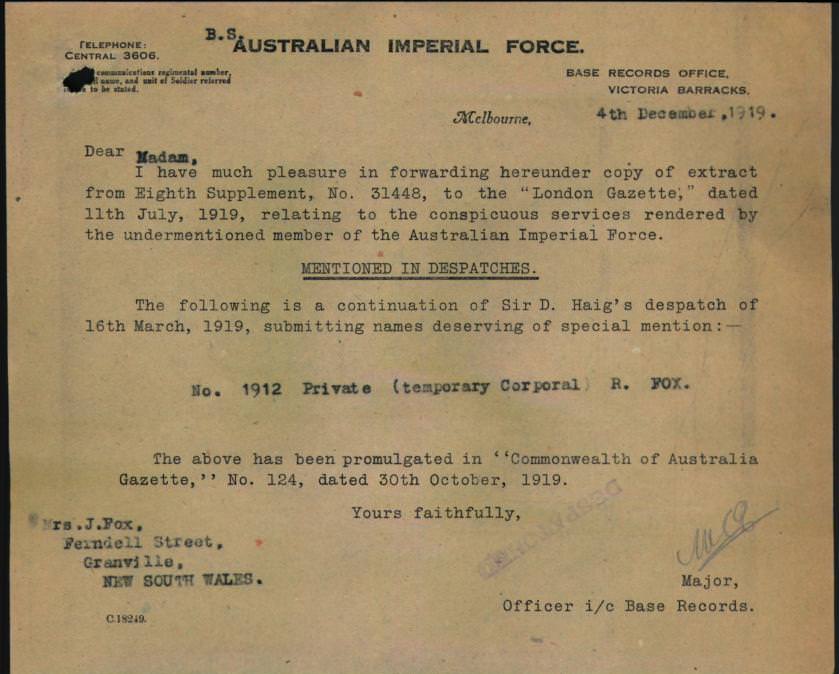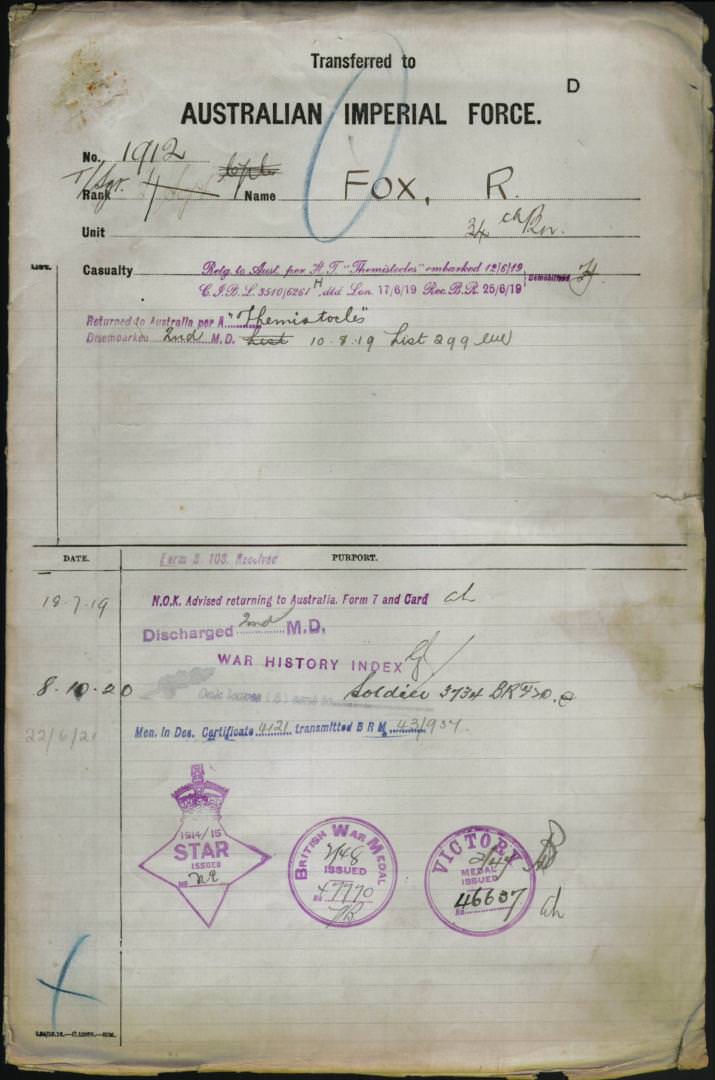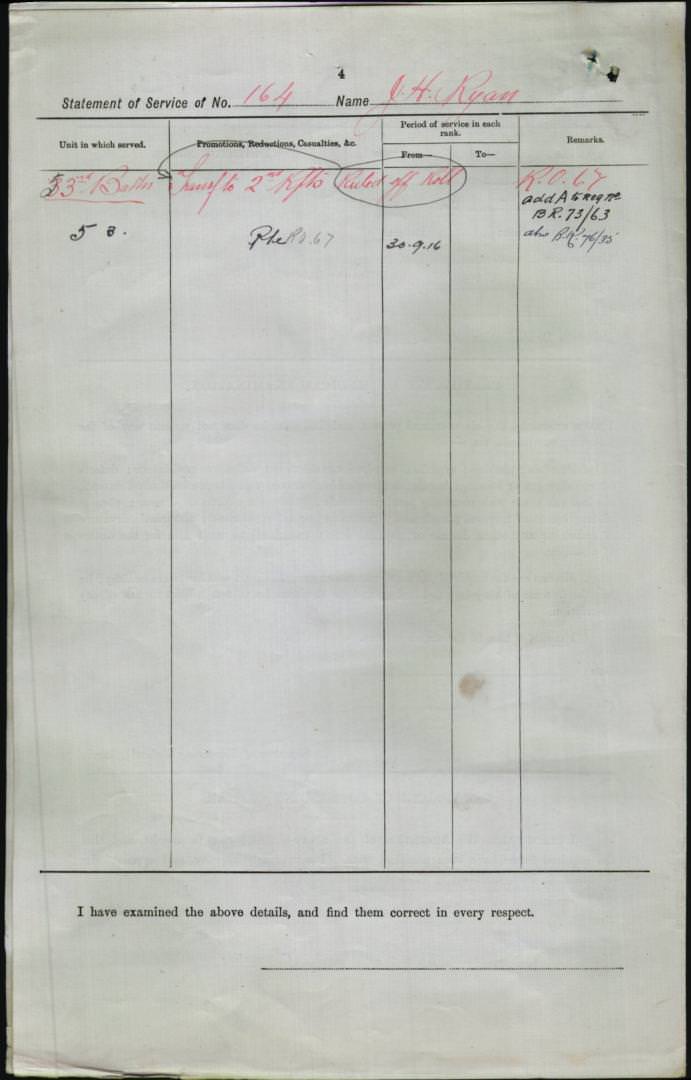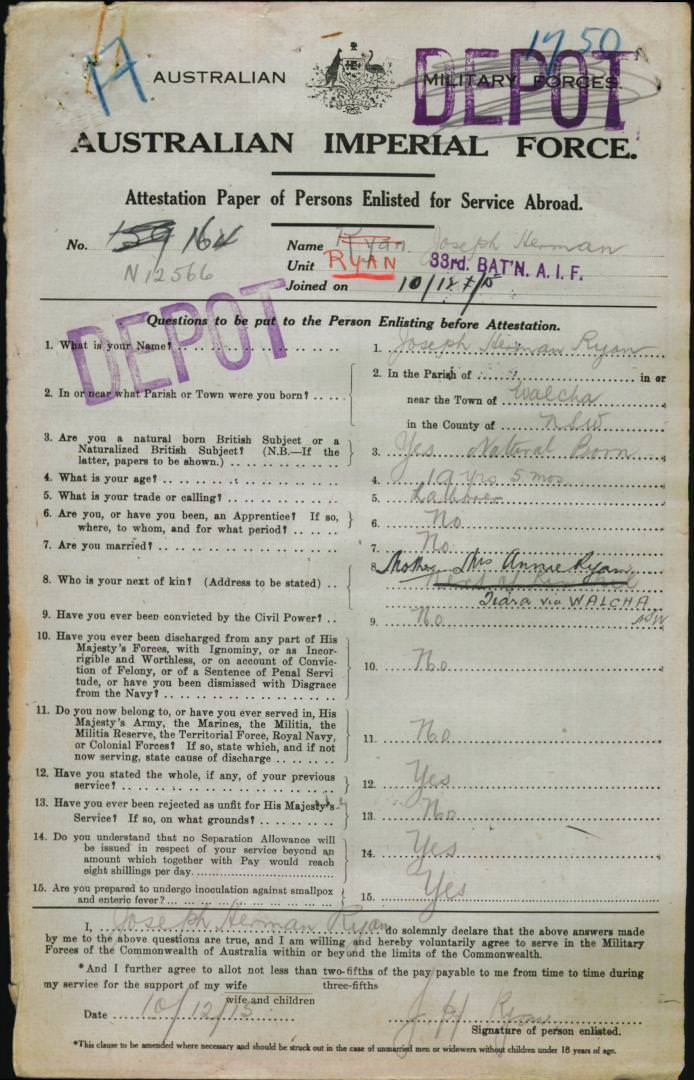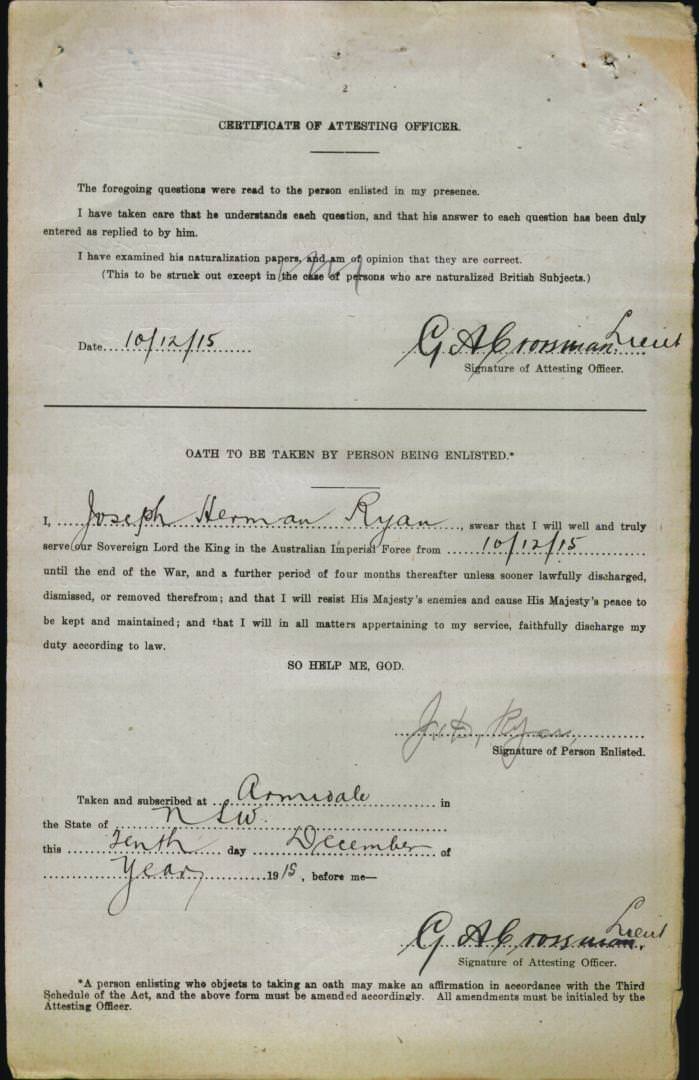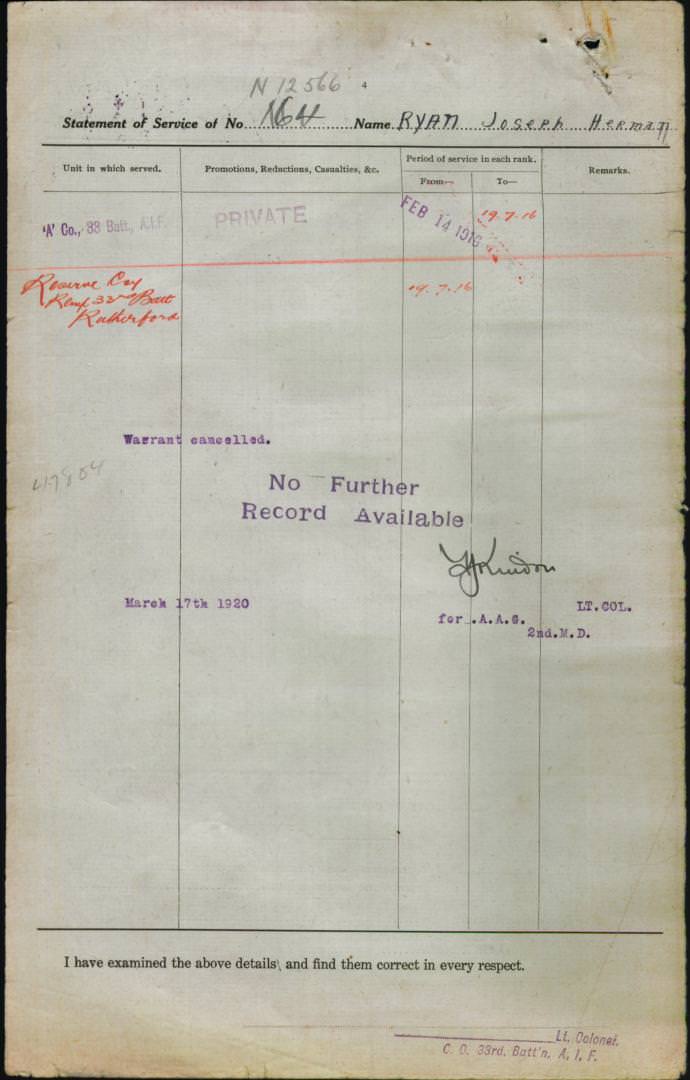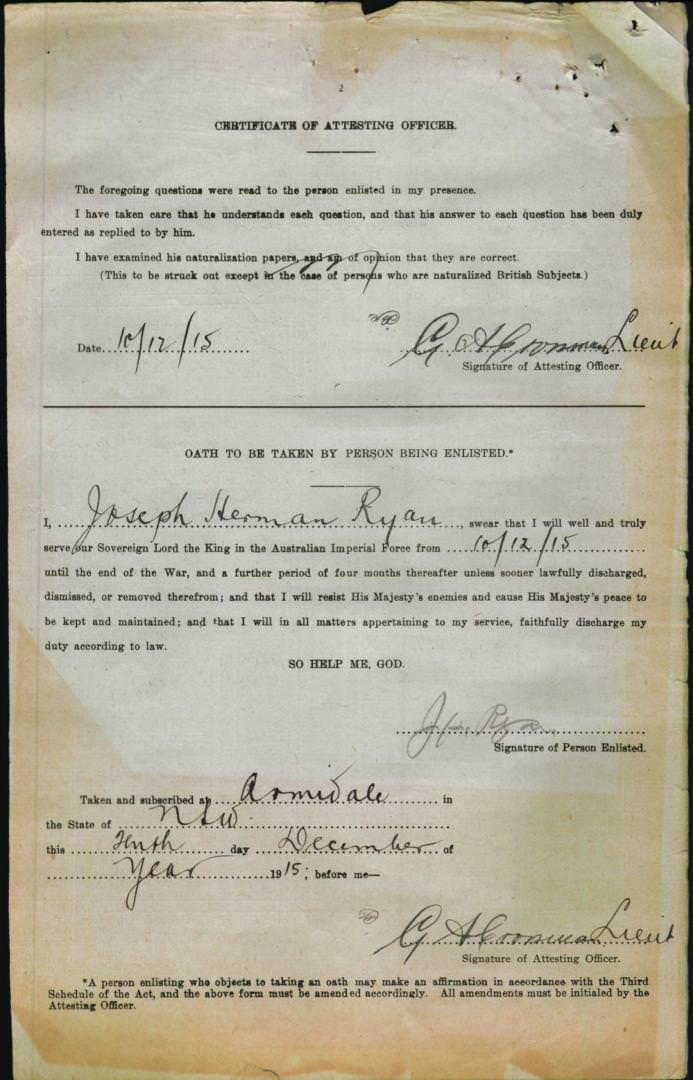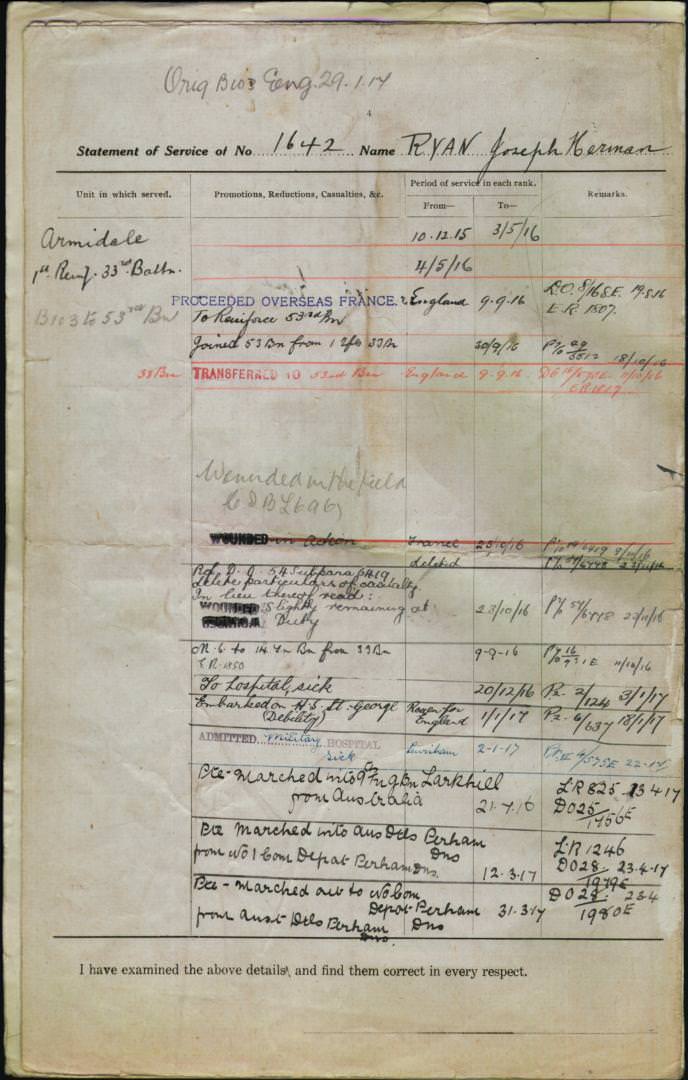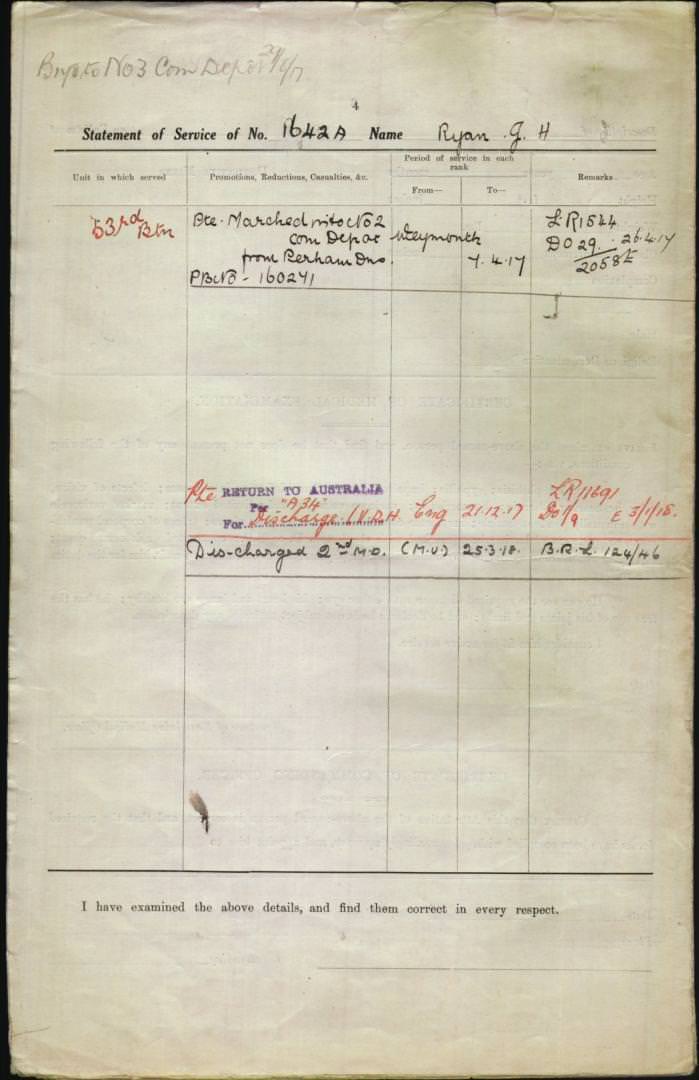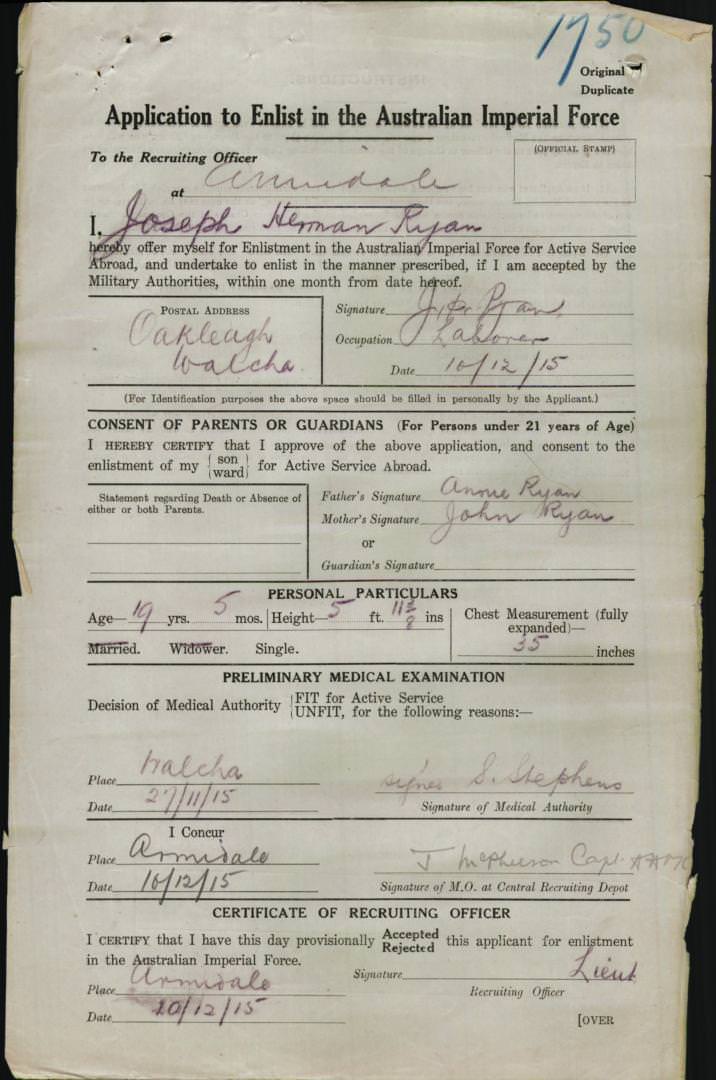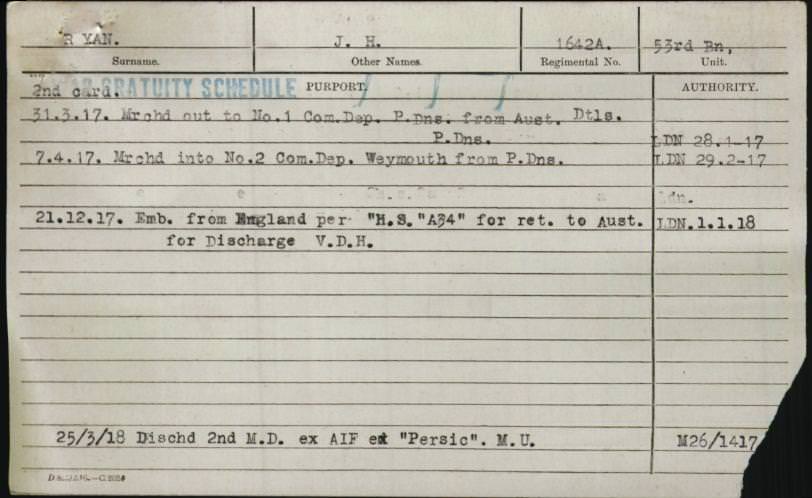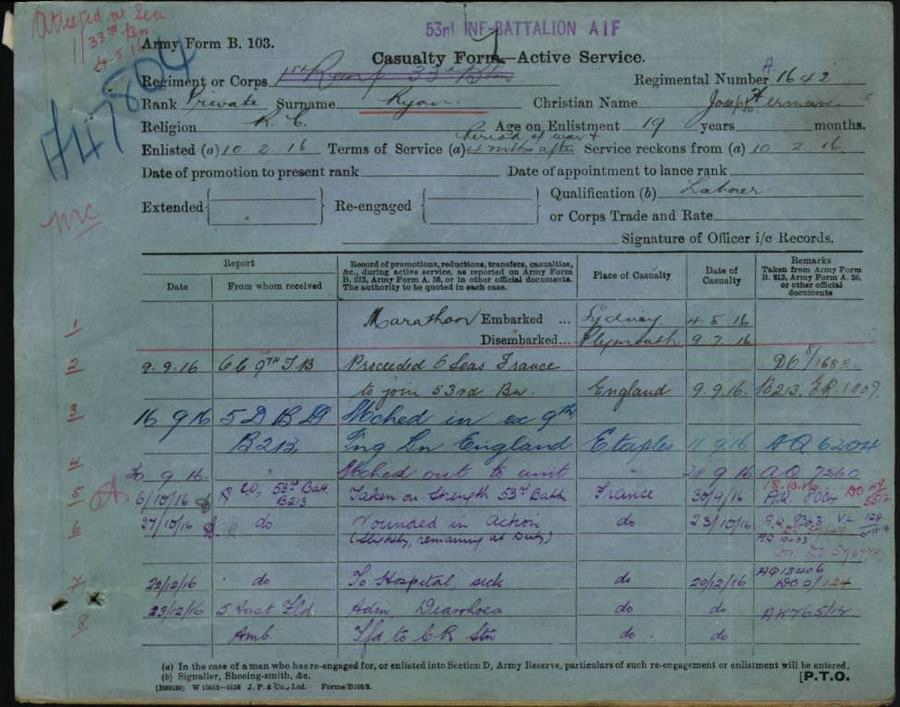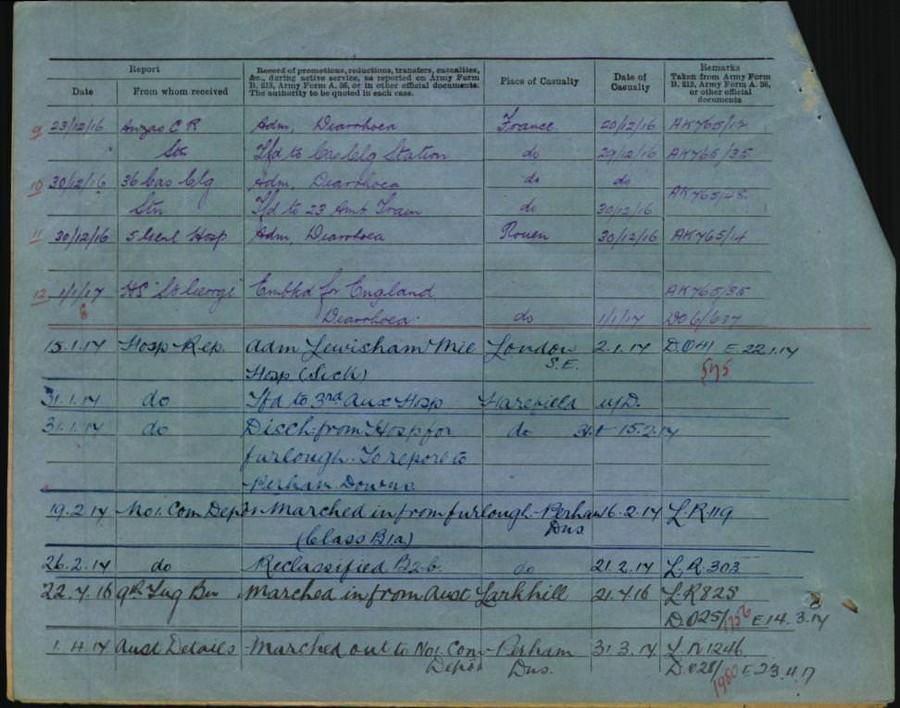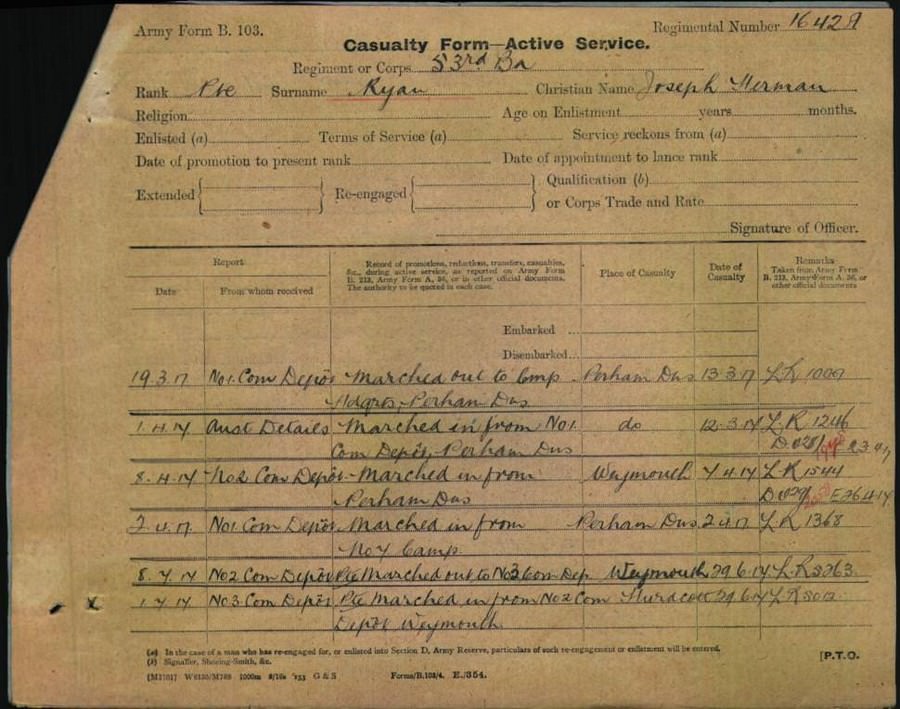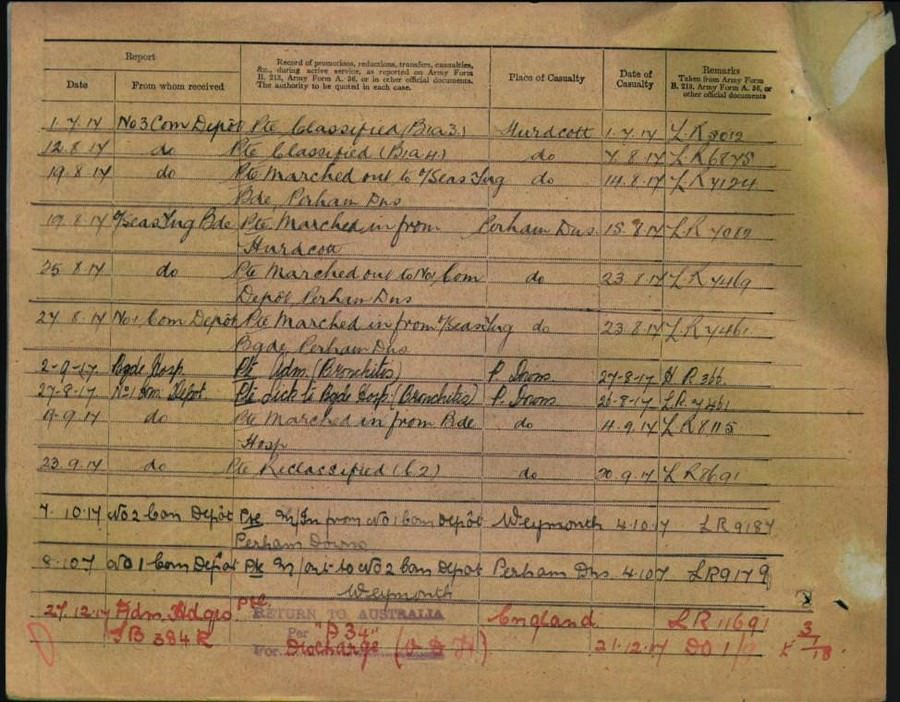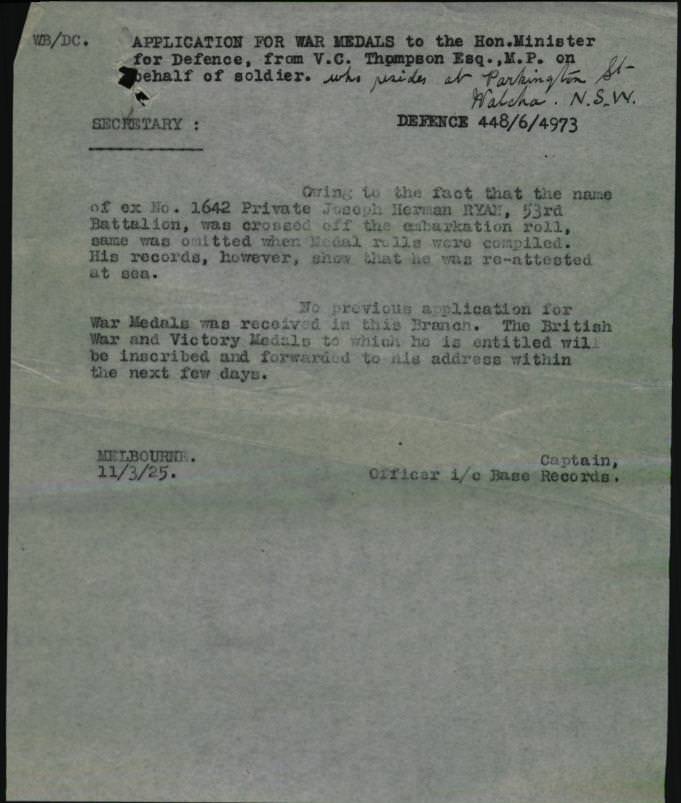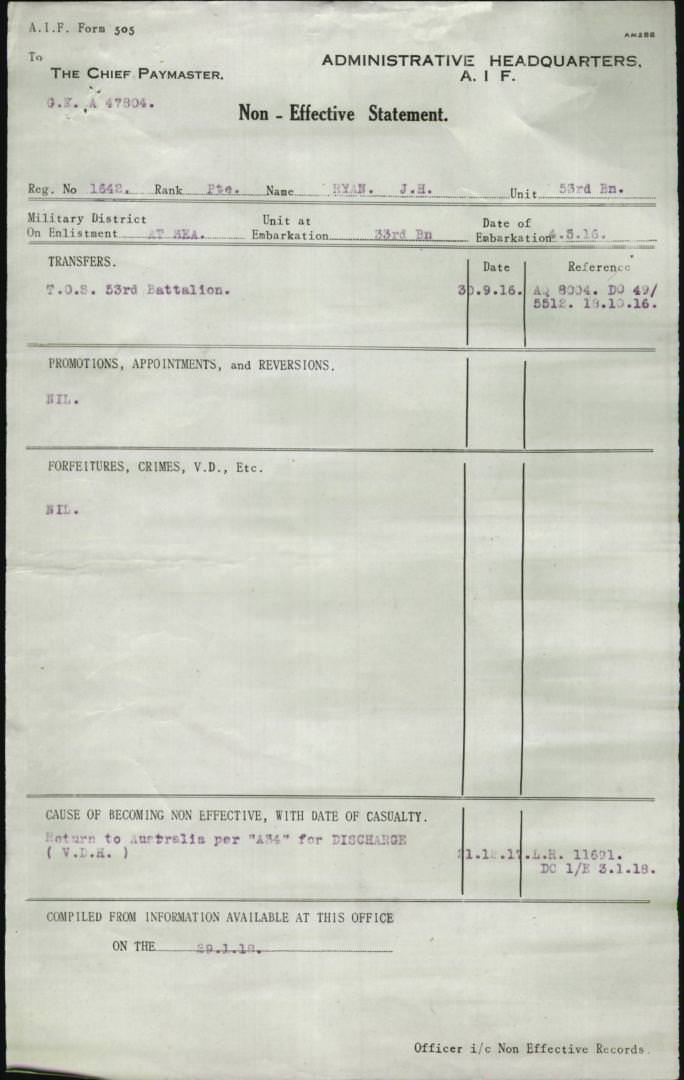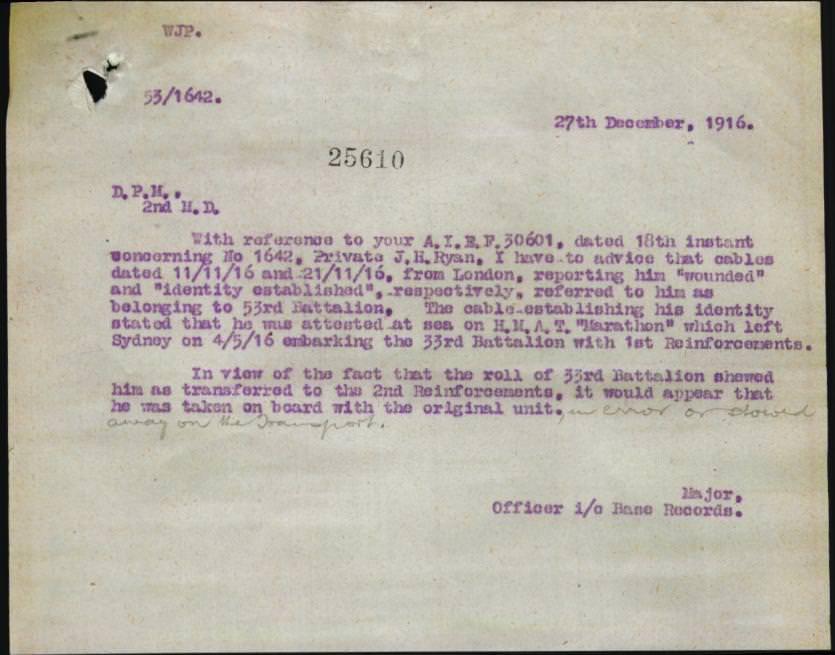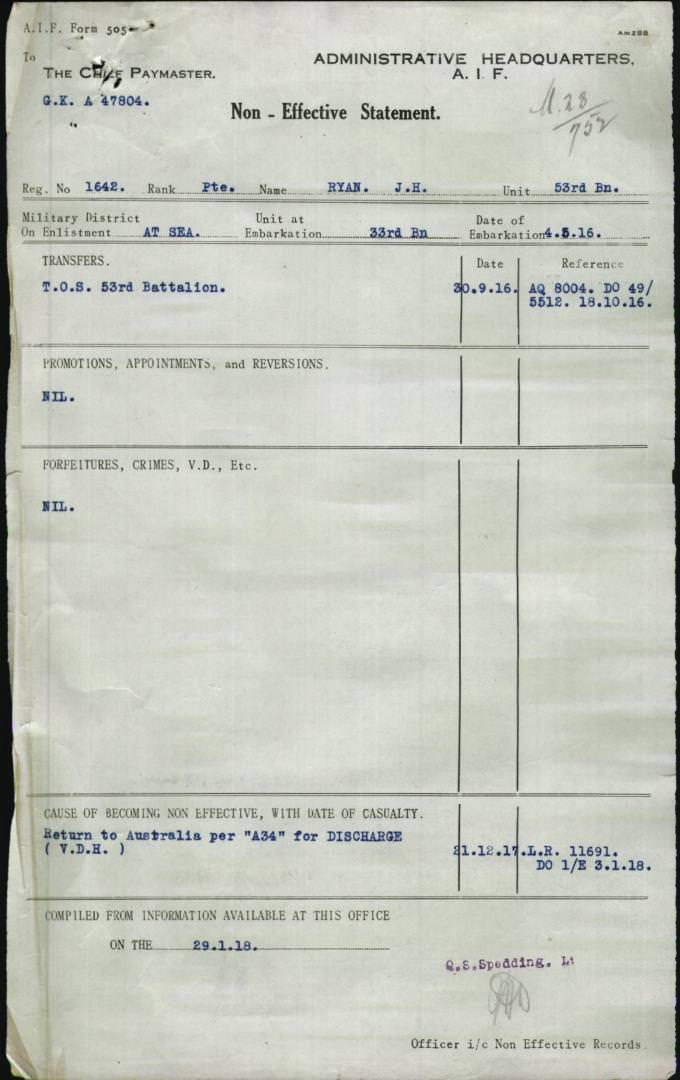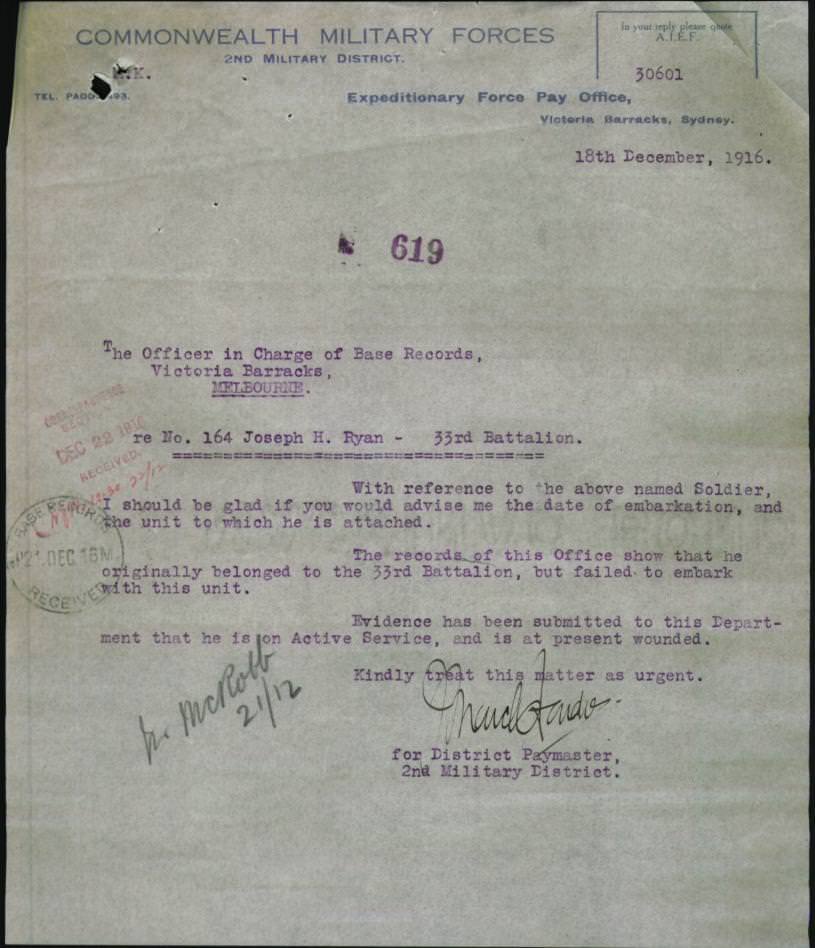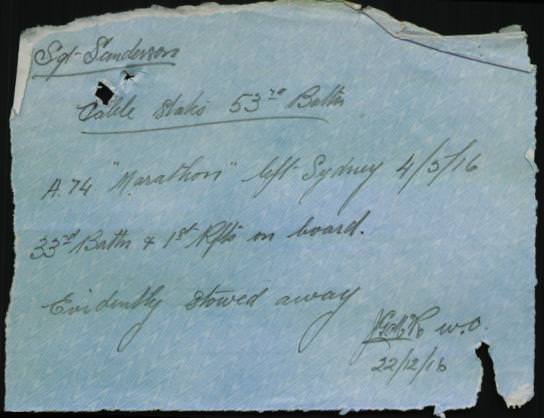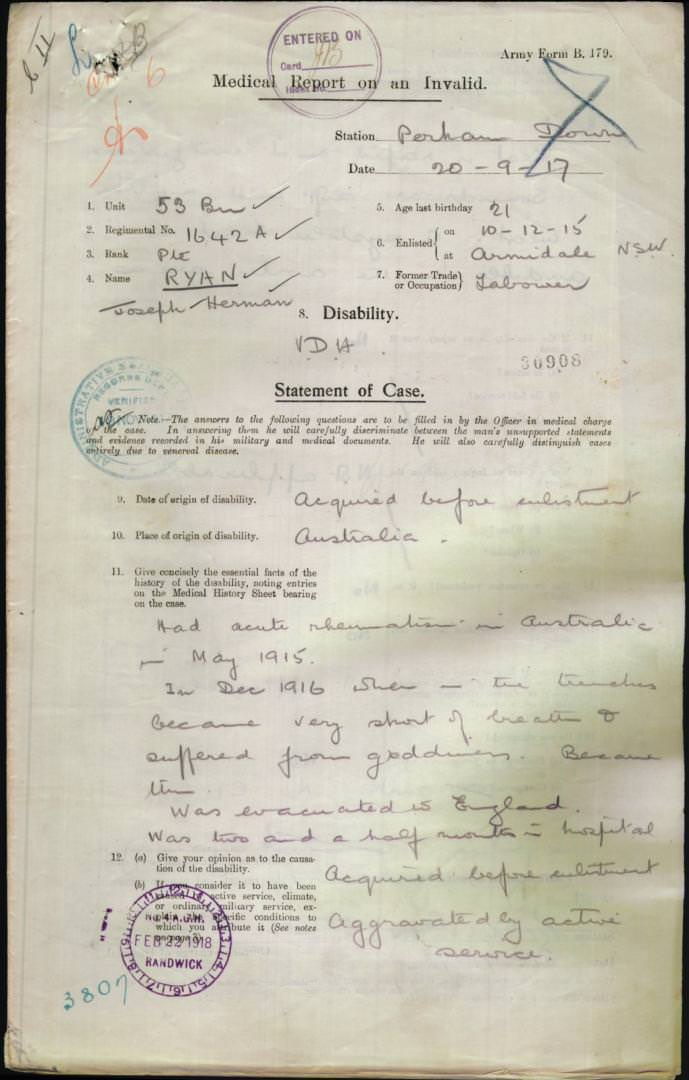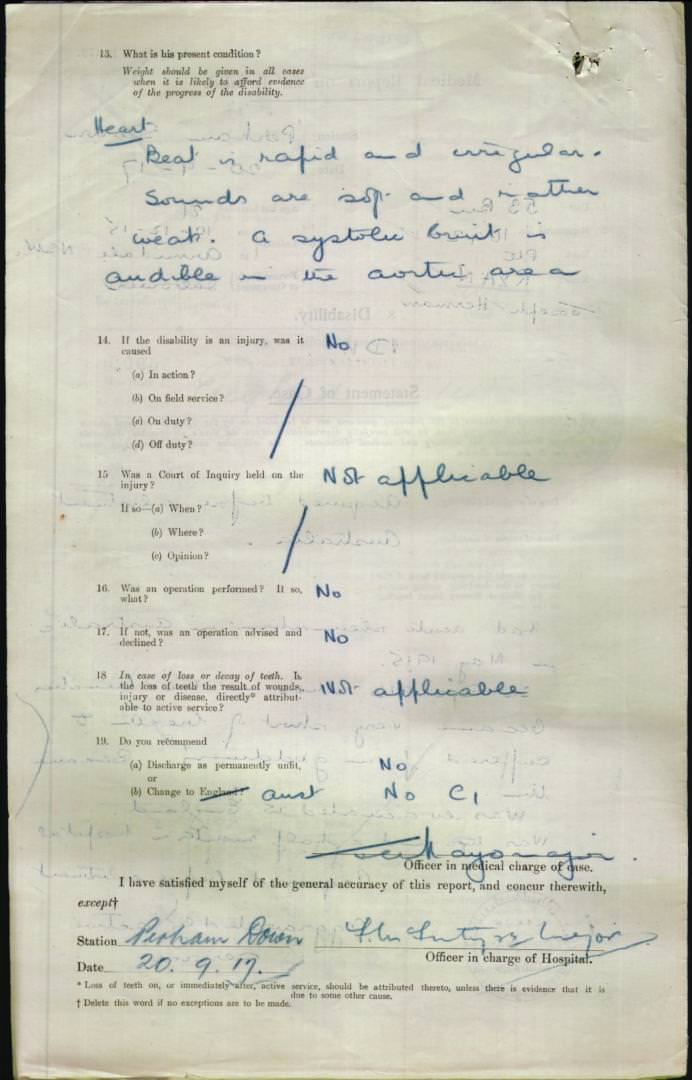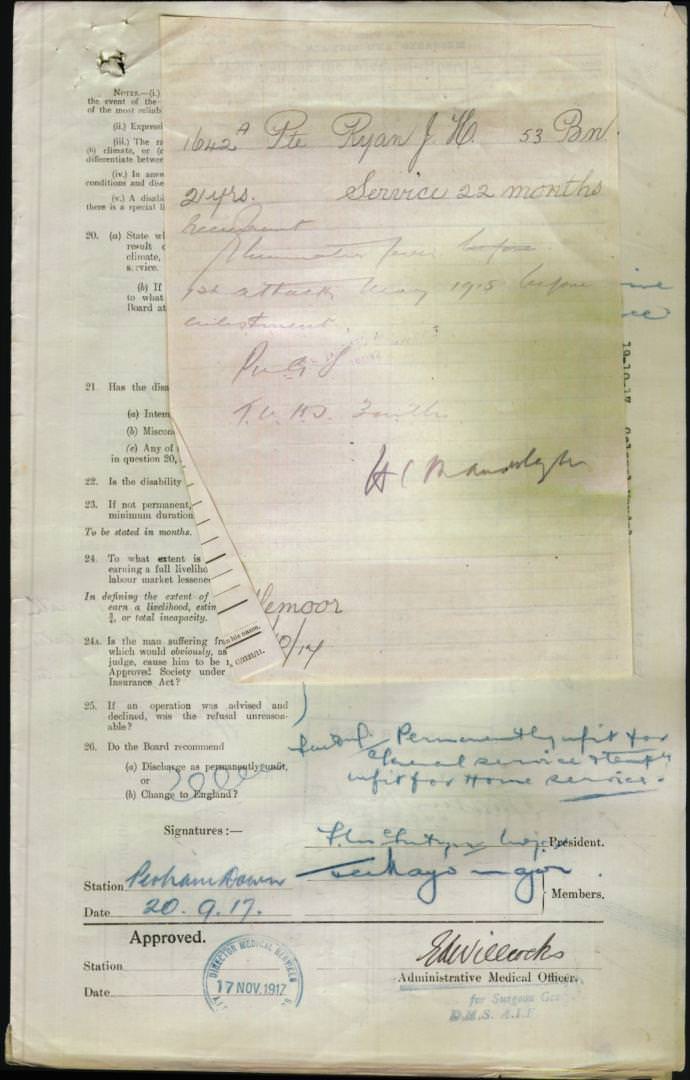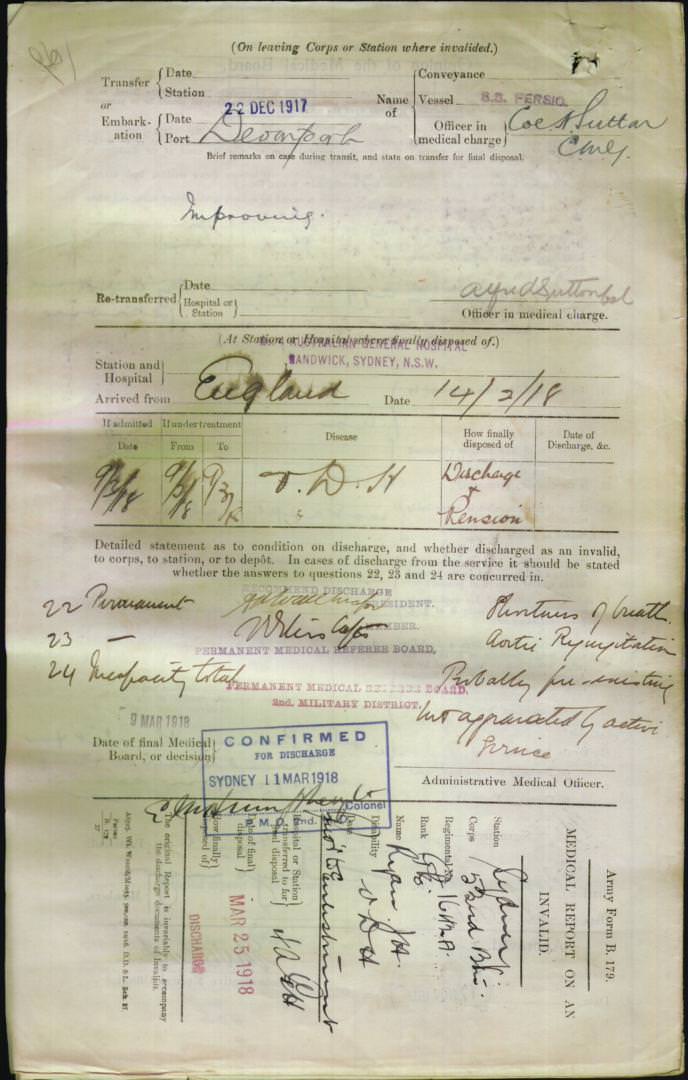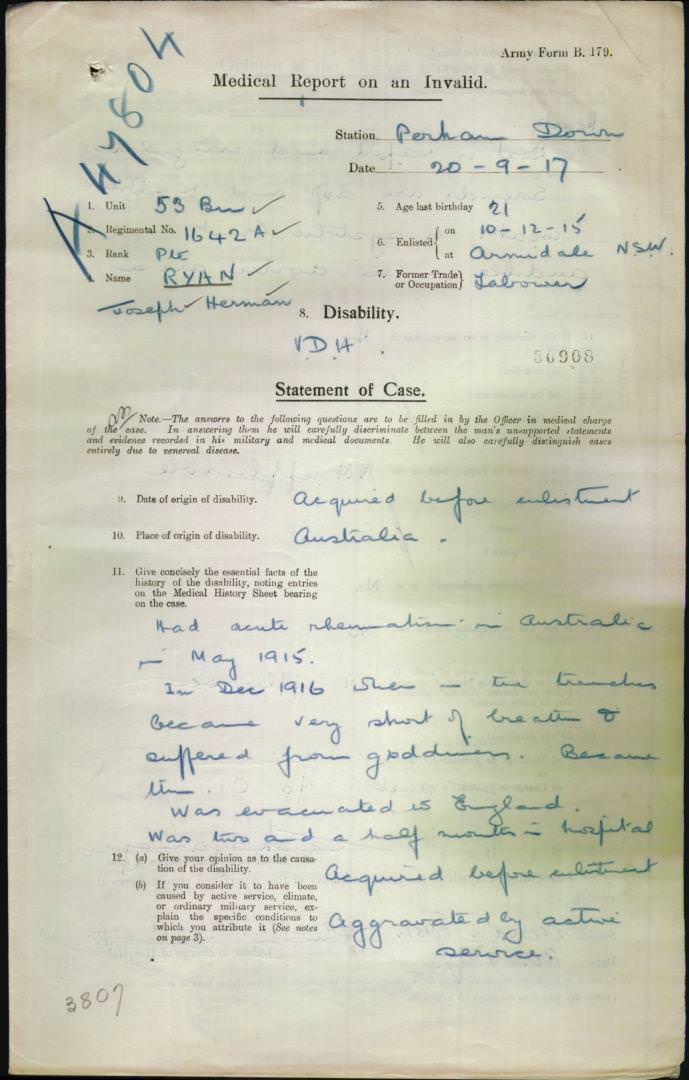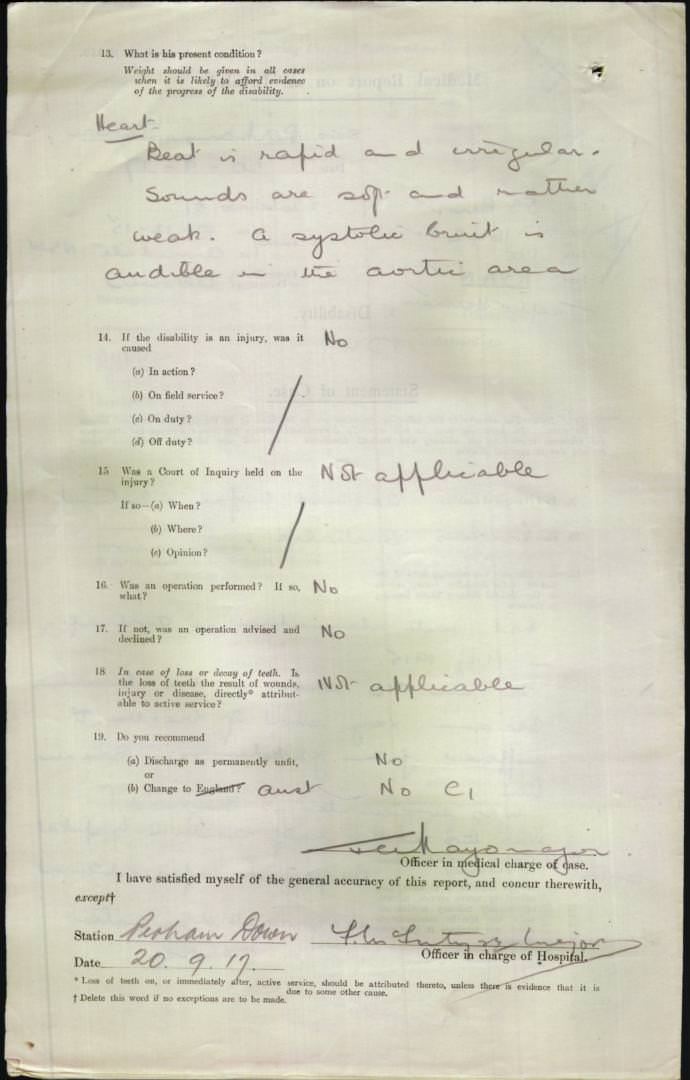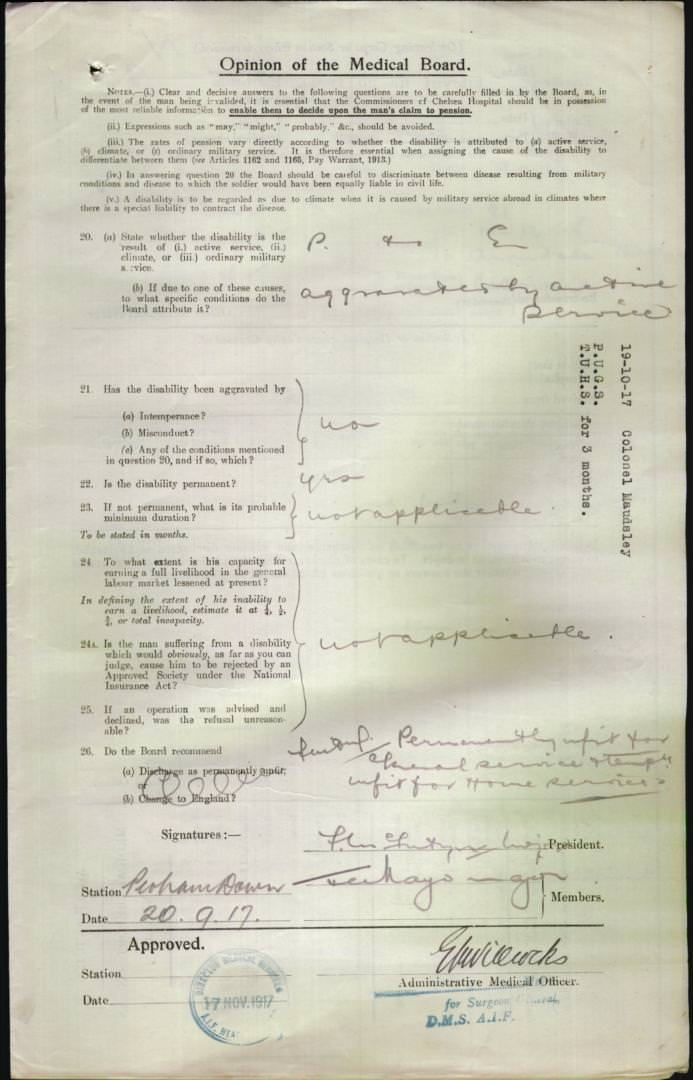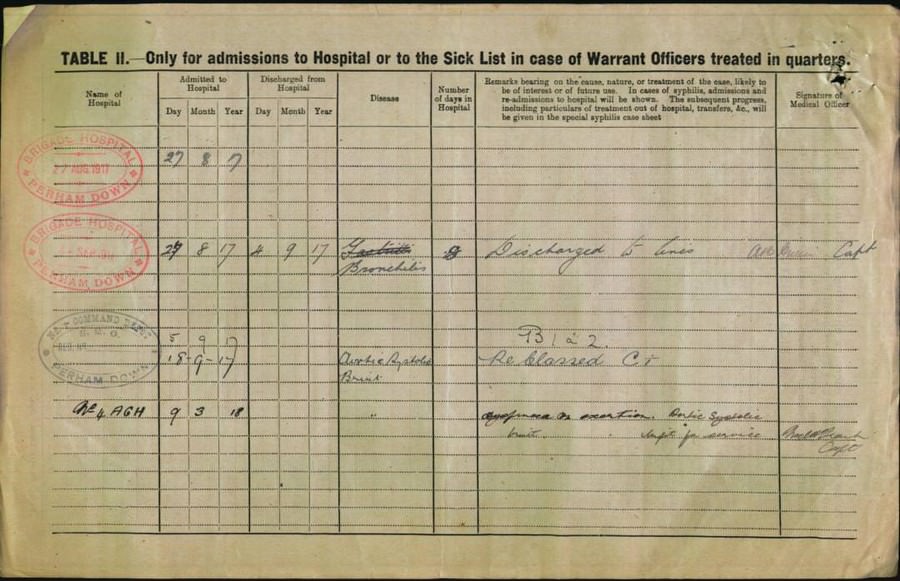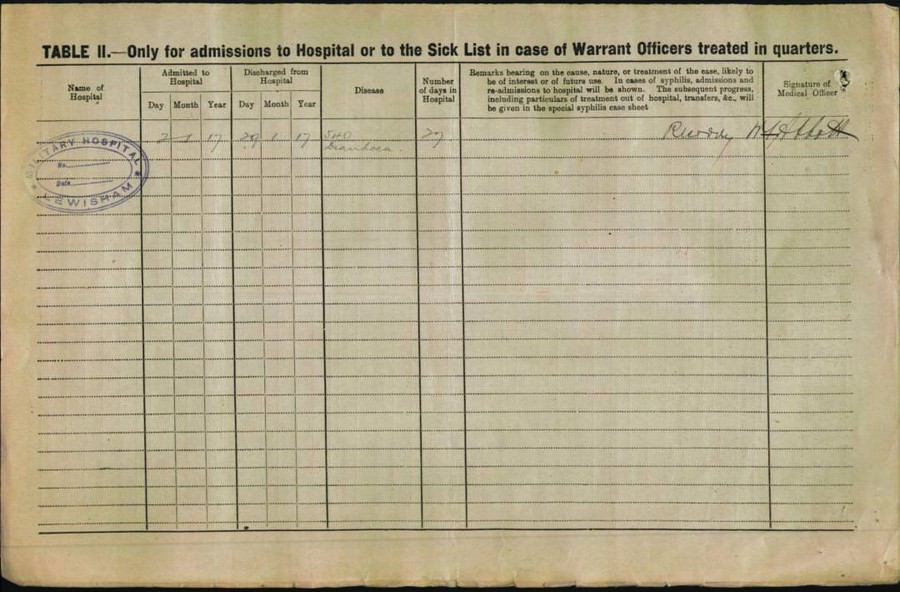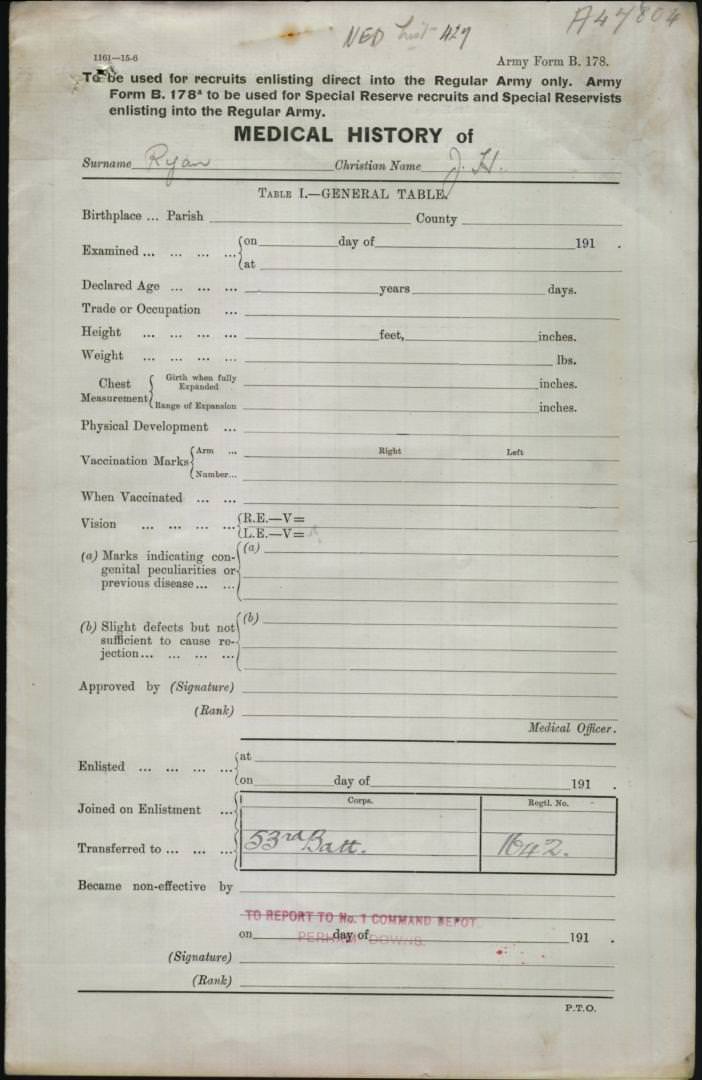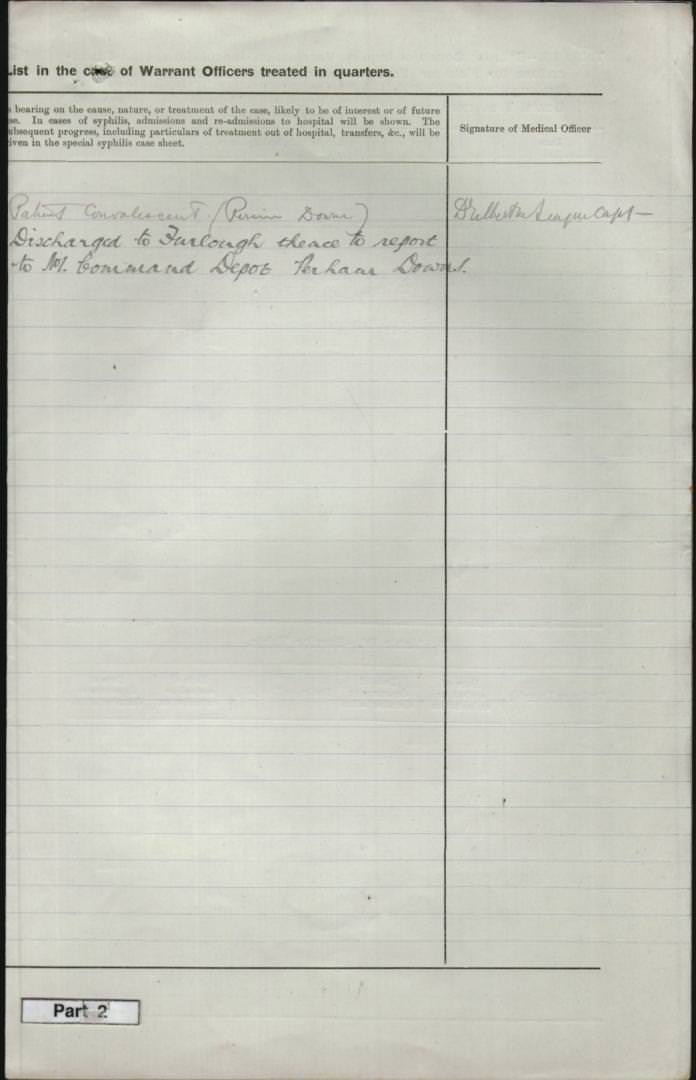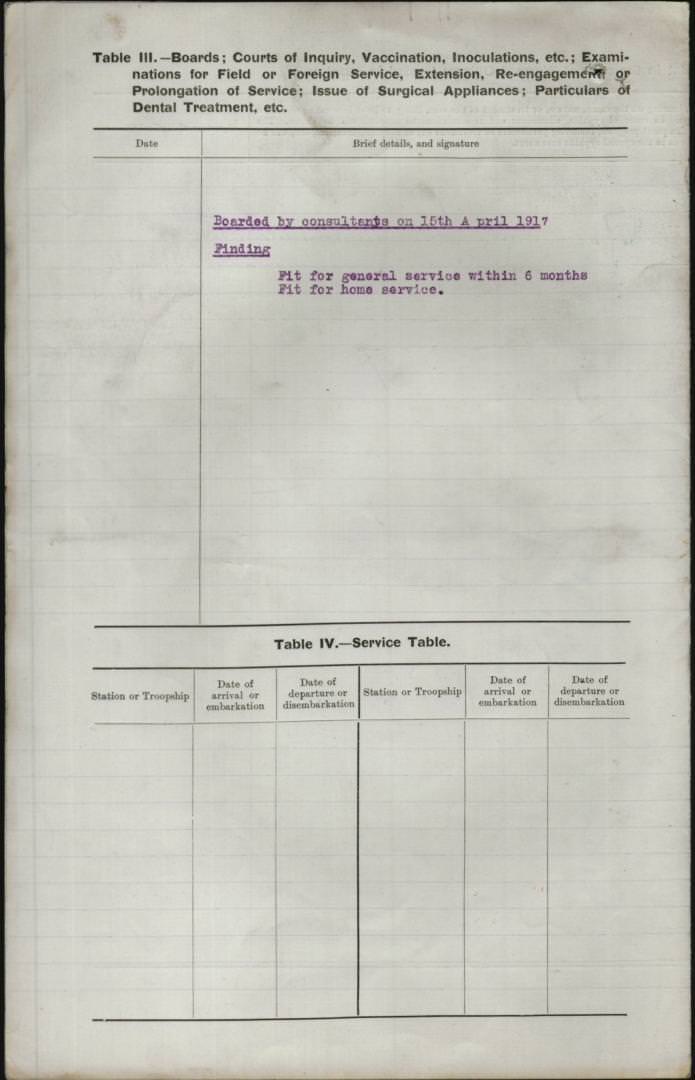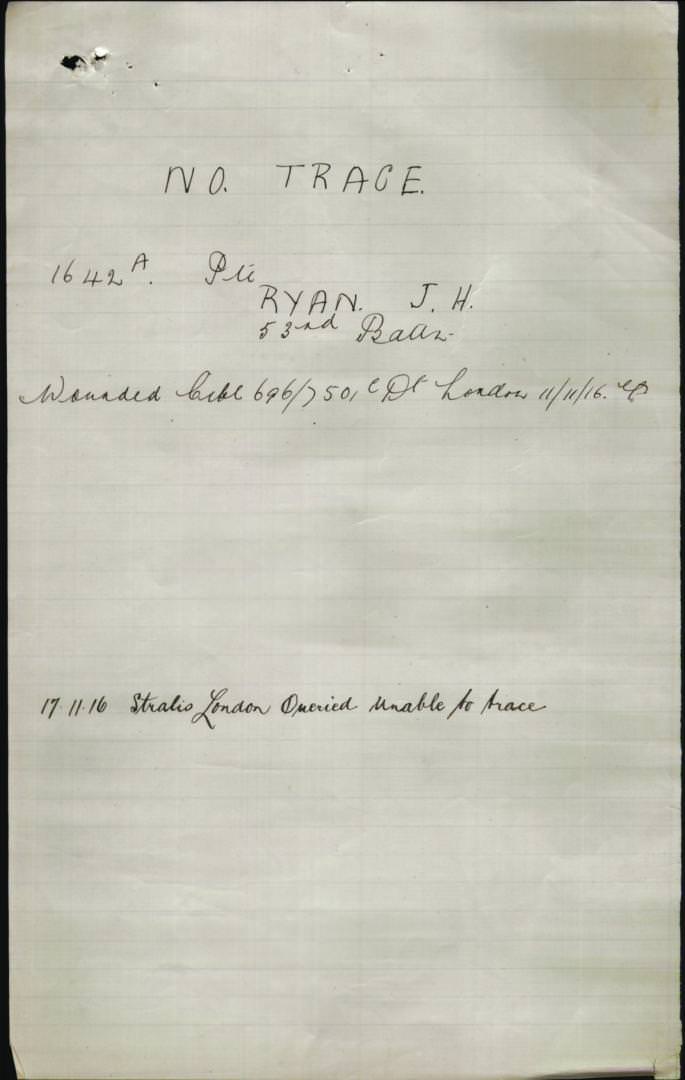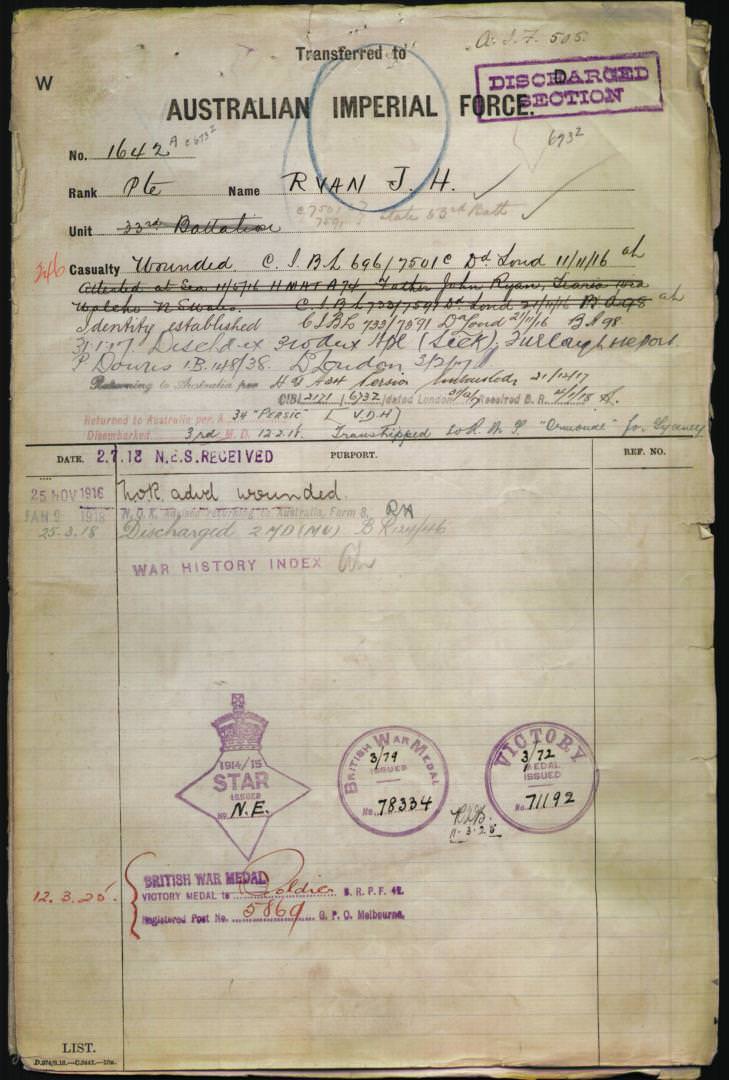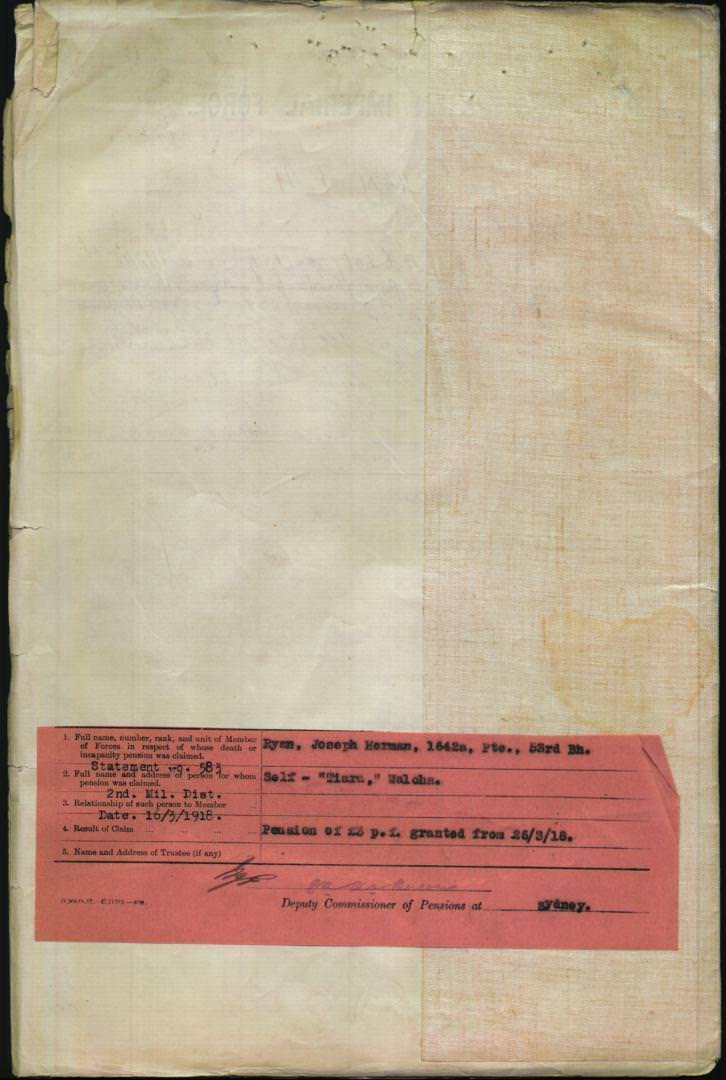
53rd BATTALION 34th BATTALION A.I.F.
Private: 1938 George William LEWIS.
Born: February 1872. London, England.
Partner: Kathleen Smythe. (Never Married)
Died: 7th June 1917. Died of Wounds Steenwerck, France.
Father: Unknown (Lived at Ramsgate, England)
Mother: Unknown (Lived at Ramsgate, England)
INFORMATION
George William Lewis enlisted with the 3rd Reinforcements, 53rd Battalion AIF on the 18th of March 1916 and left Sydney on board HMAT A37 "Barrambah" on the 23rd of June 1916 and disembarked at Plymouth England on the 25th of August and whilst in England George was transfered to the 34th Battalion and Taken on in Strength at Larks Hill before proceeding overseas for France via Southampton on the 21st of November 1916.

George was Wounded in Action during the battle of MESSINES on the the 7th of June 1917 when he received Severe Gun-Shot Wounds to his face and Jaw and was treated by the 9th Australian Field Ambulance before being transferred to the 2nd Australian Casualty Clearing Station where he Died of Wounds from the injuries he received. George is remembered with honour and is commemorated in perpetuity by the Commonwealth War Graves Commission at the TRIOS ARBRES MILITARY CEMETERY, STEENWERCK, France.
THE BATTLE OF MESSINES
7th June 1917
The 3rd Australian Divisions first major offencive was at Messines Ridge on the 7th June 1917. The Australian 3rd Division was a part of the II Anzac Corps which was allotted to the first assault. The 25th New Zealand, 3rd Australian Division with the 4th Australian Division in reserve. The 4th Division were battle hardened troops who had fought many major battles.The 3rd Australian Division were having problems getting to the "jump off" point. The day before the 9th and 10th Infantry Brigades were bombarded by German Gas-Shells around Hill 63 and Plugstreet Wood. Many of the Aussies were not wearing gas masks, but dispite this they pressed on even though they received 500 casulties.
They made it to the "jump off" point but only just with some of the men from the 9th and 10th going straight over the top without stopping. The mines went up and the attack commenced behind a protective barrage. The II Anzac Corps were attacking on the right with their objective being the southern shoulder of the ridge which included Messines, the Dover and St Yves areas as far south to the east of Plugstreet Wood.
Major General Sir John MONASH's 3rd Division had to contend with a tricky 3 mile approach out of Plugstreet Wood and after the German gas attack, but they were not detered. The 9th Infantry Brigade under Brigadier General A JOBSON and the 10th Infantry Brigade under Brigadier General W R NICHOLL had just made the jumping off point but some of the men did not stop, going straight into the assault from the approach march.
Their objective lay between St Yves and the Douve. The mines at Trench 127 and Trench 12 at Factory Farm were laid to aid this task. The explosions erupted a few seconds before zero hour and created craters of 200 feet in diameter, completely obliterating the German defence line as the 9th and 10th Infantry Brigades went over the top. The mine crates forced the 9th and 10th Brigades to veer to the left and right which caused some confusion with the main assault. It is testimony to the quality of training that every man knew the ground, tasks and objectives so well.
Private: 1804 John Carroll 33rd Battalion, rushed the enemy's trench and bayoneted four of the German occupants. He then noticed a comrade in difficulties and went to his assistance, killing another German. He then attacked single handed a German Machine Gun Team, killing all three of them and capturing the gun. He later rescued two of his comraded who had been buried alive by German Shell Fire, and in spite of heavy shelling and machine gun fire he dug them out alive and saved them from certain death. John was awarded the Victoria Cross.
The German foward zone was completely engulfed and taken by the main assault. The two supporting battalions of each brigade then passed the leading battalion to continue the advance. The men were constantly re-supplied and the ridge was taken. There were many German prisoners taken during the offencive. The 3rd Division was well ahead with the 9th Infantry Brigade pushing on beyond Grey Farm, and on the right the 10th Infantry Brigade were veering left towards Septieme Barn north of Douve.
The German resistance was heavy but was generally brushed aside by tanks and artillery before the infantry had to become too involved.The 4th Bavarian Divisions Artillery had mede little impact, but as the day wore on the 3rd Division and later the 4th Australian Division received many casulties from German artillery. (70% of all casulties during WW1 were from artillery).
By 9:00am nearly 6 hours after the assault began the Germans were in dissaray, but there was a major problem as the Australians received less casulties as anticipated and when ordered to dig into the ridge they had so many men, that some could not find shelter. the 35th battalion were bug in around Seaforth Farm.
The second phase of the operation was to take the Oosttaverne Line. The 3rd Australian Division would now be in reserve with the 4th Division attacking. The 9th Infantry Brigade (33-34-35-36Bn) were near Thatched Cottage facing Warneton. The river Lys was to their right and the Plugstreet Wood was now behind them.
Once their objectives were taken the troops consolidated. A barrarge to stop and counter attack was shortnened and caught three battalions which had to retire. By 9:00pm this part of the Oosttaverne Line was abandonded. At 10:45pm General Godley ordered the 3rd and 4th Divisions to retake it. This they did by the early hours of the 8th of June.
The Battle for Messines Ridge during May-June 1917 saw 35 officers and 1,631 other ranks looses their lives.
9th Infantry Brigade Casualties.
| 33rd Battalion. AIF | 8 Officers | 382 Other ranks |
| 34th Battalion. AIF | 10 Officers | 378 Other ranks |
| 35th Battalion. AIF | 5 Officers | 431 Other ranks |
| 36th Battalion. AIF | 9 Officers | 421 Other ranks |
| 9th Machine Gun Company. AIF | 2 Officer | 17 Other ranks |
| 9th Light Trench Mortar Battery. | 1 Officer | 2 Other ranks |
 George's Victory Medal:42386 to PTE 1938 G W LEWIS 34 BN AIF was acquired from a dealer in Melbourne, Victoria in May 2008 and is now in the Harrower Collection. His medal's were first issued to Kathleen Smythe in 1922 for her eldest son Joseph Bede Lewis Smythe. George's Memorial Plaque was first issued in England and re issued to Kathleen Smyth on the 25th of January 1925. His plaque was acquired in July 2016 and has been re united with his Victory Medal in the Harrower collection.
George's Victory Medal:42386 to PTE 1938 G W LEWIS 34 BN AIF was acquired from a dealer in Melbourne, Victoria in May 2008 and is now in the Harrower Collection. His medal's were first issued to Kathleen Smythe in 1922 for her eldest son Joseph Bede Lewis Smythe. George's Memorial Plaque was first issued in England and re issued to Kathleen Smyth on the 25th of January 1925. His plaque was acquired in July 2016 and has been re united with his Victory Medal in the Harrower collection.
Family Information
George was a single 44 year old Yardsman from the Woolpack Hotel, Parramatta upon enlistment. His next of kin who he was in a marital relationship with, was Miss Kathleen Smythe of "Hartnell" 16 Tintern Road, Ashfield N.S.W. George and Kathleen had 2 sons together Joseph Bede Lewis (Smythe) and Clarence Edward Lewis (Smythe) both born out of wedlock. On the 26th of January 1922 Kathleen and he 2 sons moved to "Neoola" on the corner of Glebe and Dick Street's, Randwick, New South Wales.
Military Records
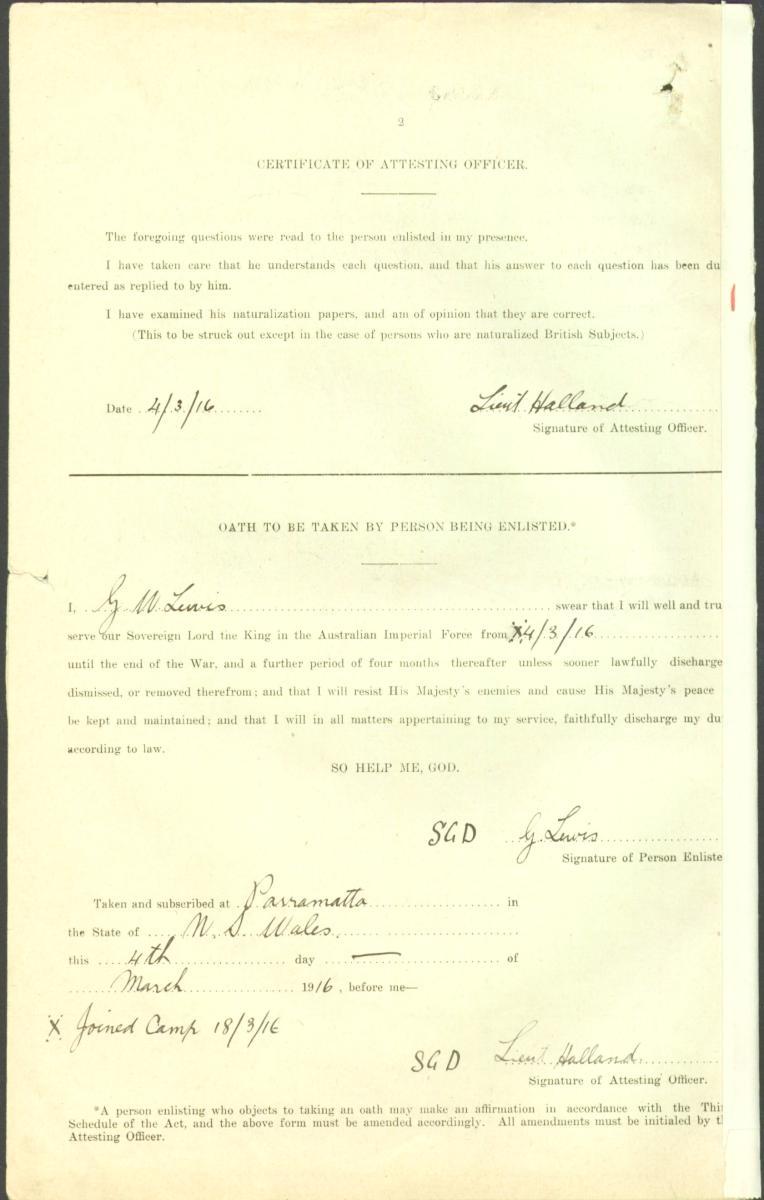
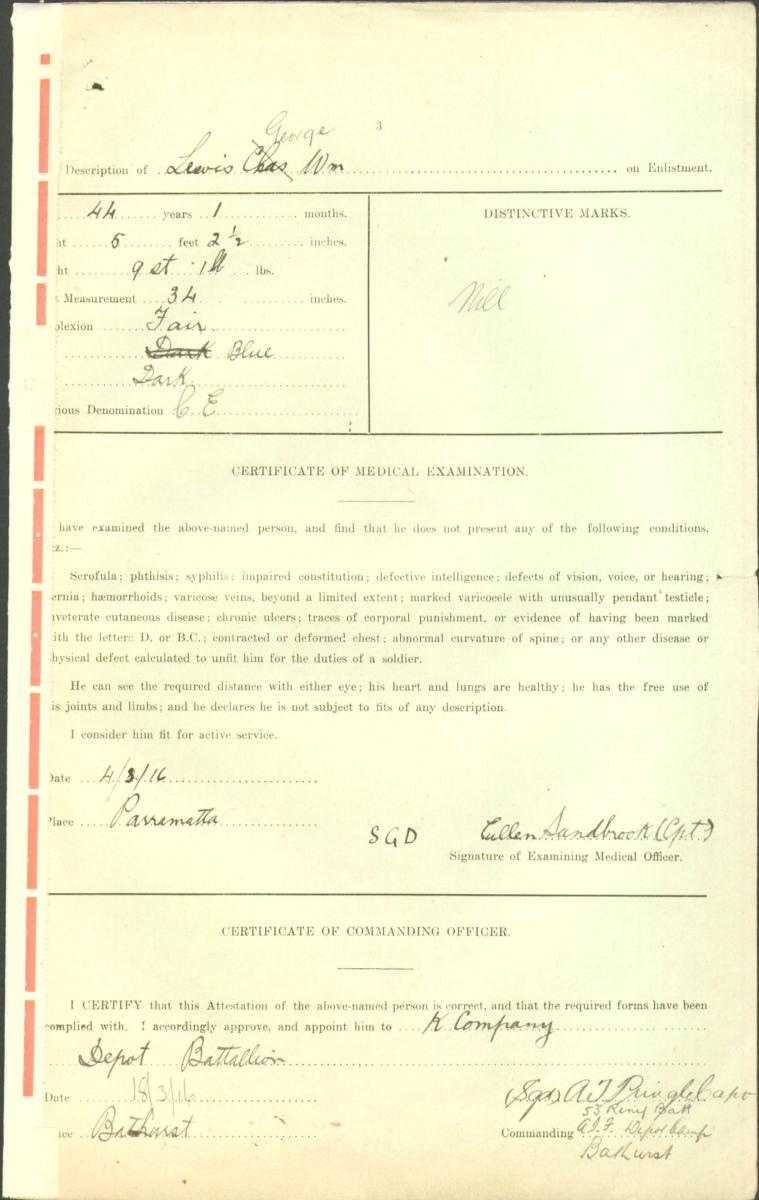
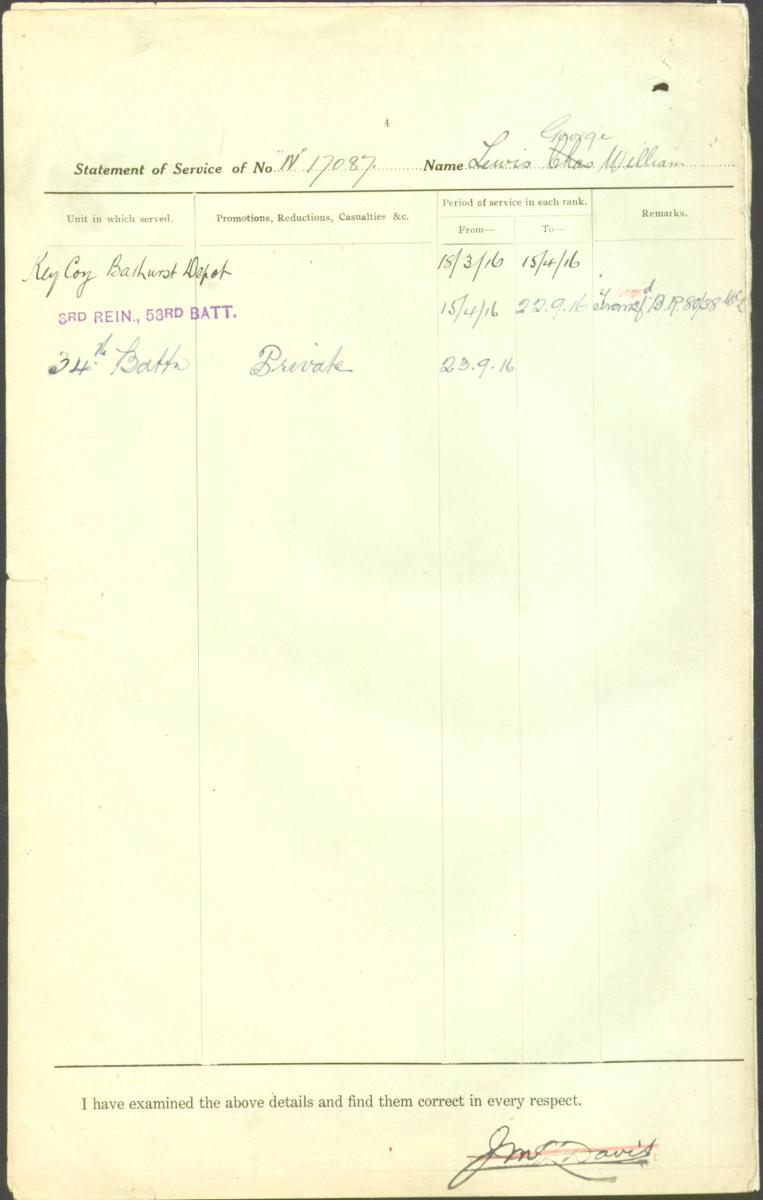
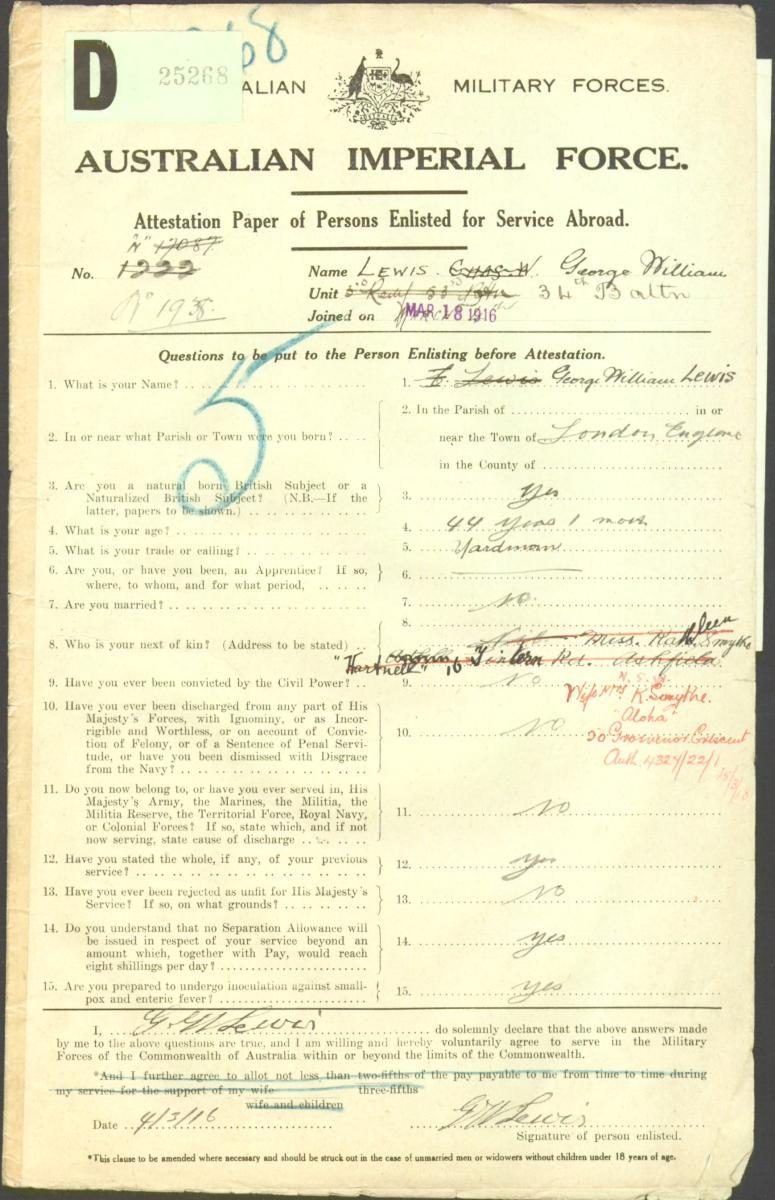
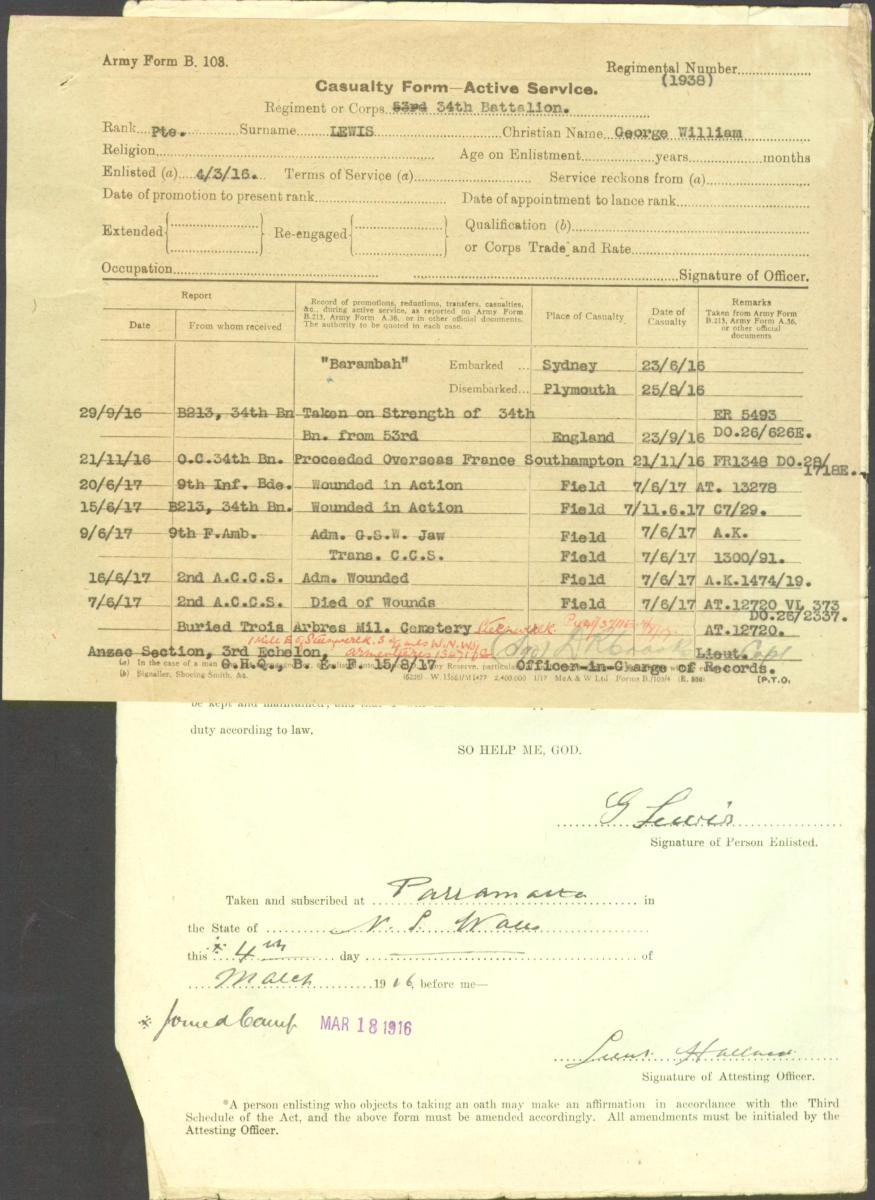

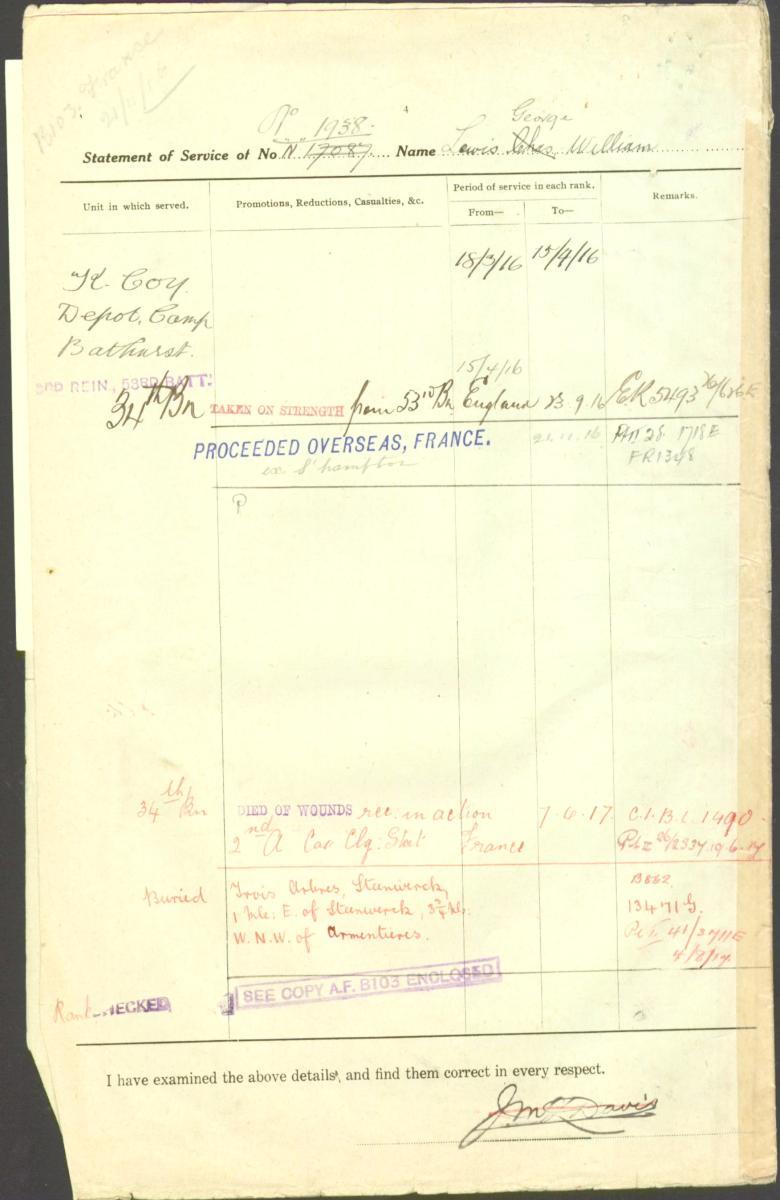
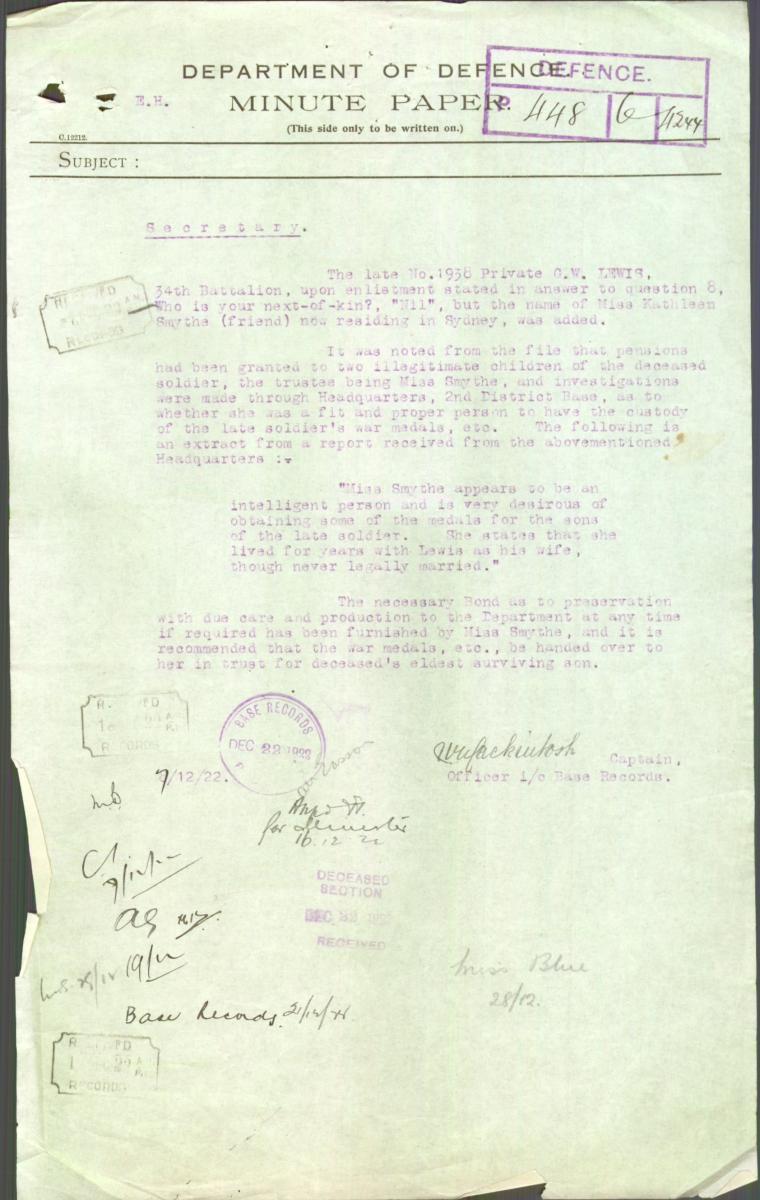
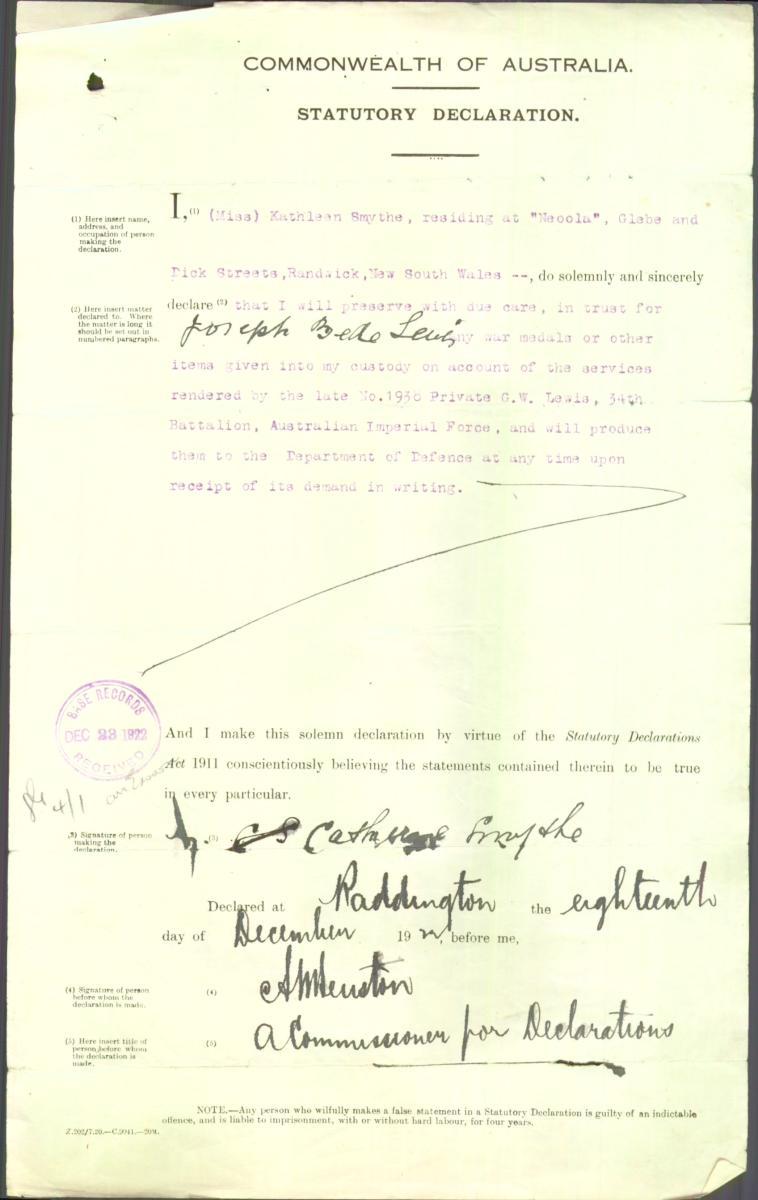
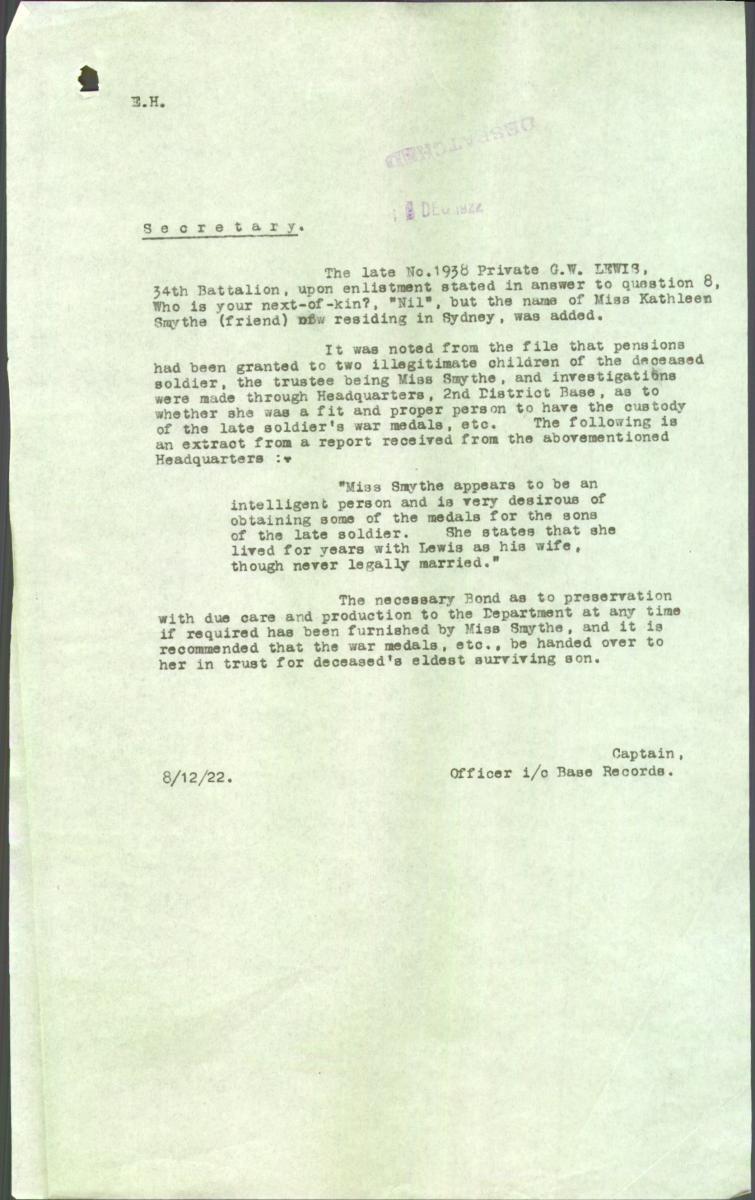
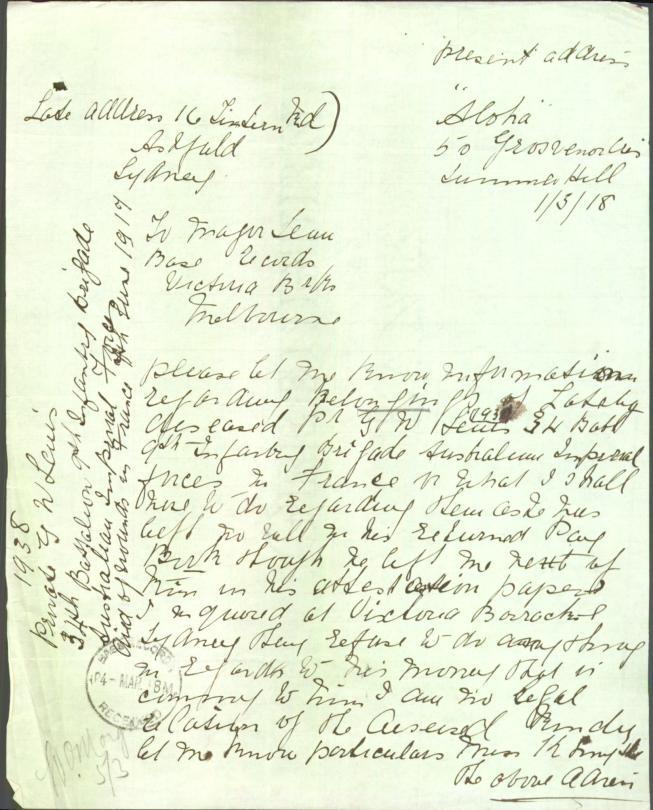
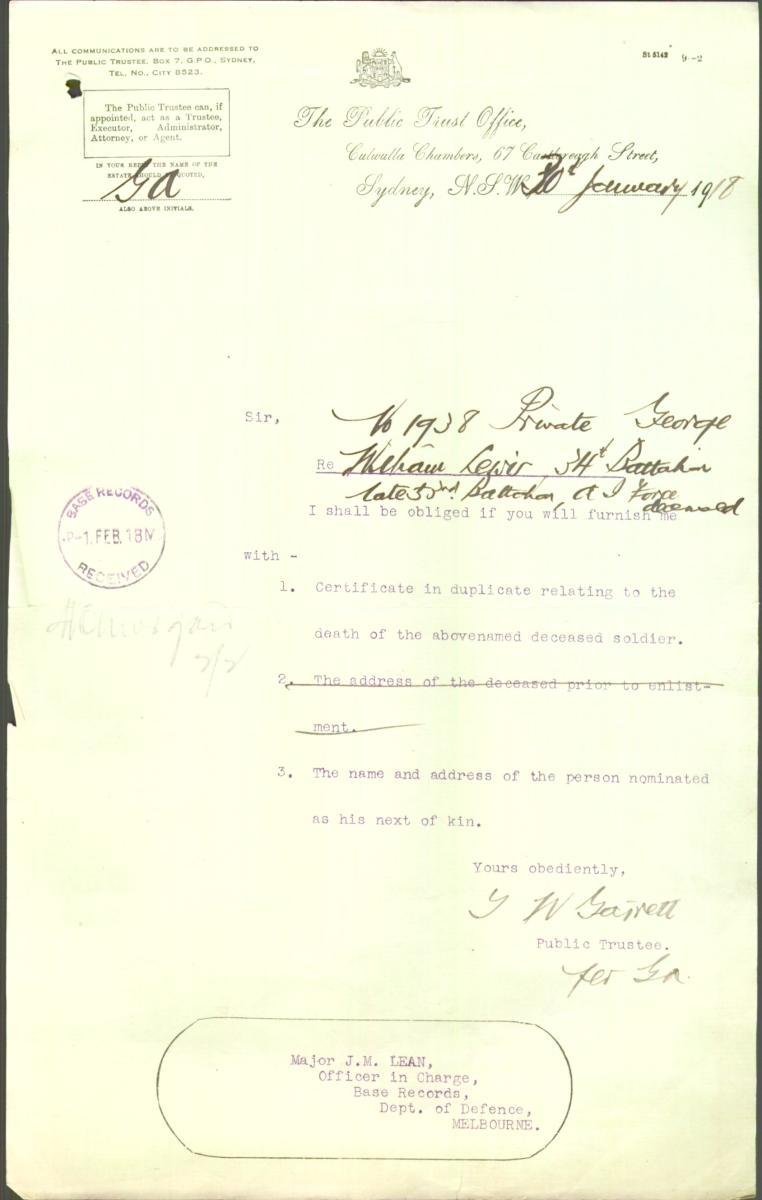
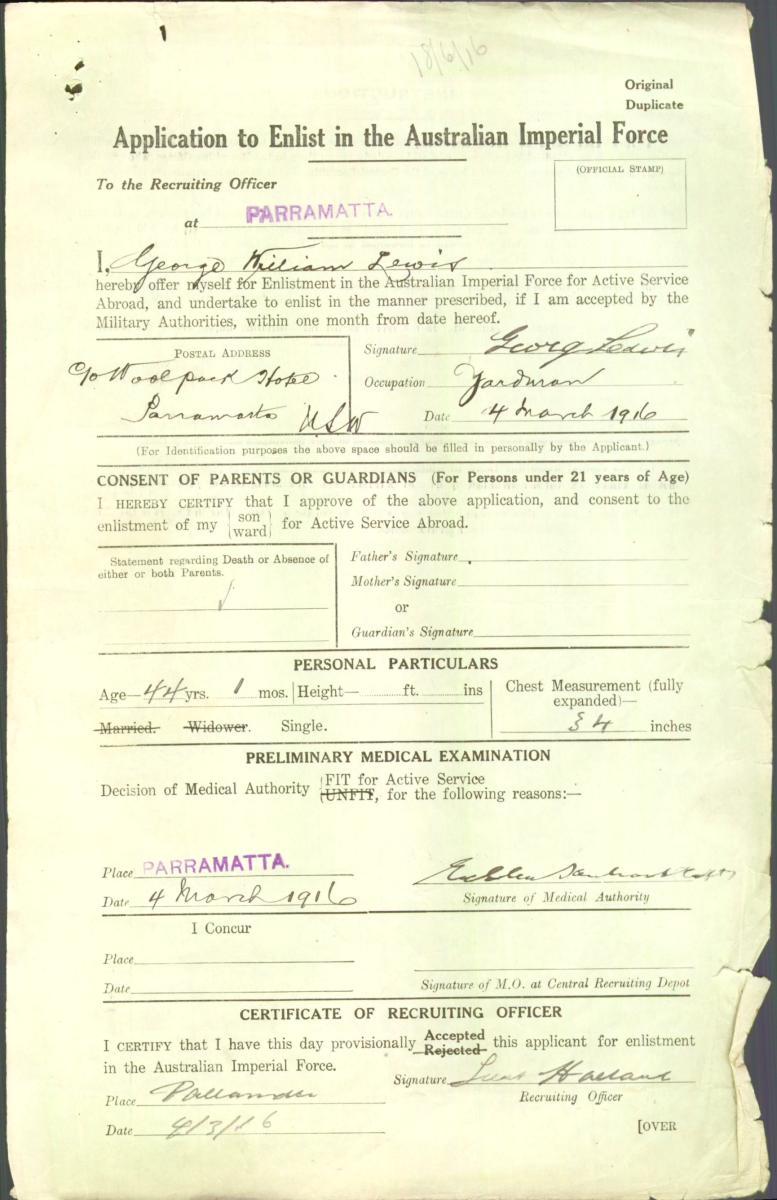
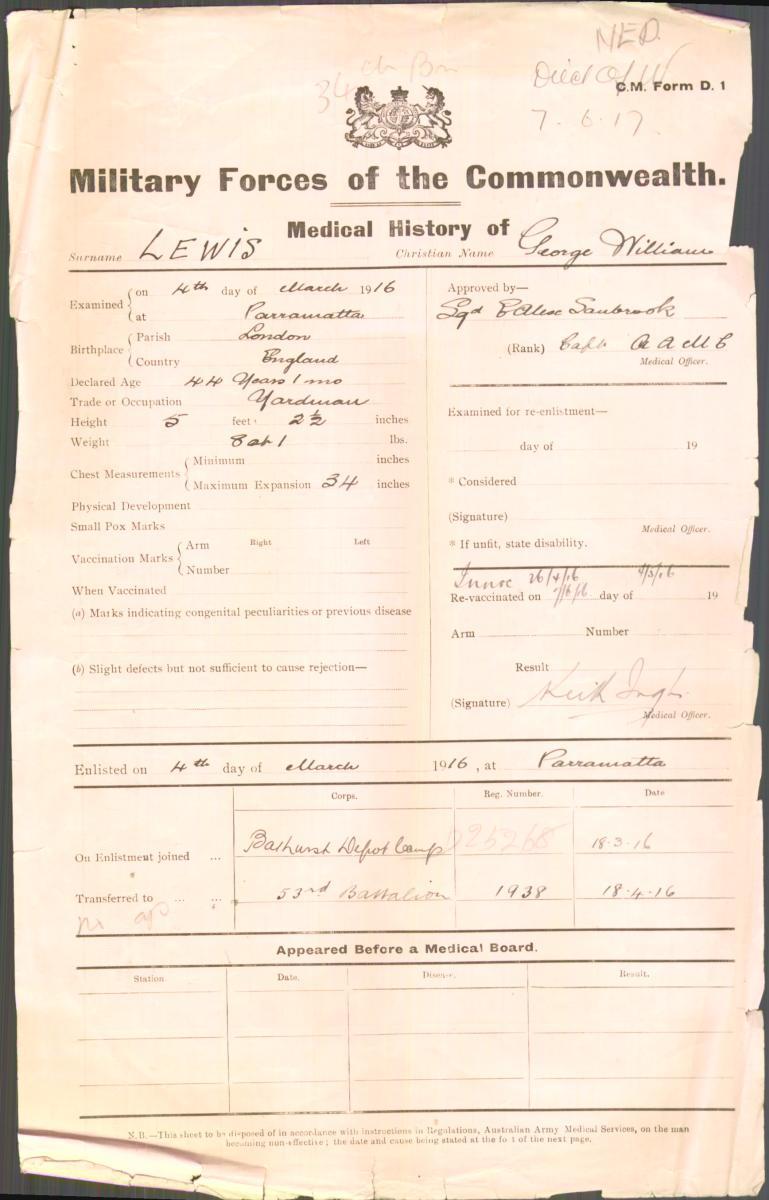
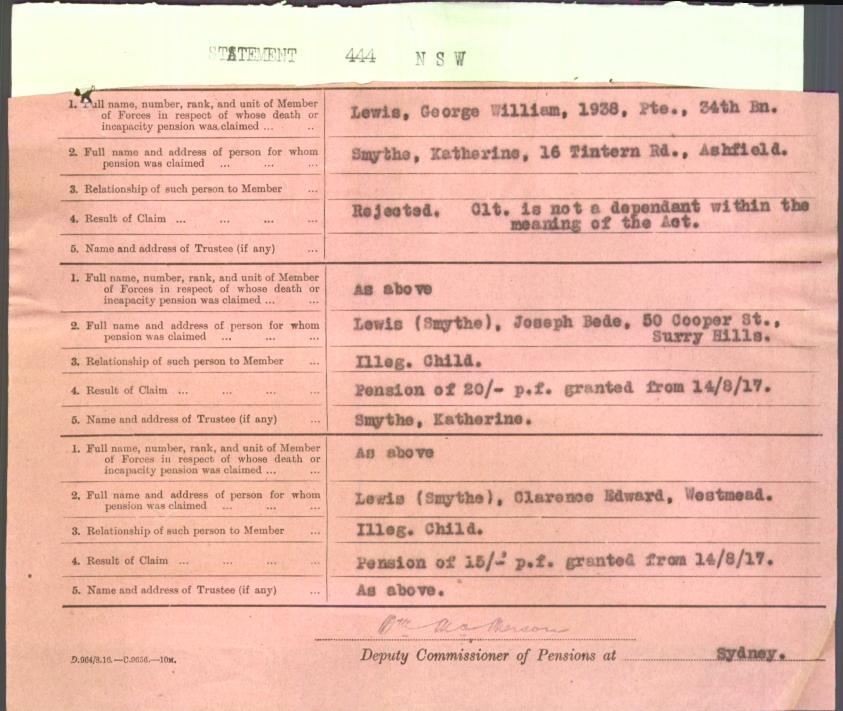
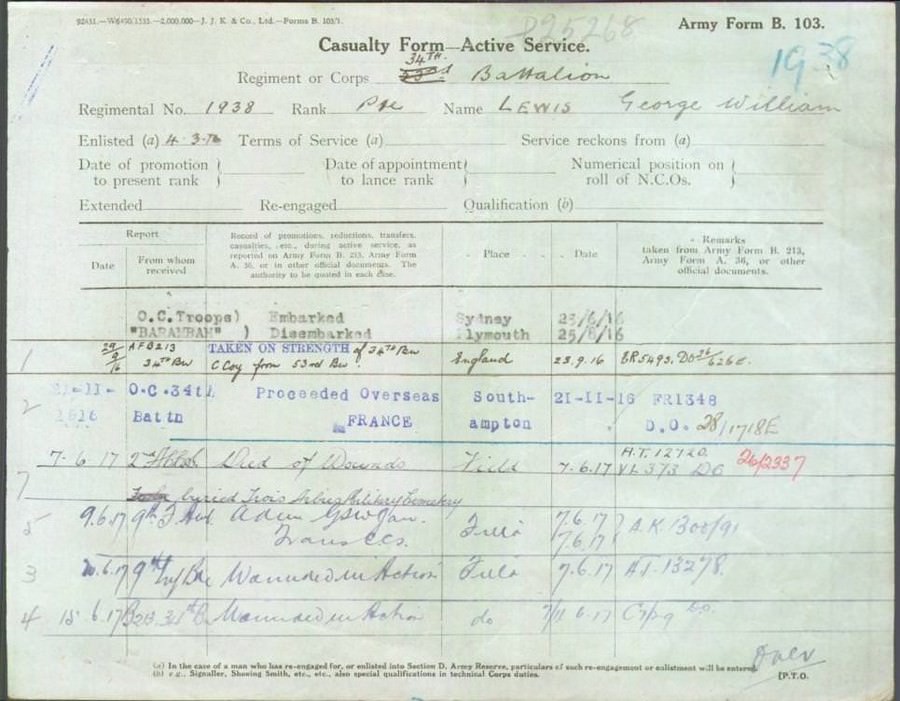

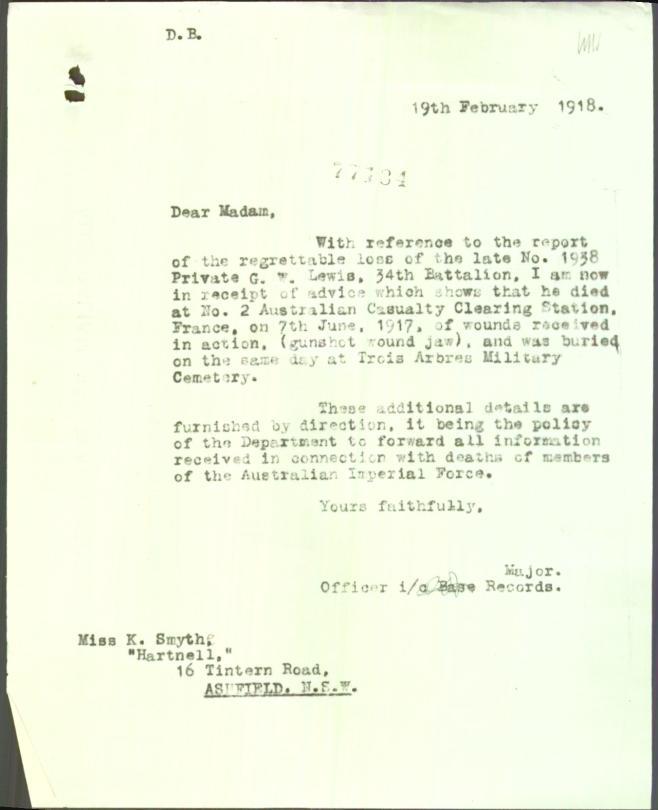
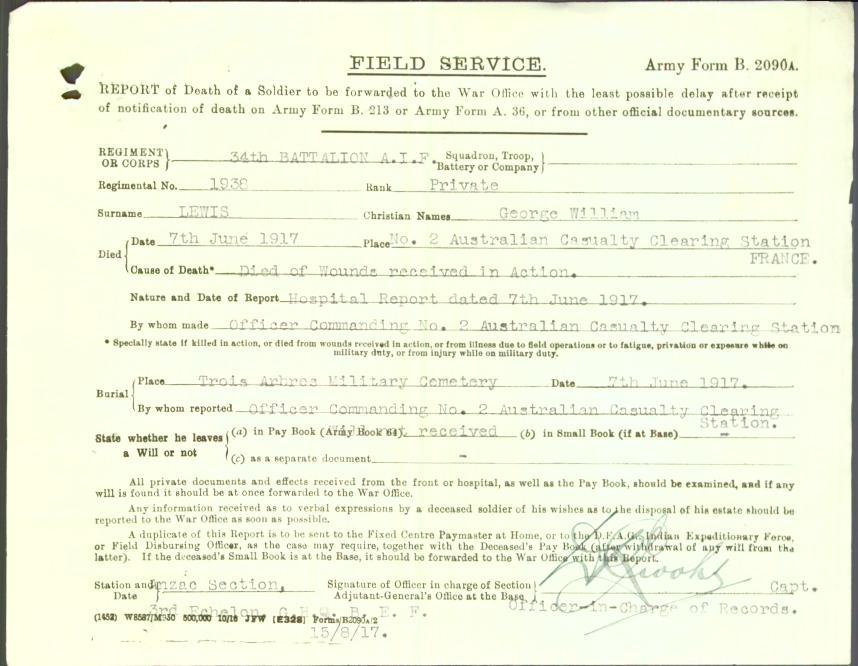

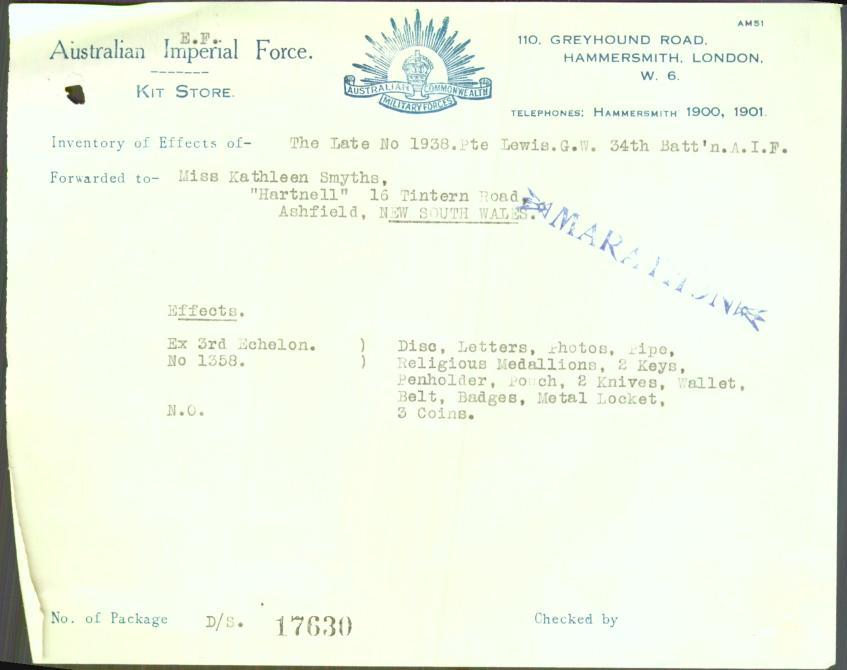
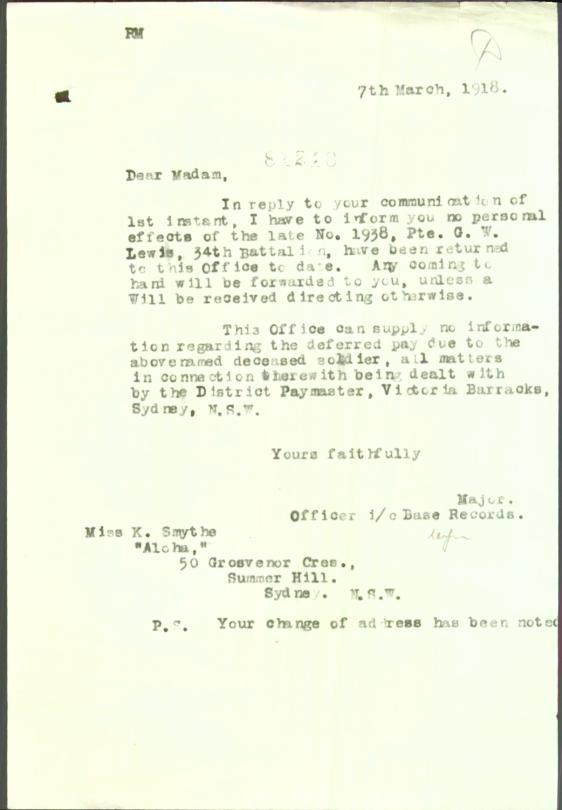
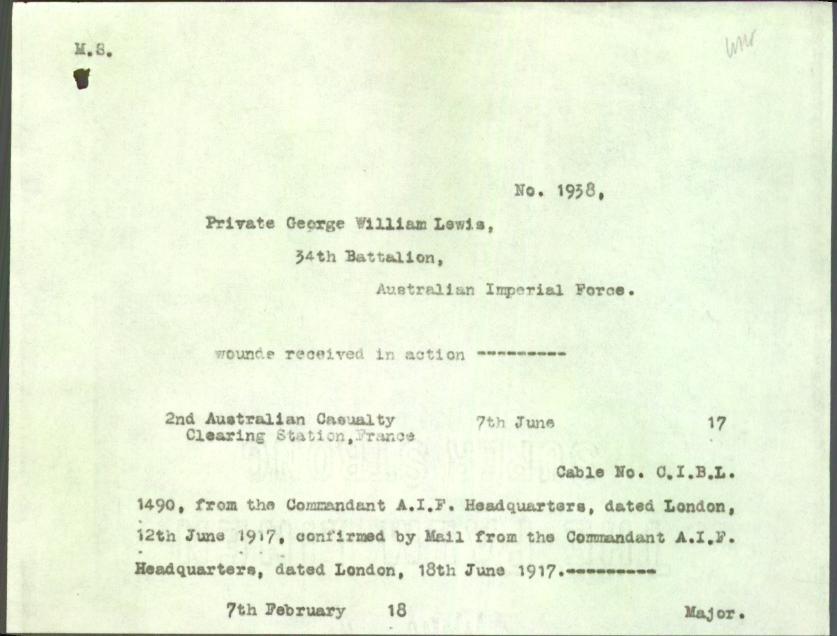
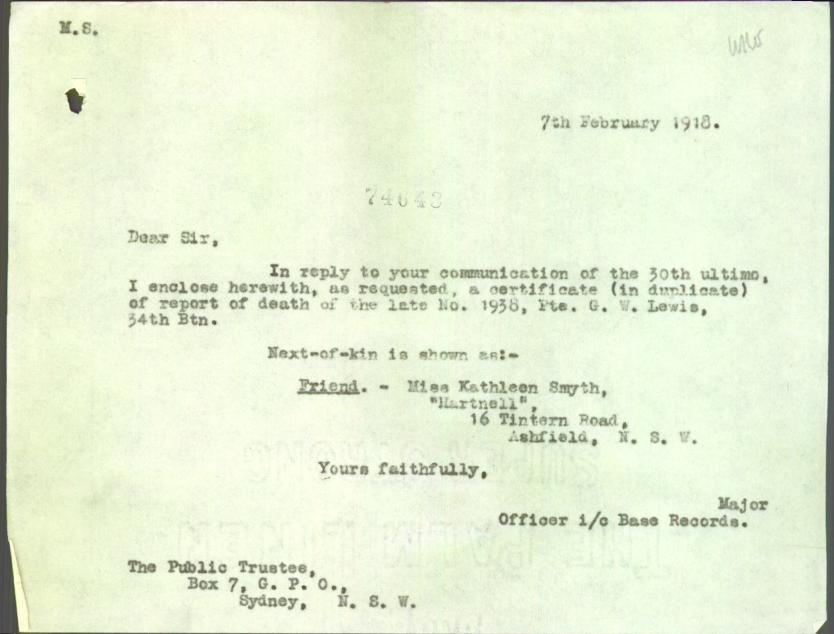


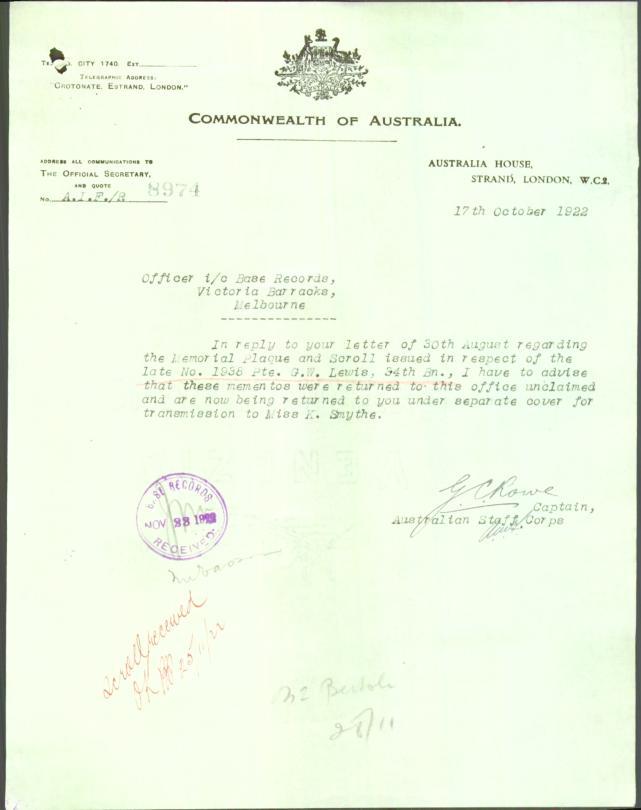



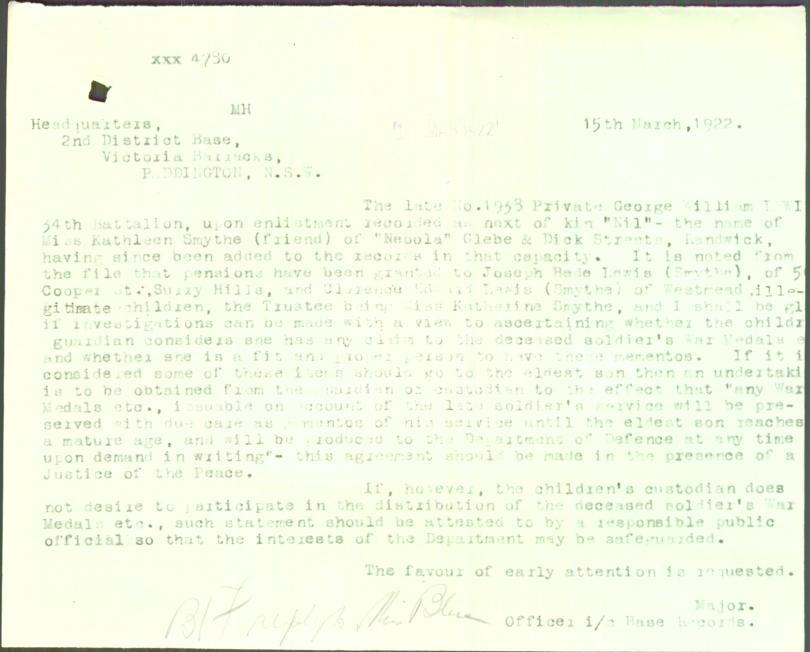
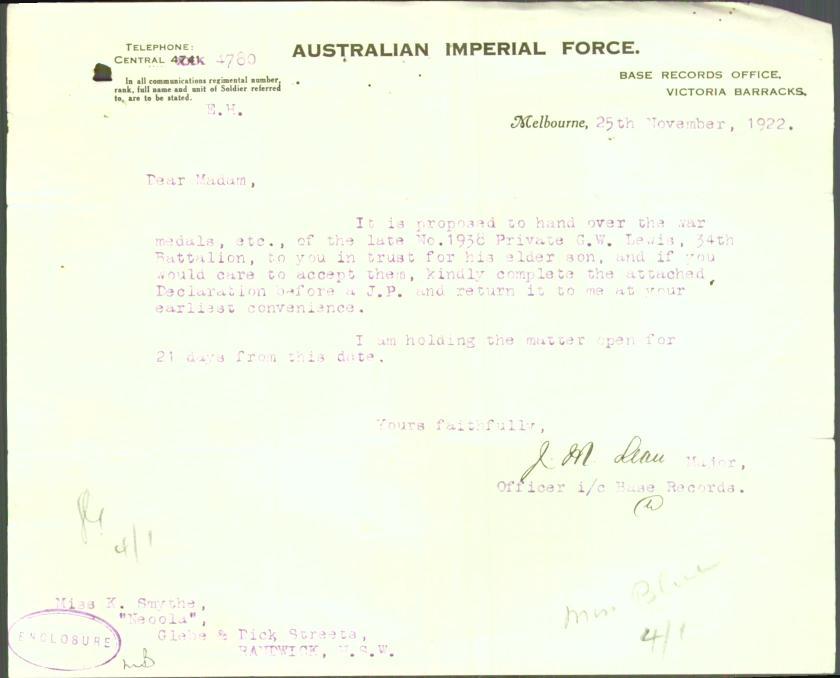
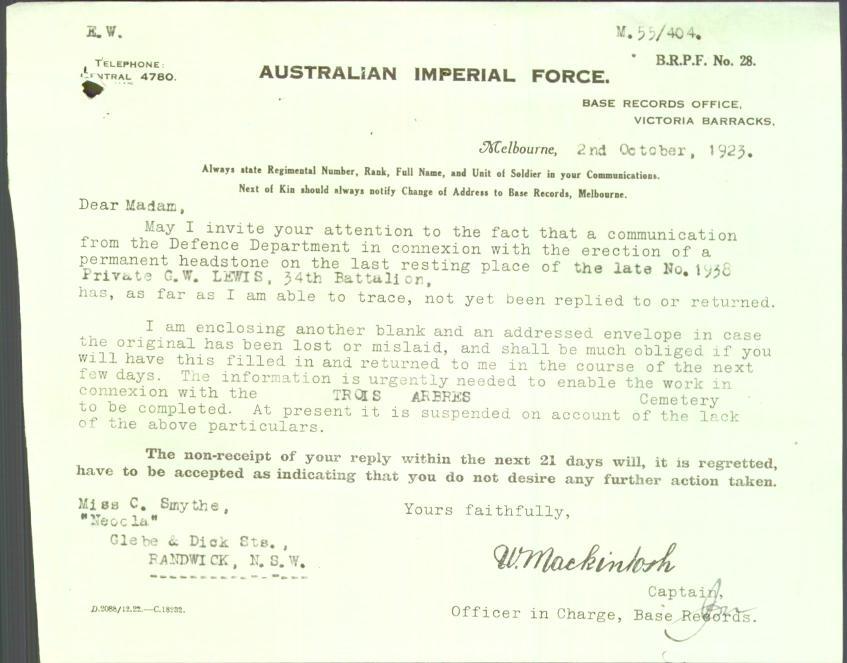
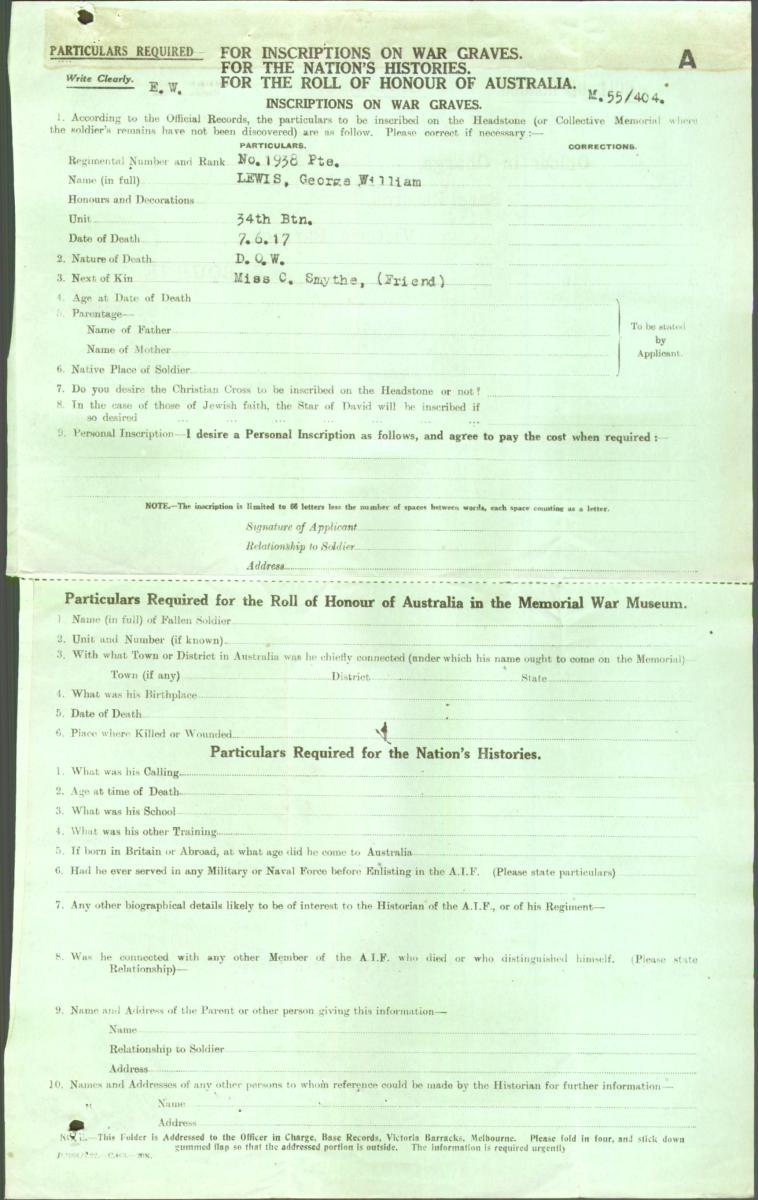
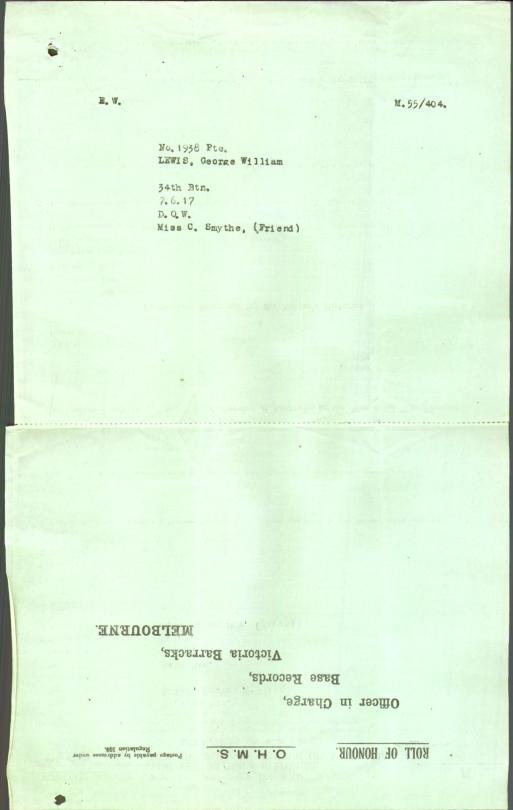



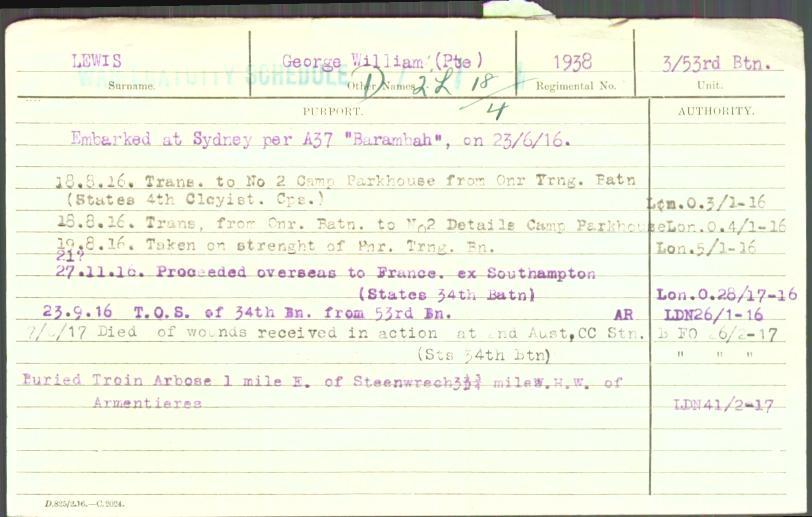

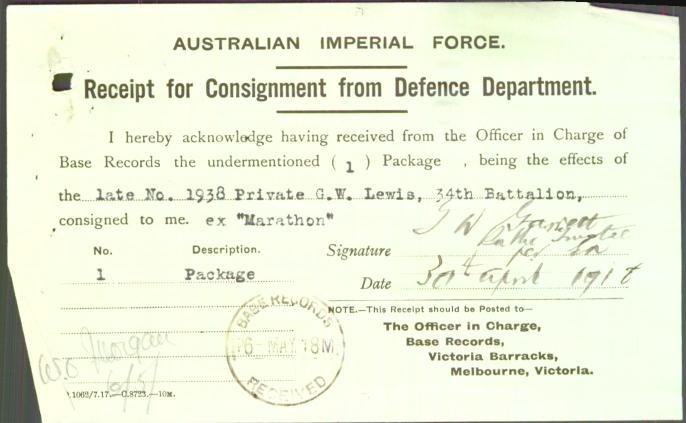
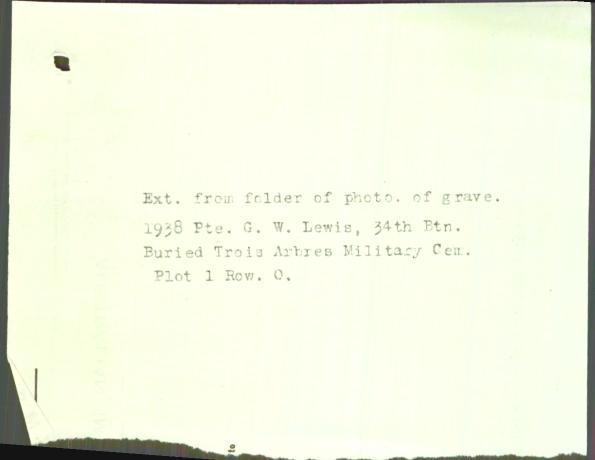

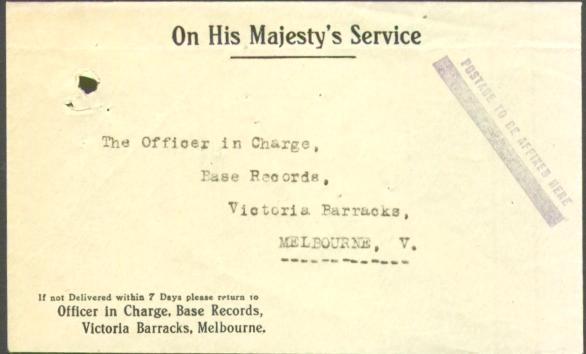
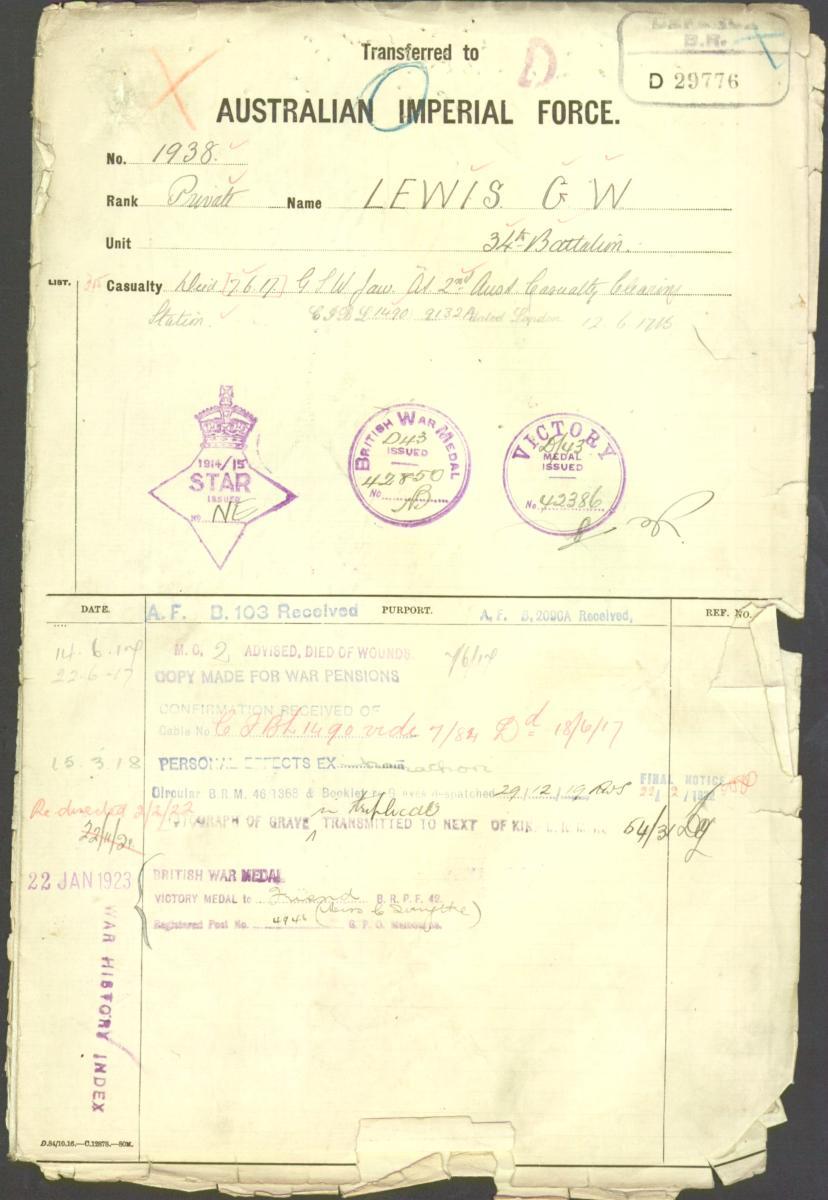
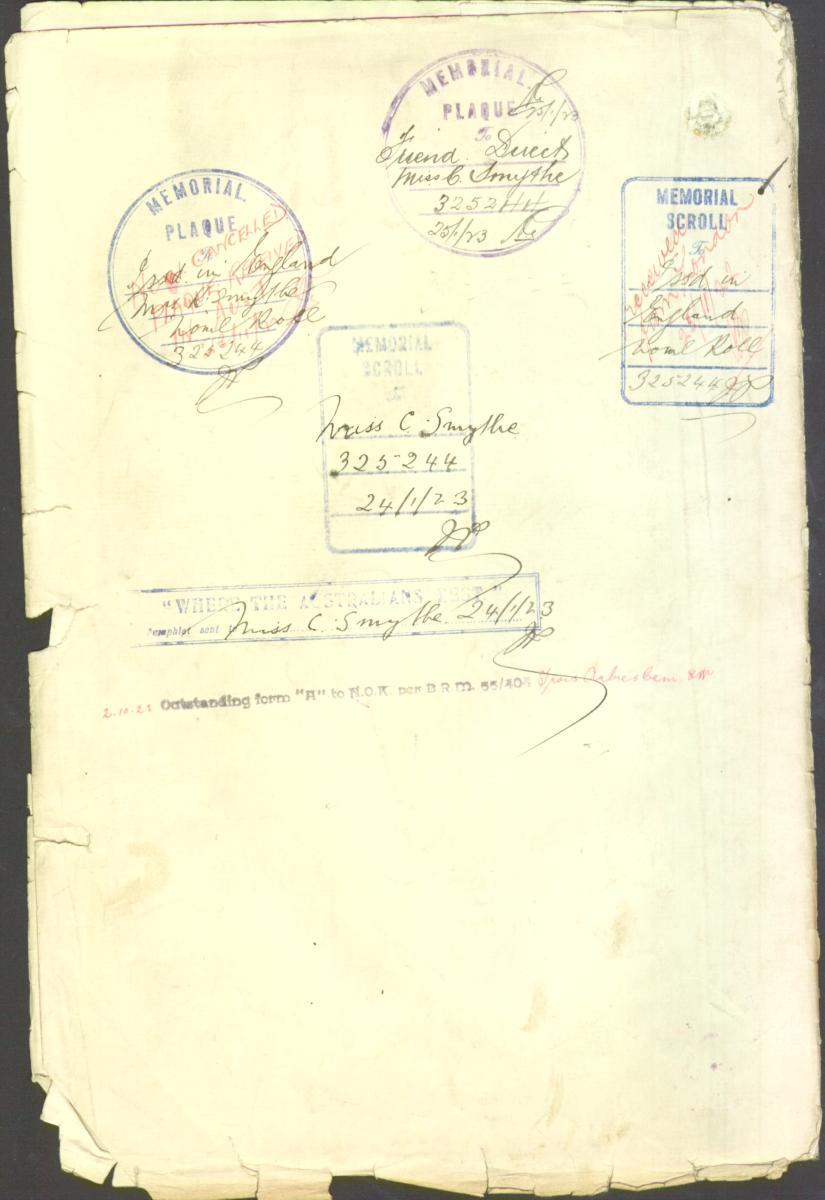
© Commonwealth of Australia (National Archives of Australia)
Under Construction; 25/05/2008-30/07/2016.

